Forums
- Forums
- Axis And Allies Forum
- General Discussion
- Aviation News
Aviation News
Post a reply
- Go to Previous topic
- Go to Next topic
- Go to Welcome
- Go to Introduce Yourself
- Go to General Discussion
- Go to Screenshots, Images and Videos
- Go to Off topic
- Go to Works in Progress
- Go to Skinning Tips / Tutorials
- Go to Skin Requests
- Go to IJAAF Library
- Go to Luftwaffe Library
- Go to RAF Library
- Go to USAAF / USN Library
- Go to Misc Library
- Go to The Ops Room
- Go to Made in Germany
- Go to Campaigns and Missions
- Go to Works in Progress
- Go to Juri's Air-Raid Shelter
- Go to Campaigns and Missions
- Go to Works in Progress
- Go to Skinpacks
- Go to External Projects Discussion
- Go to Books & Resources
-
 Main AdminA U.S. Navy F/A-18E Super Hornet departs after receiving fuel from a 340th Expeditionary Air Refueling Squadron KC-135 Stratotanker during a mission over Iraq in support of Operation Inherent Resolve, Oct. 14, 2017. The F/A-18E is capable across the full mission spectrum: air superiority, fighter escort, reconnaissance, aerial refueling, close air support, air defense suppression and precision strikes. (U.S. Air Force photo by Staff Sgt. Michael Battles)
Main AdminA U.S. Navy F/A-18E Super Hornet departs after receiving fuel from a 340th Expeditionary Air Refueling Squadron KC-135 Stratotanker during a mission over Iraq in support of Operation Inherent Resolve, Oct. 14, 2017. The F/A-18E is capable across the full mission spectrum: air superiority, fighter escort, reconnaissance, aerial refueling, close air support, air defense suppression and precision strikes. (U.S. Air Force photo by Staff Sgt. Michael Battles)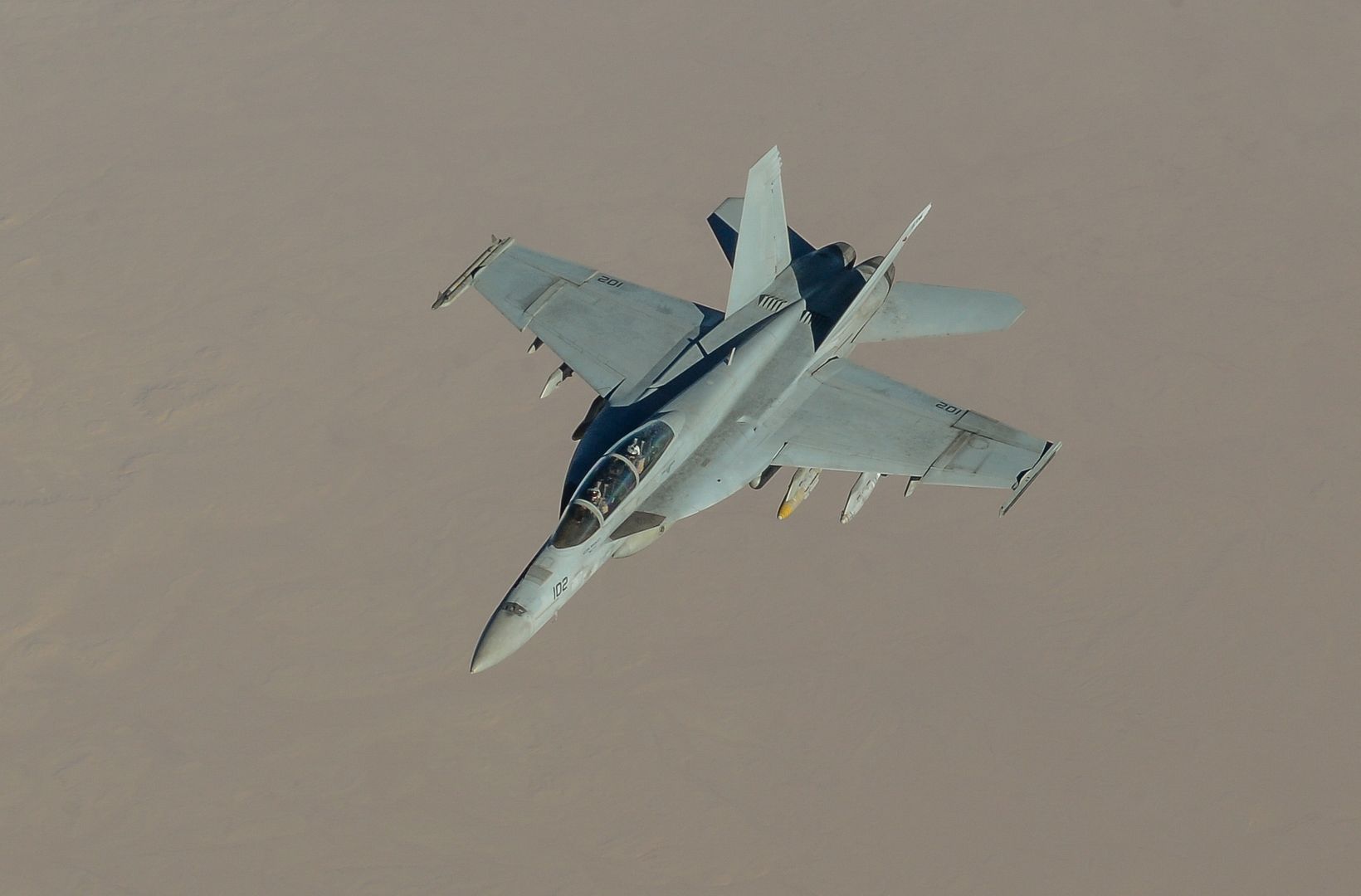
A U.S. Navy F/A-18E Super Hornet departs after receiving fuel from a 340th Expeditionary Air Refueling Squadron KC-135 Stratotanker during a mission over Iraq in support of Operation Inherent Resolve, Oct. 10, 2017. The F/A-18E is capable across the full mission spectrum: air superiority, fighter escort, reconnaissance, aerial refueling, close air support, air defense suppression and precision strikes. (U.S. Air Force photo by Staff Sgt. Michael Battles)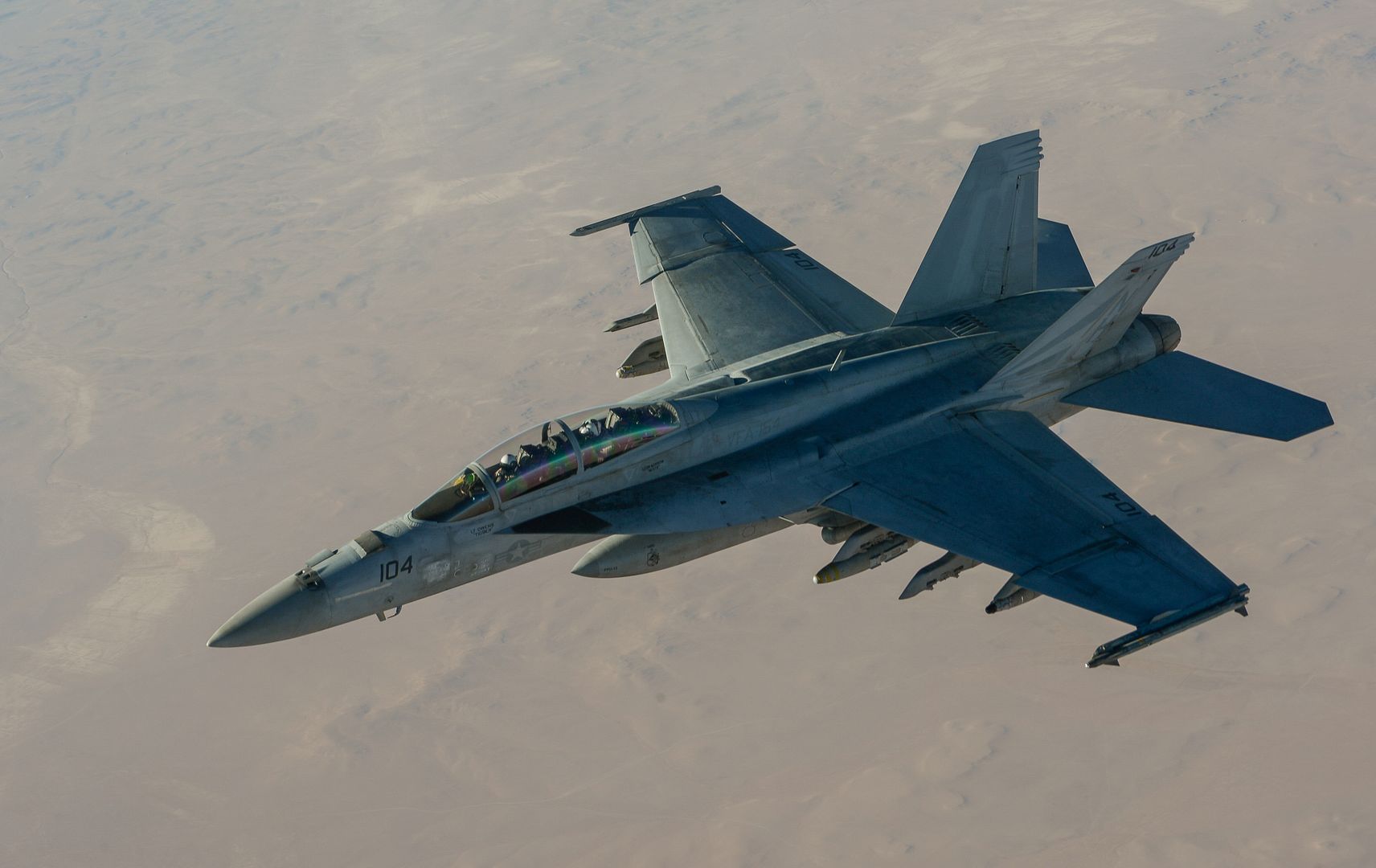
An RQ-7B Shadow unmanned aerial system with Marine Unmanned Aerial Vehicle Squadron 3 (VMU-3) , conducts a landing approach during a training event at Landing Zone Westfield, Marine Corps Air Station Kaneohe Bay, Oct. 18, 2017. The purpose of the event is to conduct UAS operations with a minimal amount of personnel and equipment after flying a system in by KC-130J in order to operate immediately within a short amount of time. (U.S. Marine Corps photo by Lance Cpl. Isabelo Tabanguil)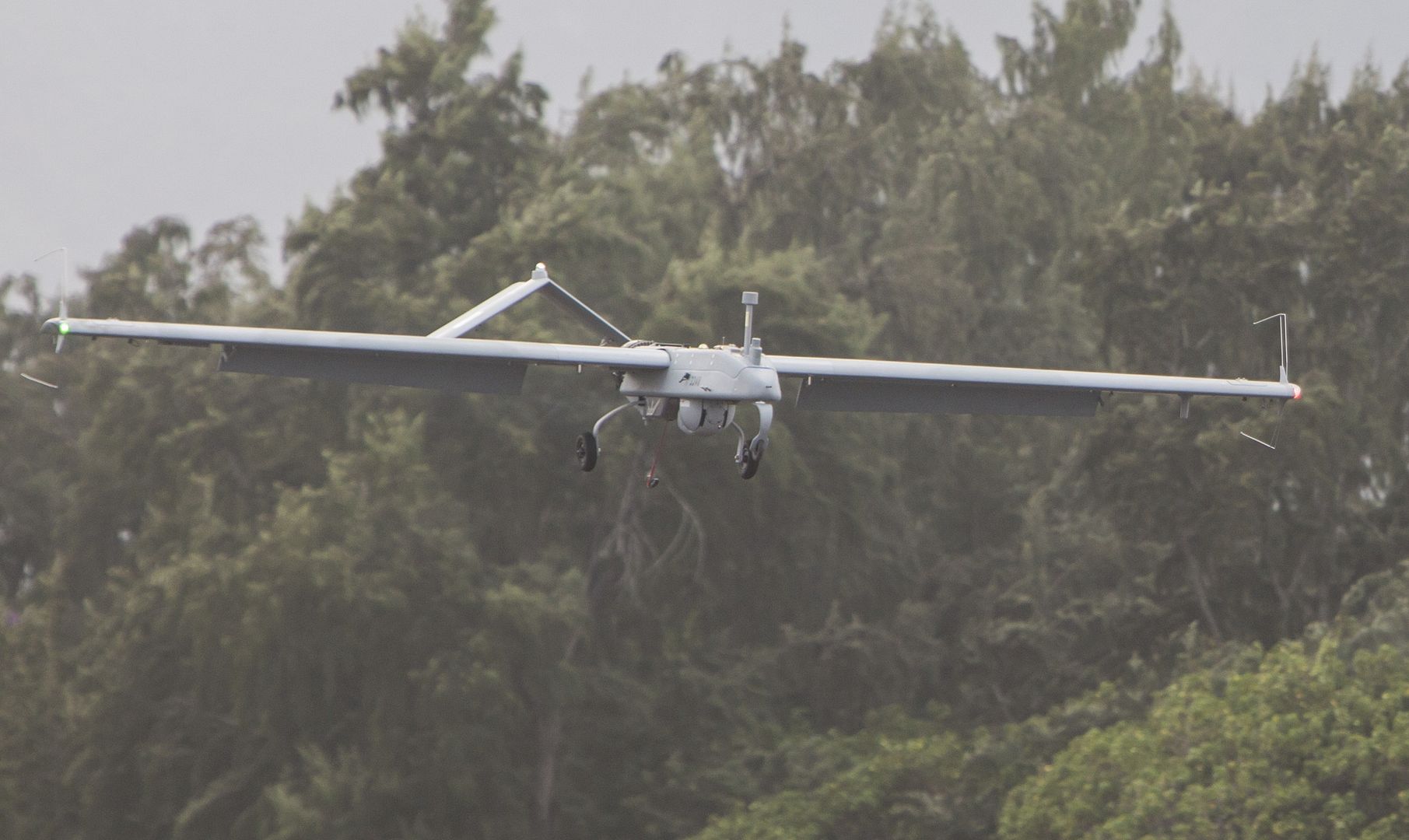
An F-35C Lightning II from the "Rough Raiders"of Strike Fighter Squadron (VFA) 125 prepares to make an arrested cable landing on the flight deck of the Nimitz-class aircraft carrier USS Carl Vinson (CVN 70). Carl Vinson is conducting fleet replacement squadron carrier qualifications off the coast of Southern California. U.S. Navy photo by Mass Communication Specialist 2nd Class Sean M. Castellano (Released
MARIETTA, Ga., Oct. 19, 2017 /PRNewswire/ -- Lockheed Martin's (NYSE: LMT) LM-100J commercial freighter program recently marked yet another successful achievement with the first flight of the second production LM-100J aircraft Oct. 11.
"The flight was outstanding and the aircraft's performance was flawless," said Wayne Roberts, LM-100J chief test pilot. "After this completely successful first airworthiness flight, this aircraft will join the first LM-100J in conducting the FAA type design update test program already underway. This will accelerate our progress to deliver this unique aircraft's capabilities to civilian operators around the world."
The LM-100J is the 17th different mission capability developed for the C-130J Super Hercules and it is an updated version of the L-100 cargo aircraft, which Lockheed Martin produced from 1964-1992. Lockheed Martin officials submitted a Program Notification Letter to the FAA on Jan. 21, 2014, for a type design update to this aircraft, a civil-certified variant of the C-130J Super Hercules to be marketed as the LM-100J.
Through select design innovations, the LM-100J will perform as a commercial multi-purpose air freighter capable of rapid and efficient cargo transport. The LM-100J is an ideal airlift solution for delivering bulk and oversize cargo, particularly to austere locations worldwide. Like its military counterpart, the LM-100J will be able to support multiple missions, ranging from firefighting to medevac to VIP transport.
The LM-100J incorporates technological developments and improvements over the existing L?100s that result from years of C-130J operational experience, including more than 1.6 million fleetwide flight hours. The result of this experience and advancement translates to an aircraft that will deliver reliable service in a multi-role platform for decades to come.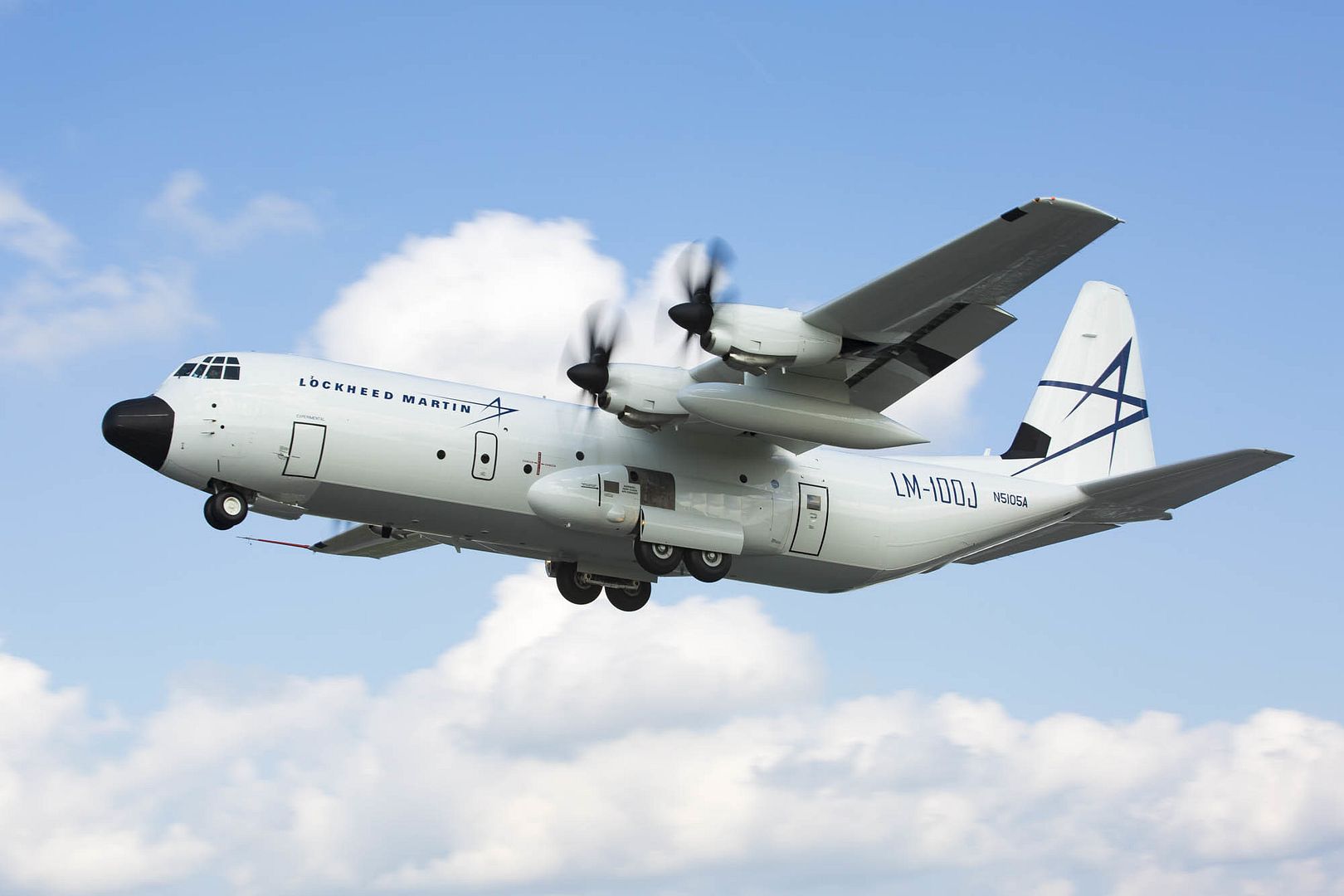
The A330neo?s maiden flight today confirmed Airbus? widebody jetliner leadership, bringing together new-generation technology and high operational efficiency that builds on the in-service experience of its A330 and A350 XWB aircraft families.
Departing from Toulouse-Blagnac Airport in southwestern France, the no. 1 A330neo was put through its paces during a four hour and 13 minute airborne evaluation. The milestone takeoff and landing were witnessed by an audience of invited airline executives, industry suppliers, air transport officials, national authorities, the news media and Airbus employees.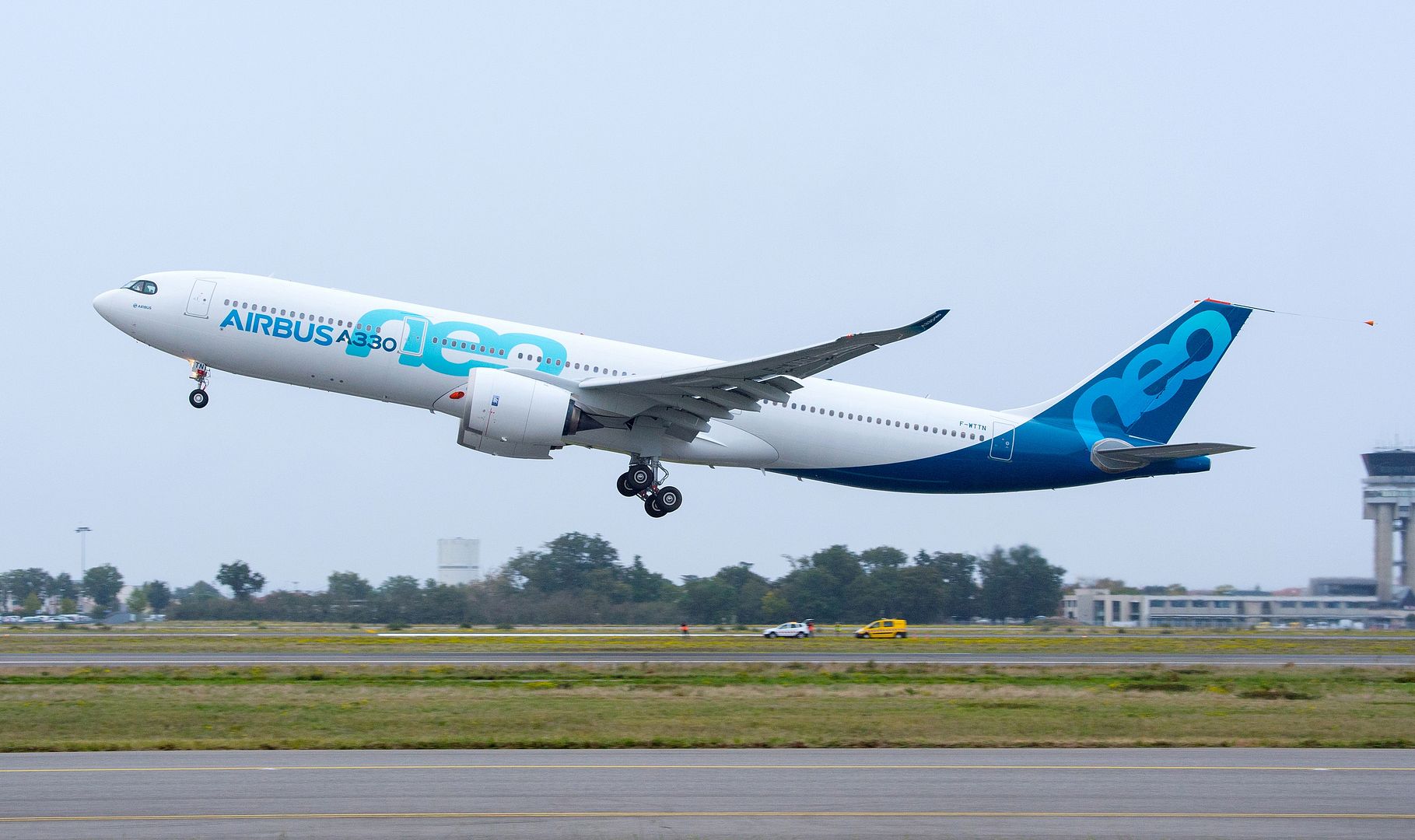
Performing the maiden flight today was an A330-900. When entering airline service by mid-2018, this aircraft version will become the lowest seat-mile-cost jetliner in the 300-passenger widebody category, continuing the success of Airbus? A330-300 variant (the best-selling midsize widebody ever).
One aircraft in two sizes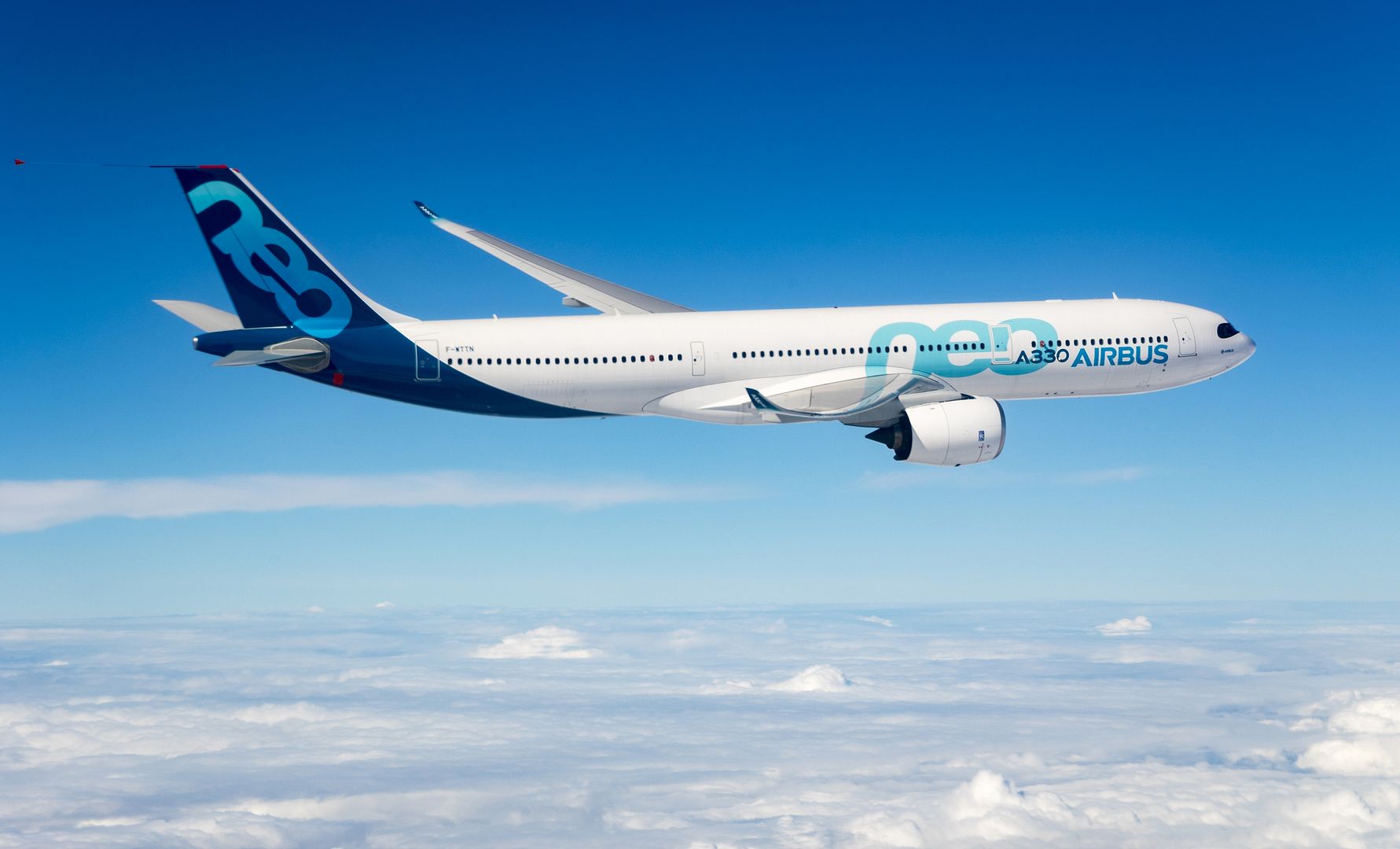
It will be joined by the smaller A330-800 ? the longest-range 250-seater, and the follow-on to today?s A330-200 (which has the largest operator base, composed of nearly 100 carriers). Airworthiness certification of the A330-800 is planned for 2019.
Both A330-800 and A330-900 are powered by Rolls-Royce?s latest Trent 7000 turbofan powerplants, and incorporate high-span wings featuring 3D-optimised aerodynamics, new onboard systems, a connected cockpit, and the ?Airspace by Airbus? cabin interior.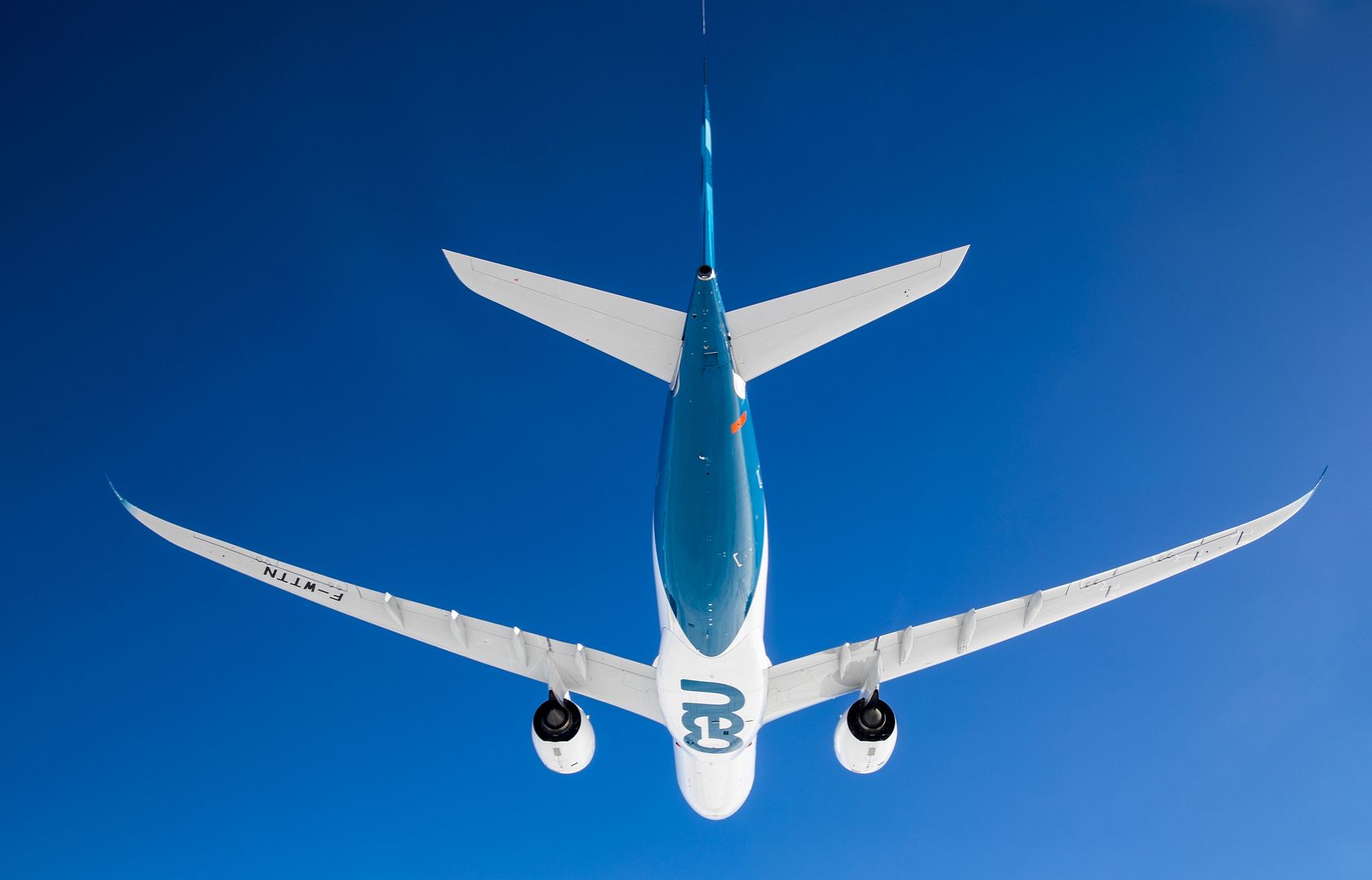
By offering the A330neo along with its next-generation A350 XWB, Airbus has created a world-leading widebody airliner product line that accommodates 257 to 366 seats ? sharing a high degree of commonality for airline operators, while providing unmatched comfort and a superior in-flight ambience for passengers.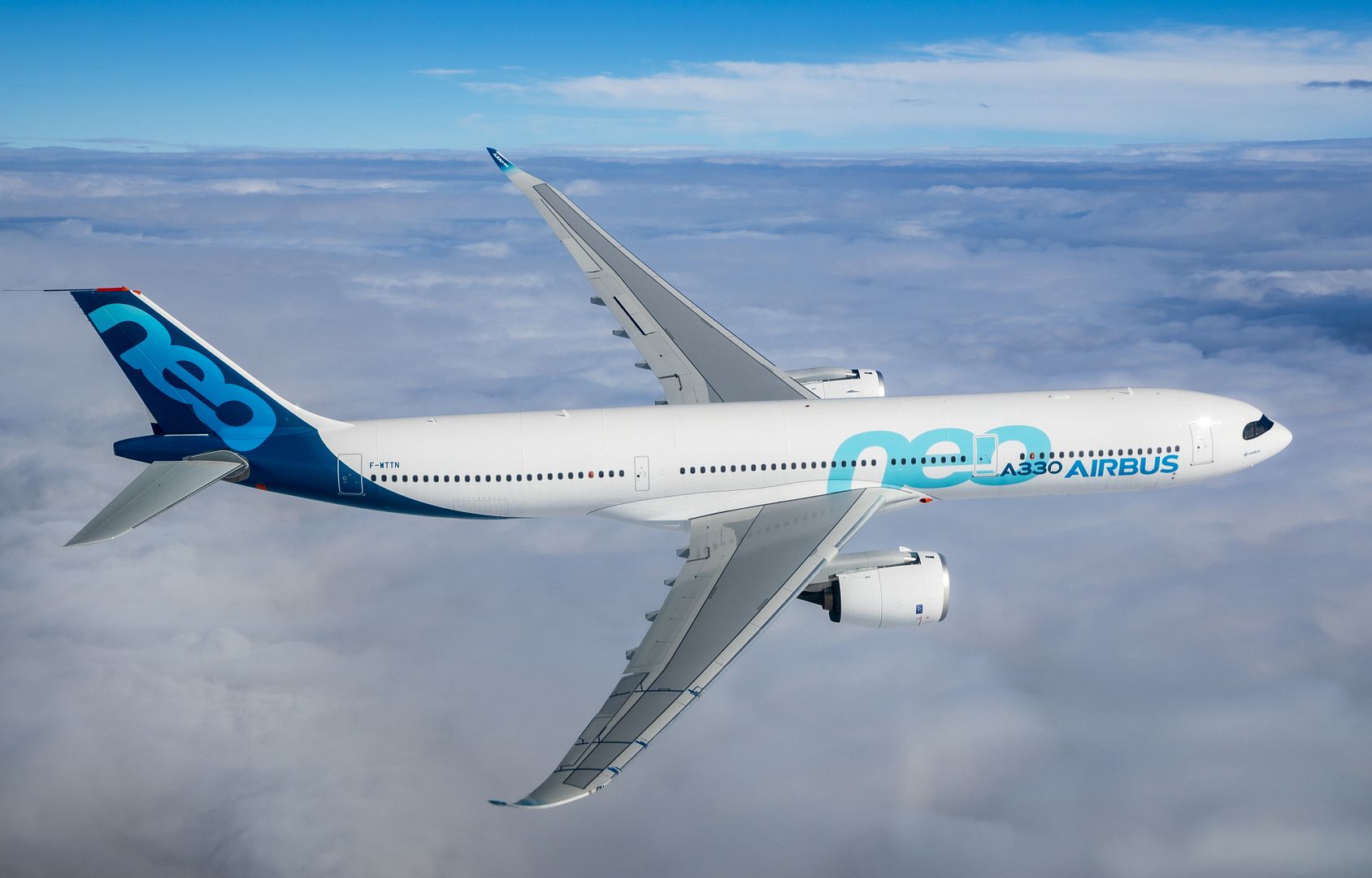
-
 Main AdminAn F-22 Raptor taxis on the flightline on Royal Air Force Lakenheath, England, Oct. 19. Six F-22 Raptors transited through RAF Lakenheath. (U.S. Air Force photo/Staff. Sgt. Emerson Nu?ez)
Main AdminAn F-22 Raptor taxis on the flightline on Royal Air Force Lakenheath, England, Oct. 19. Six F-22 Raptors transited through RAF Lakenheath. (U.S. Air Force photo/Staff. Sgt. Emerson Nu?ez)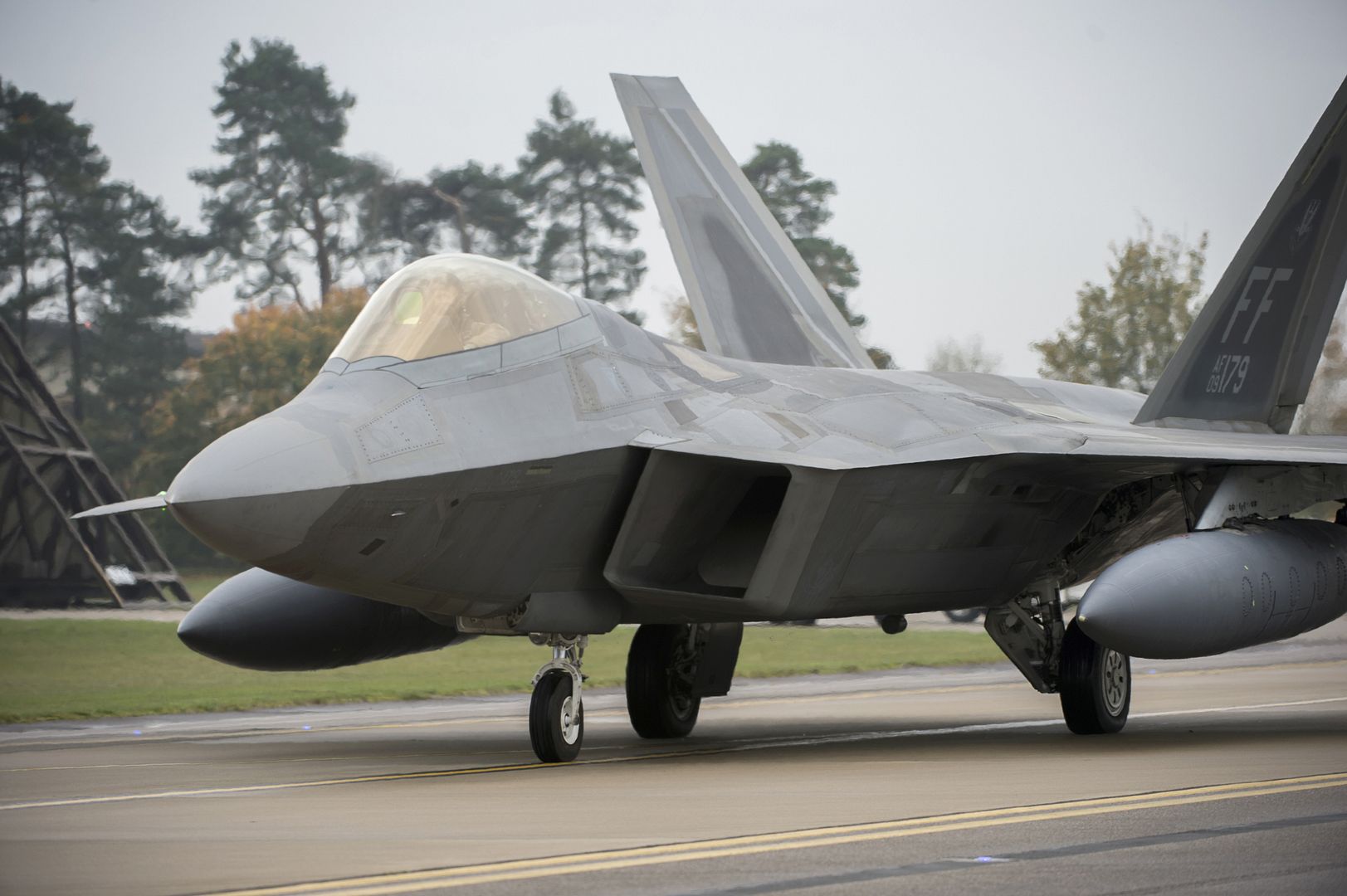
An F-22 Raptor taxis on the taxiway at Royal Air Force Lakenheath, England, Oct. 19, 2017. Six F-22 Raptors transited through RAF Lakenheath. (U.S. Air Force photo/Airman 1st Class John A. Crawford)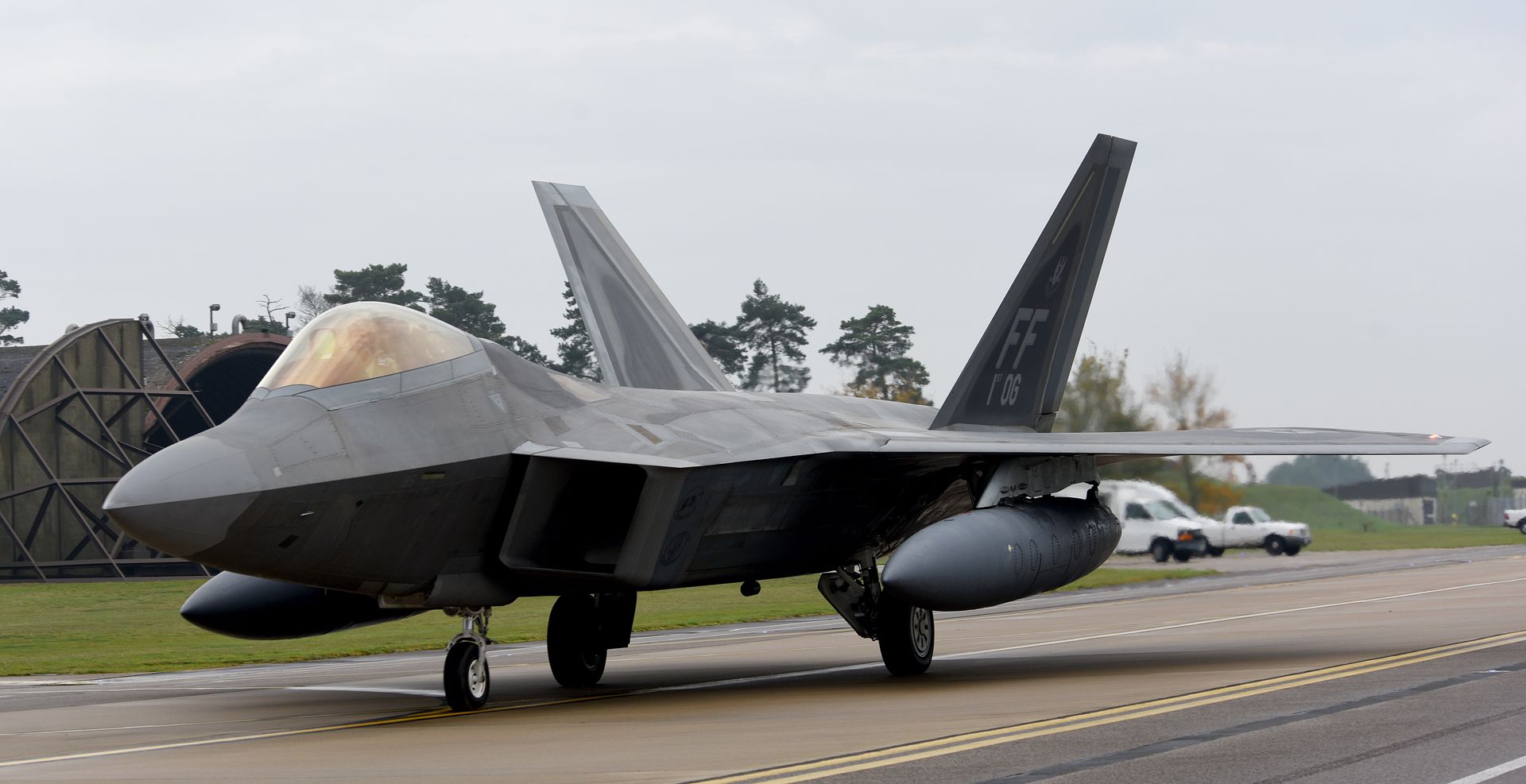
An F-22 Raptor from the 1st Fighter Wing, Joint Base Langley-Eustis, Virginia takes flight at Royal Air Force Lakenheath, England Oct. 19, 2017. Six F-22 Raptors transited through RAF Lakenheath. (U.S. Air Force photo/Airman 1st Class Chirstopher S. Sparks)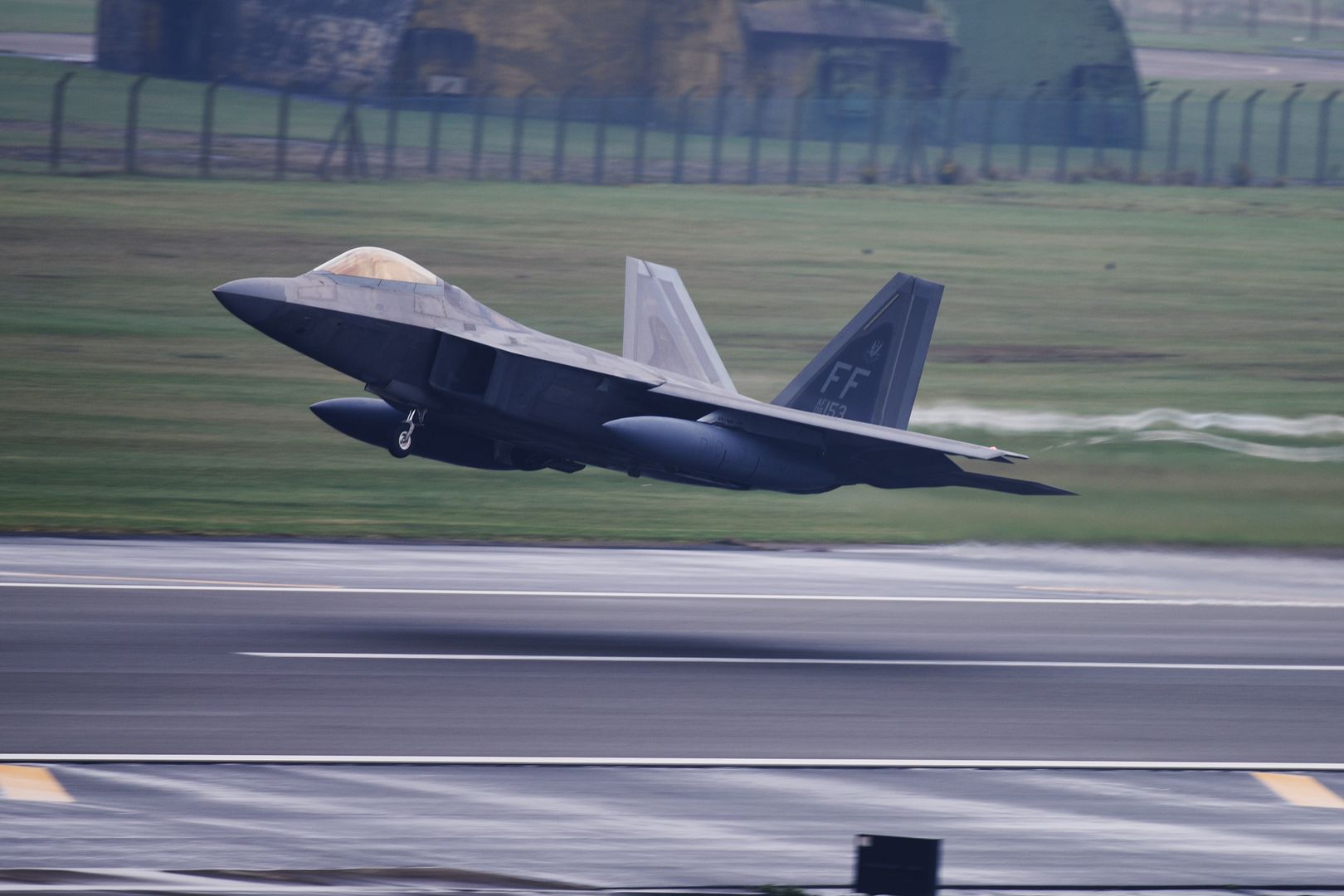
A C-17 Globemaster III flies behind a U.S. Air Force KC-135 during an aerial-refueling training exercise over Germany, Oct. 19, 2017. The C-17 was operated by the Heavy Airlift Wing, Papa Air Base, Hungary, which is comprised of approximately 145 personnel from 12 nations. (U.S. Air Force photo by Airman 1st Class Luke Milano)
A KT-1 Woongbee performs during the Seoul International Aerospace and Defense Exhibition 2017 at the Seoul Airport, Republic of Korea, Oct. 20, 2017. The Seoul ADEX is the largest, most comprehensive event of its kind in Northeast Asia, attracting aviation and aerospace professionals, key defense personnel, aviation enthusiasts and the general public alike. (U.S. Air Force photo by Staff Sgt. Alex Fox Echols III)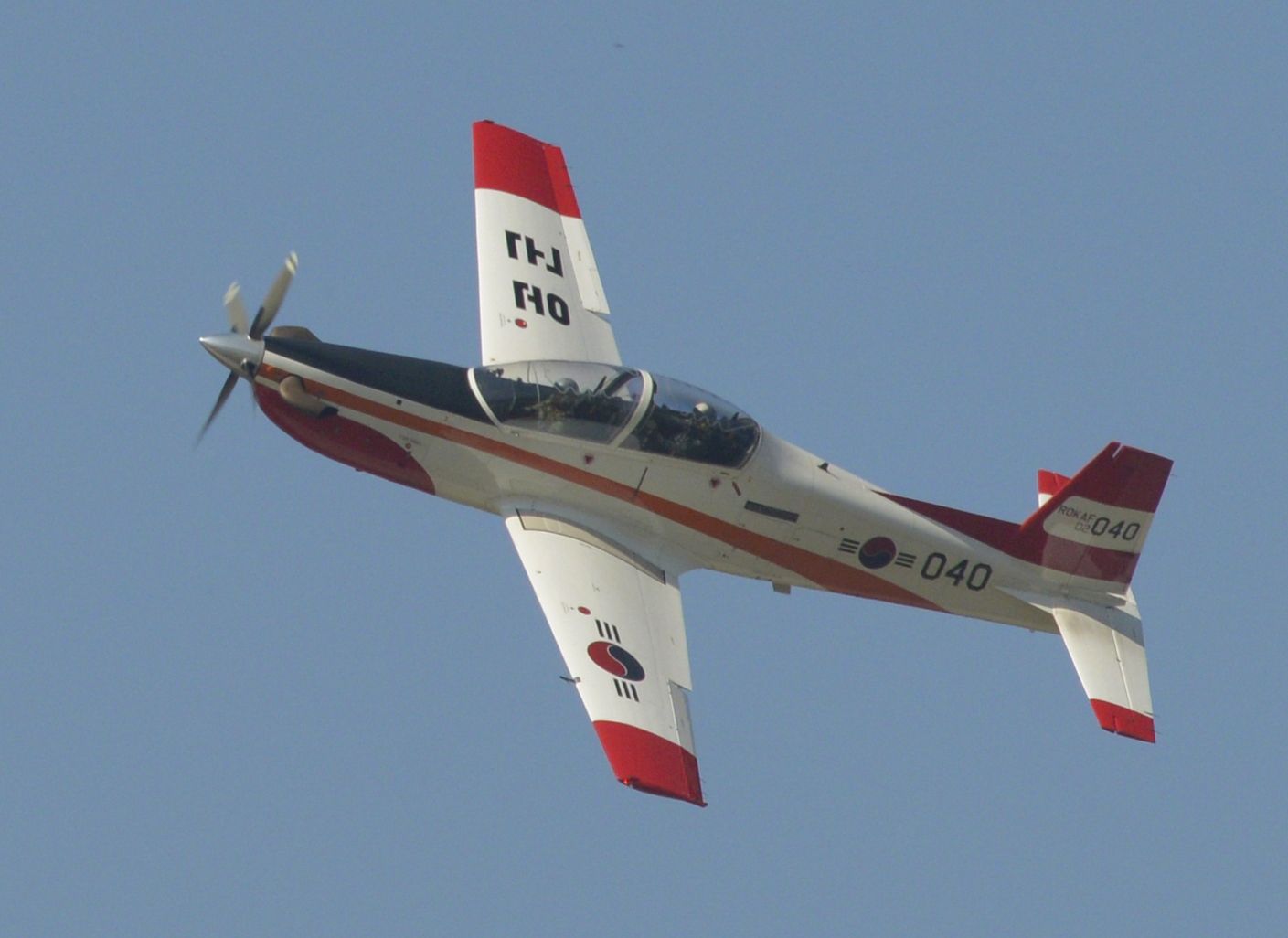
A B-1 Bomber takes off from Ellsworth Air Force Base, S.D., to participate in Green Flag exercise 18-1 on Oct. 18, 2017. Green Flag is a joint training exercise held 10 times a year at Nellis Air Force Base, Nev. that tests aircrew and maintainer?s warfighting capabilities. (U.S. Air Force photo by Airman 1st Class Thomas Karol)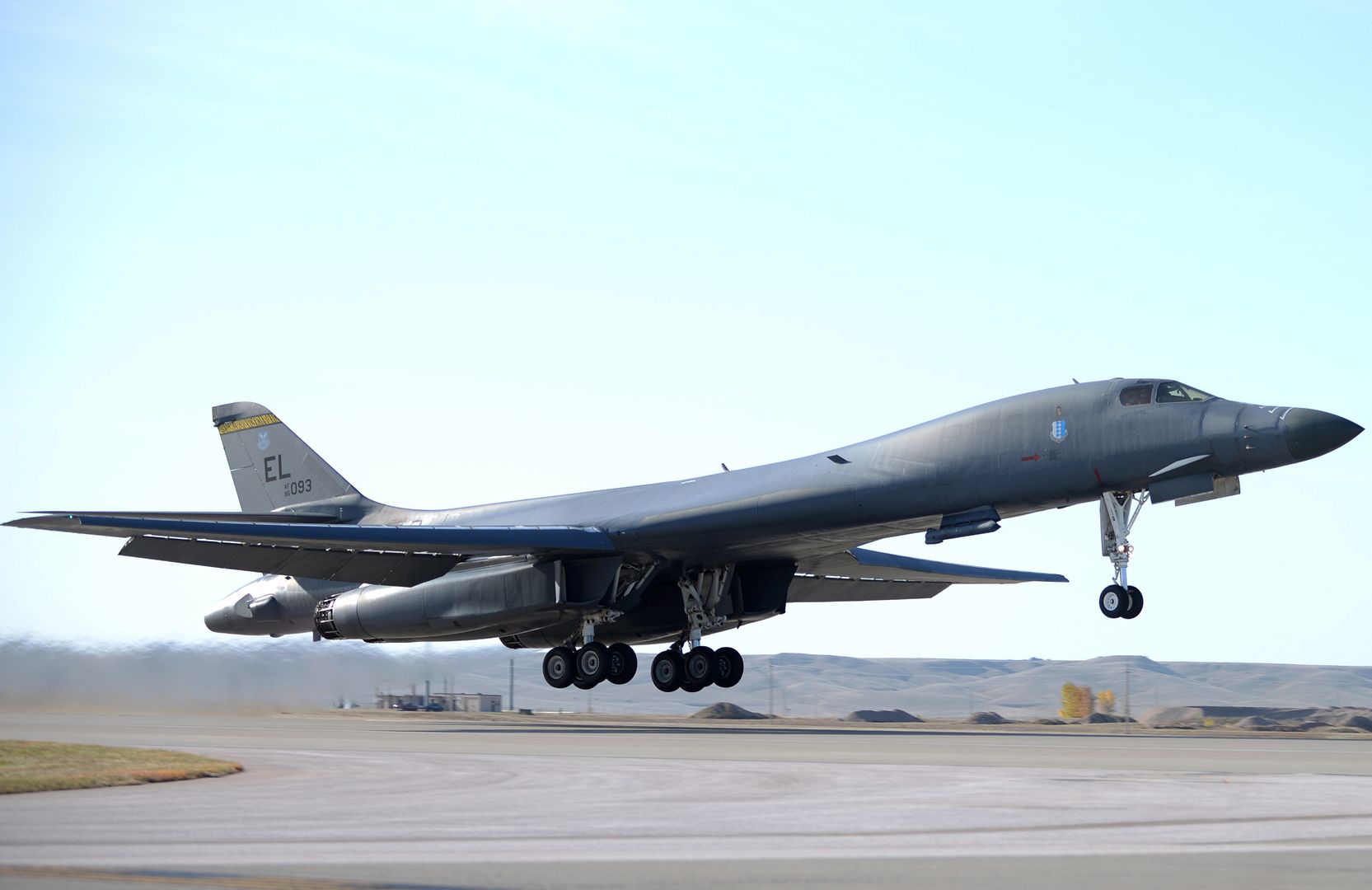
A KC-135 Stratotanker sits on the flight line at McConnell Air Force Base, Kan., Oct. 19, 2017. The KC-135 extends the Air Force?s global reach by providing aerial refueling support to Air Force, Navy, Marine Corps and allied nation aircraft. The tanker partakes in a wide-range of missions to include supporting the war on terror, routine training missions and the war on drugs. (U.S. Air Force photo by Senior Airman Jenna K. Caldwell)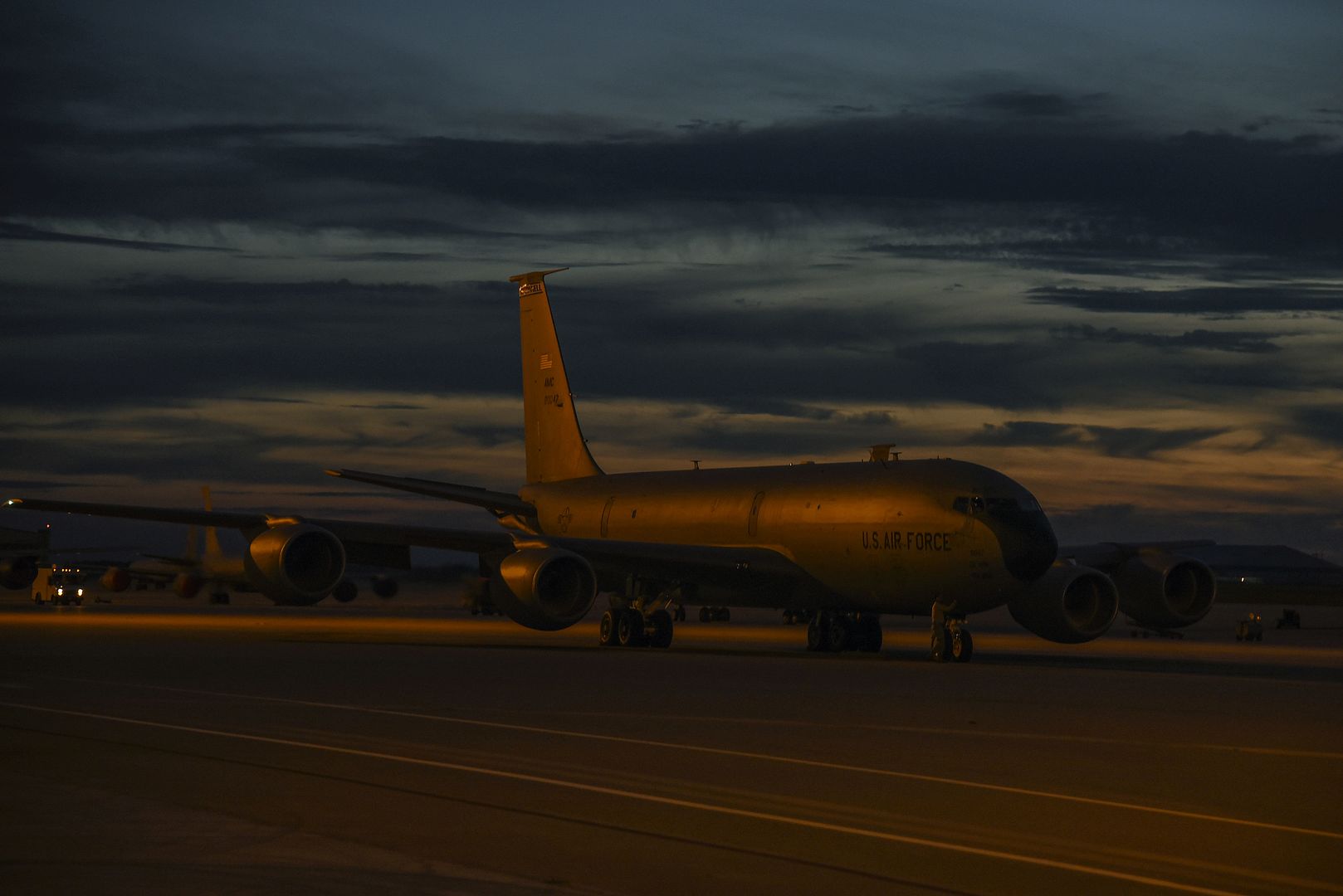
ATLANTIC OCEAN (Oct. 18, 2017) An F/A18F Super Hornet assigned to Strike Fighter Squadron (VFA) 213 takes off from the aircraft carrier USS George H.W. Bush (CVN 77). The George H.W. Bush Carrier Strike Group is underway completing sustainment requirements as part of exercise Bold Alligator 17. (U.S. Navy photo by Mass Communication Specialist Seaman Darien Weigel/Released)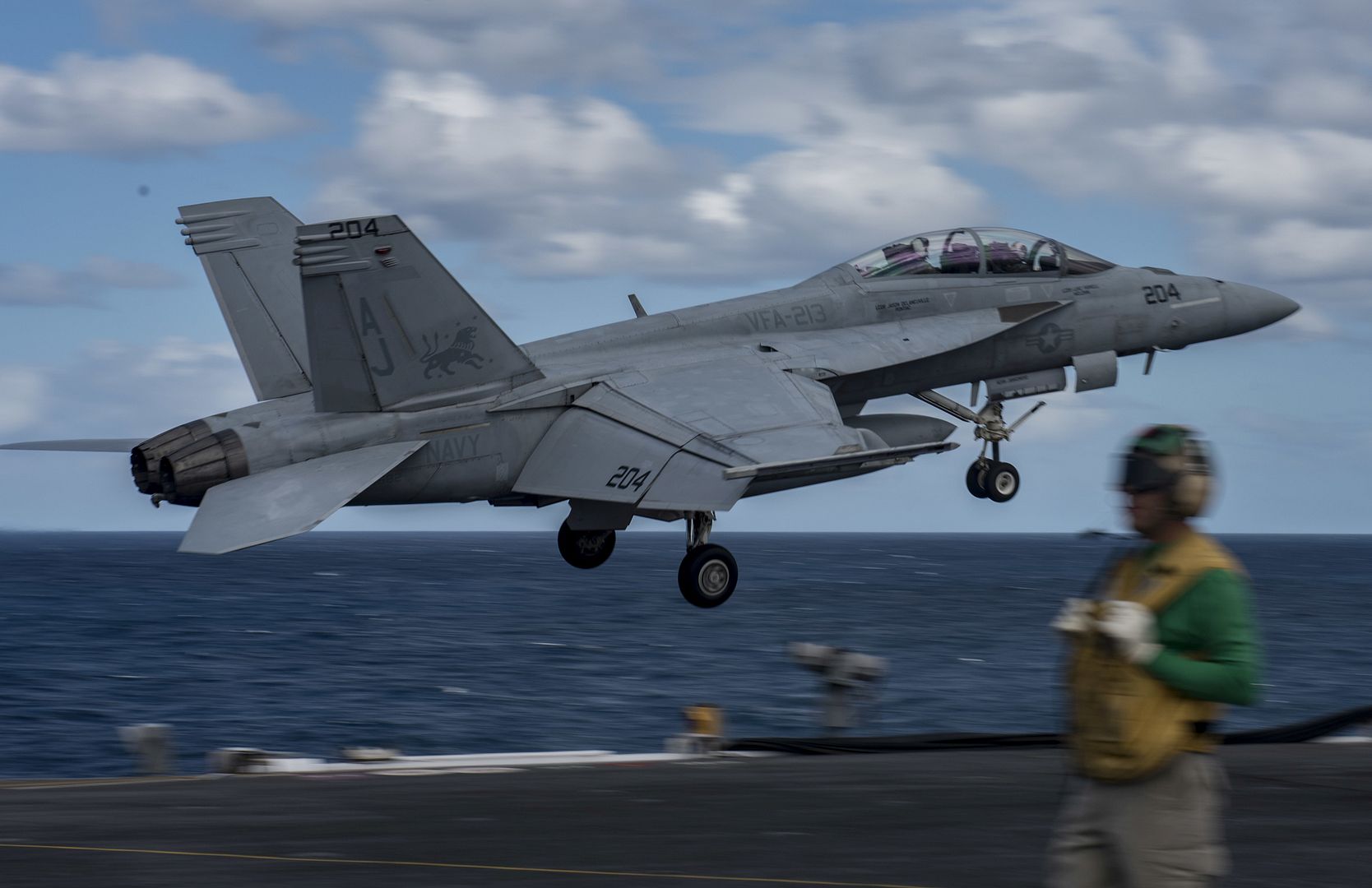
ATLANTIC OCEAN (Oct. 18, 2017) An F/A-18C Hornet attached to Strike Fighter Squadron (VFA) 37 lands on the aircraft carrier USS George H.W. Bush (CVN 77). The George H.W. Bush Strike Group is currently underway completing sustainment requirements as part of exercise Bold Alligator 17. (U.S. Navy photo by Mass Communication Specialist 3rd Class Tristan B. Lotz/Released)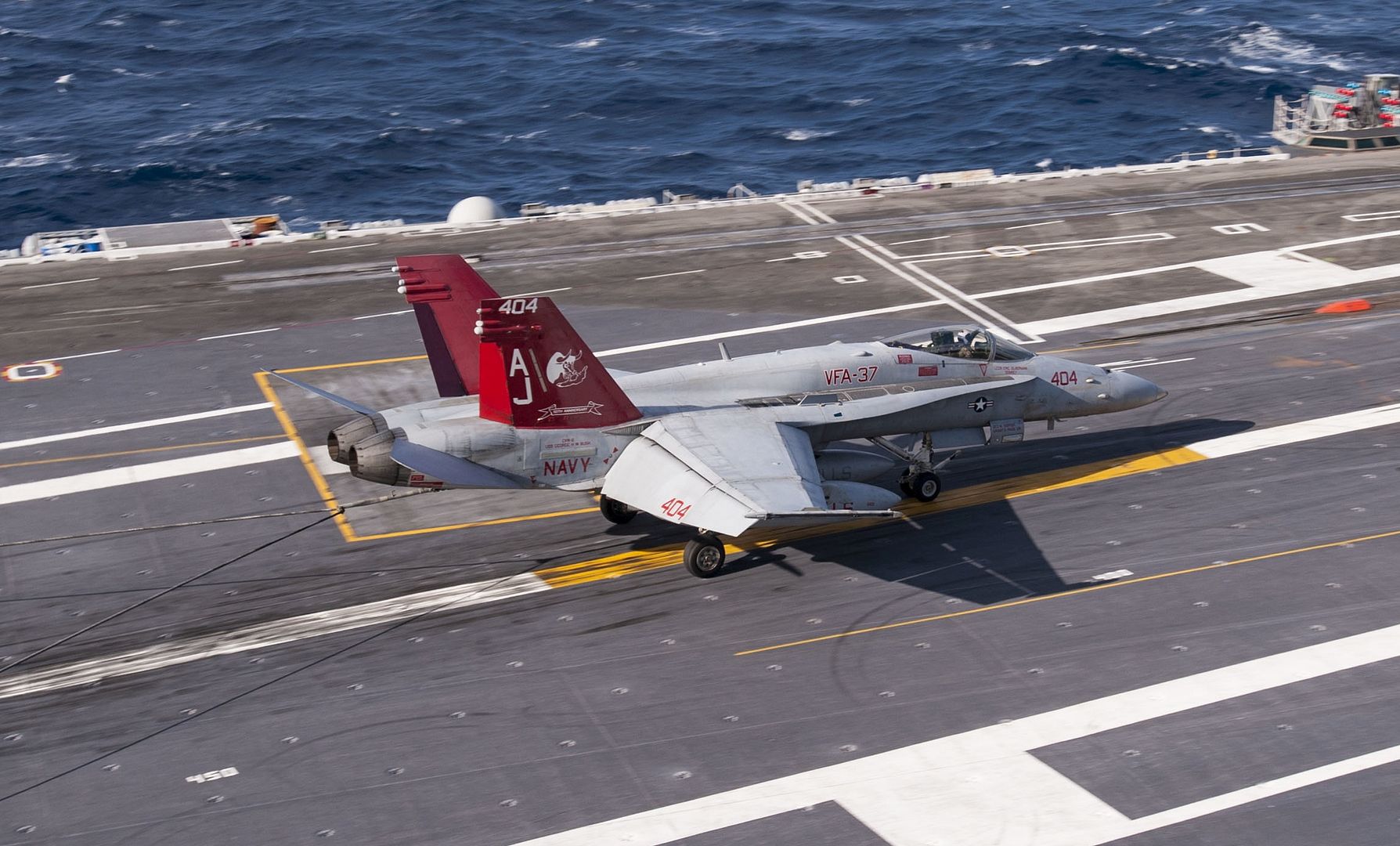
ATLANTIC OCEAN (Oct. 18, 2017) An E2-C Hawkeye attached to Carrier Airborne Early Warning Squadron (VAW) 124 flies above the aircraft carrier USS George H.W. Bush (CVN 77). The George H.W. Bush Strike Group is currently underway completing sustainment requirements as part of exercise Bold Alligator 17. (U.S. Navy photo by Mass Communication Specialist 3rd Class Tristan B. Lotz/Released)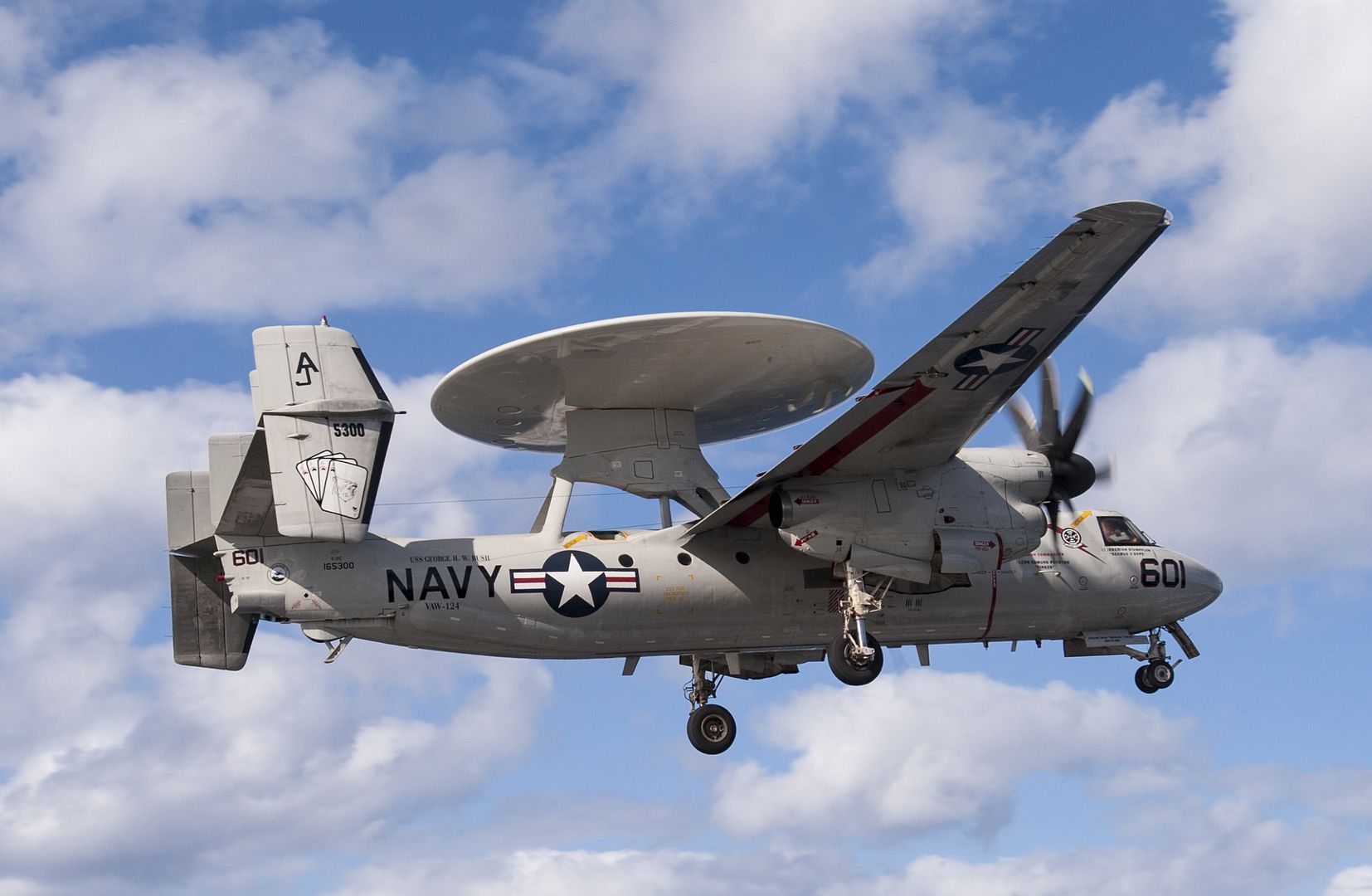
ATLANTIC OCEAN (Oct. 18, 2017) An F/A-18F Super Hornet attached to Strike Fighter Squadron (VFA) 213 traps on the flight deck of the aircraft carrier USS George H.W. Bush (CVN 77). The George H.W. Bush Strike Group is currently underway completing sustainment requirements as part of exercise Bold Alligator 17. (U.S. Navy photo by Mass Communication Specialist 3rd Class Tristan B. Lotz/Released)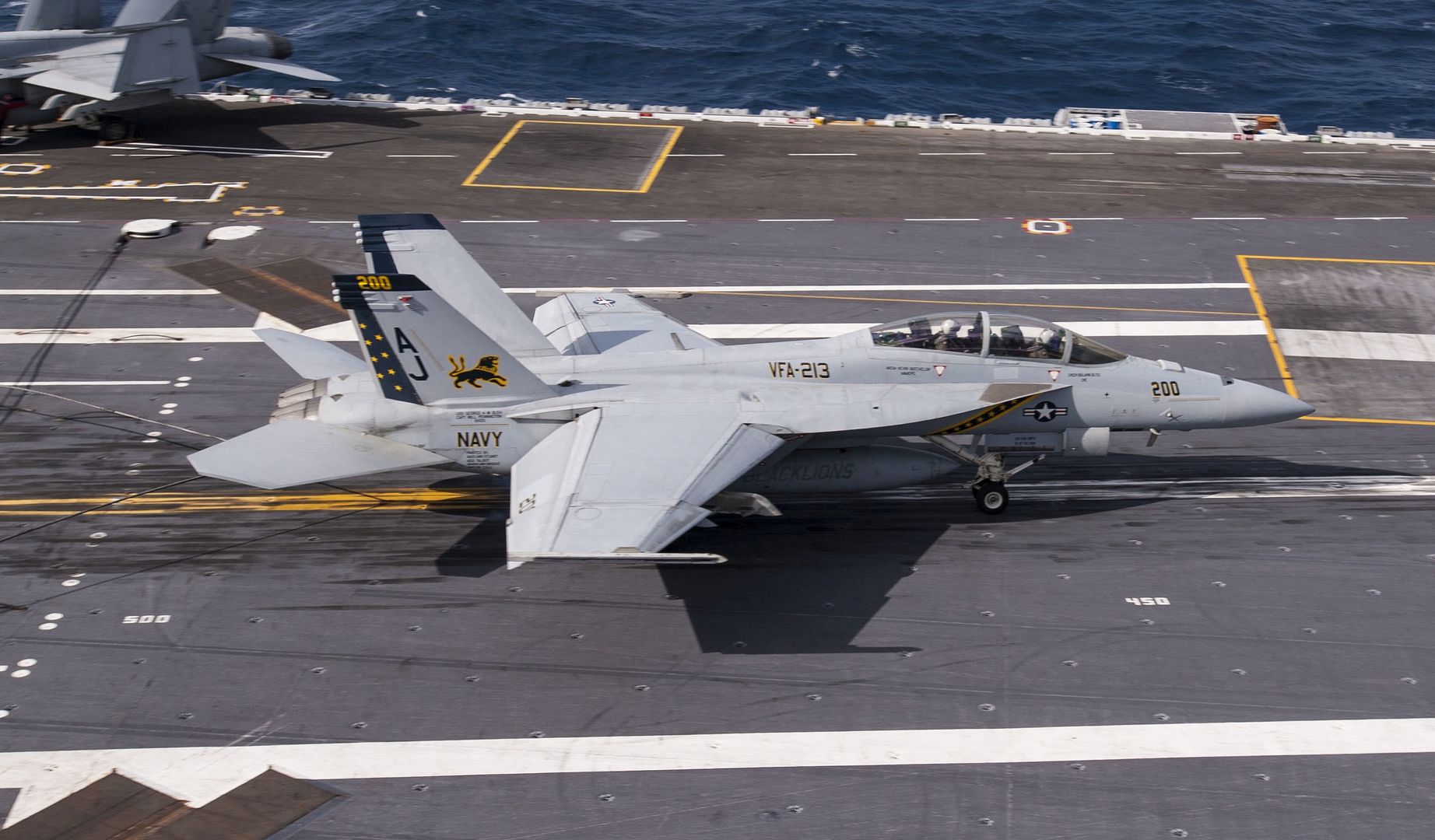
Two U.S. Air Force B-1B Lancer bombers assigned to the 37th Expeditionary Bomb Squadron, deployed from Ellsworth AFB, South Dakota, fly alongside a Koku Jieitai (Japan Air Self-Defense Force) F-2s over the vicinity of the East China Sea, Oct. 21, 2017. Following the flight with Koku Jieitai the Lancers continued on to participate in a flyover for the 2017 Seoul Aerospace & Defense Exhibition (Seoul ADEX 17) at Seoul Airport, Repubic of Korea. (photo courtesy of Koku Jieitai [Japan Air Self-Defense Force])
A U.S. Air Force B-1B Lancer bombers assigned to the 37th Expeditionary Bomb Squadron, deployed from Ellsworth AFB, South Dakota, and two Republic of Korea Air Force F-15K fighters fly over a crowd during the 2017 Seoul Aerospace & Defense Exhibition (Seoul ADEX 17) at Seoul Airport, Republic of Korea (ROK) Oct. 21, 2017.The two B-1B bombers departed Andersen Air Force Base, Guam, and conducted an 11-hour mission in the vicinity of the Korean Peninsula and Japan. The mission included sequential bilateral integration with Koku Jieitai (Japan Air Self-Defense Force) and ROK air forces before continuing over land to support a flyover for the 2017 Seoul International Aerospace & Defense Exhibition (Seoul ADEX 17). (U.S. Air Force photo by Staff Sgt. Alex Echols
An AH-64 Apache helicopter from 1st Air Cavalry Brigade rolls off the Endurance at the port of Zeebrugge, Belgium, Oct. 20, 2017. More than 70 helicopters arrived as the unit prepares to take over the aviation role of Atlantic Resolve from 10th Combat Aviation Brigade. (U.S. Army photo by Sgt. 1st Class Jacob A. McDonald, 21st Theater Sustainment Command)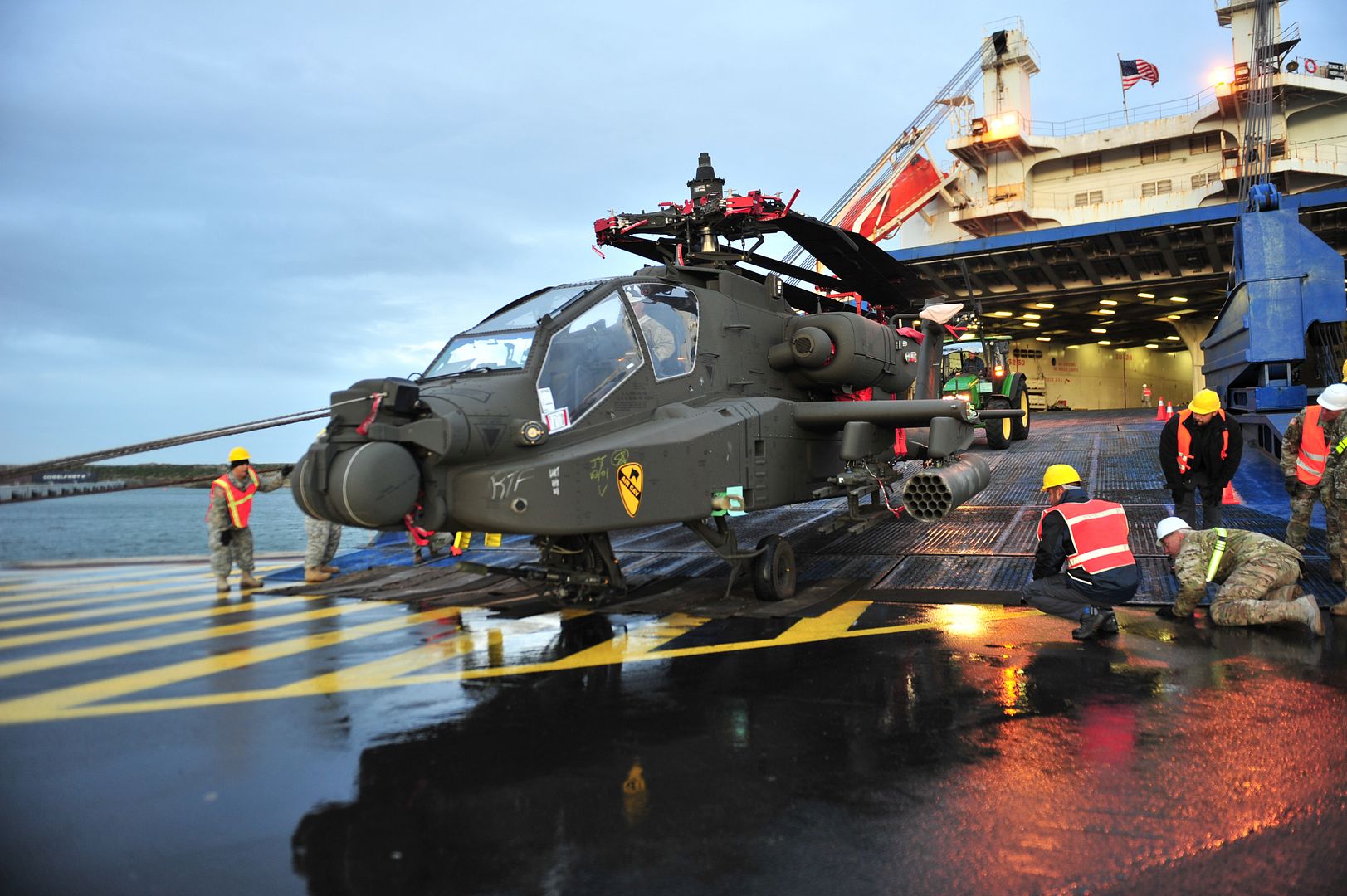
The first A350 operator based in the Indian Ocean
Air Mauritius has taken delivery of its first Airbus A350-900 aircraft, opening a new chapter for the Indian Ocean carrier. The aircraft, leased from AerCap, was delivered during a ceremony held in Mauritius today.
The Mauritian airline based airline has chosen a very comfortable two class layout with a total of 326 seats comprising 28 in Business Class and 298 in Economy Class.
The A350-900 equipped with Air Mauritius? latest cabin products including new seats, an all-new inflight entertainment system and inflight connectivity will offer passengers unparalleled levels of comfort and convenience.
This A350-900 is the first of six to be delivered to Air Mauritius. Four will be purchased directly from Airbus and two leased from AerCap. The carrier will deploy the aircraft on its expanding route network connecting Mauritius with Asia, Africa and Europe.
Air Mauritius already operates a fleet of 10 Airbus aircraft including six A340-300s, two A330-200s and two A319s on its regional and long haul services.
The A350 XWB features the latest aerodynamic design, carbon fibre fuselage and wings, plus new fuel-efficient Rolls-Royce engines. Together, these latest-generation technologies translate into unrivalled levels of operational efficiency, with a 25 per cent reduction in fuel burn and CO2 emissions, in addition to significantly lower maintenance costs.
The spacious, quiet, tastefully-appointed interior and mood lighting in the A350 XWB Airspace cabin contribute to superior levels of comfort and well-being, setting new standards in terms of flight experience for all passengers.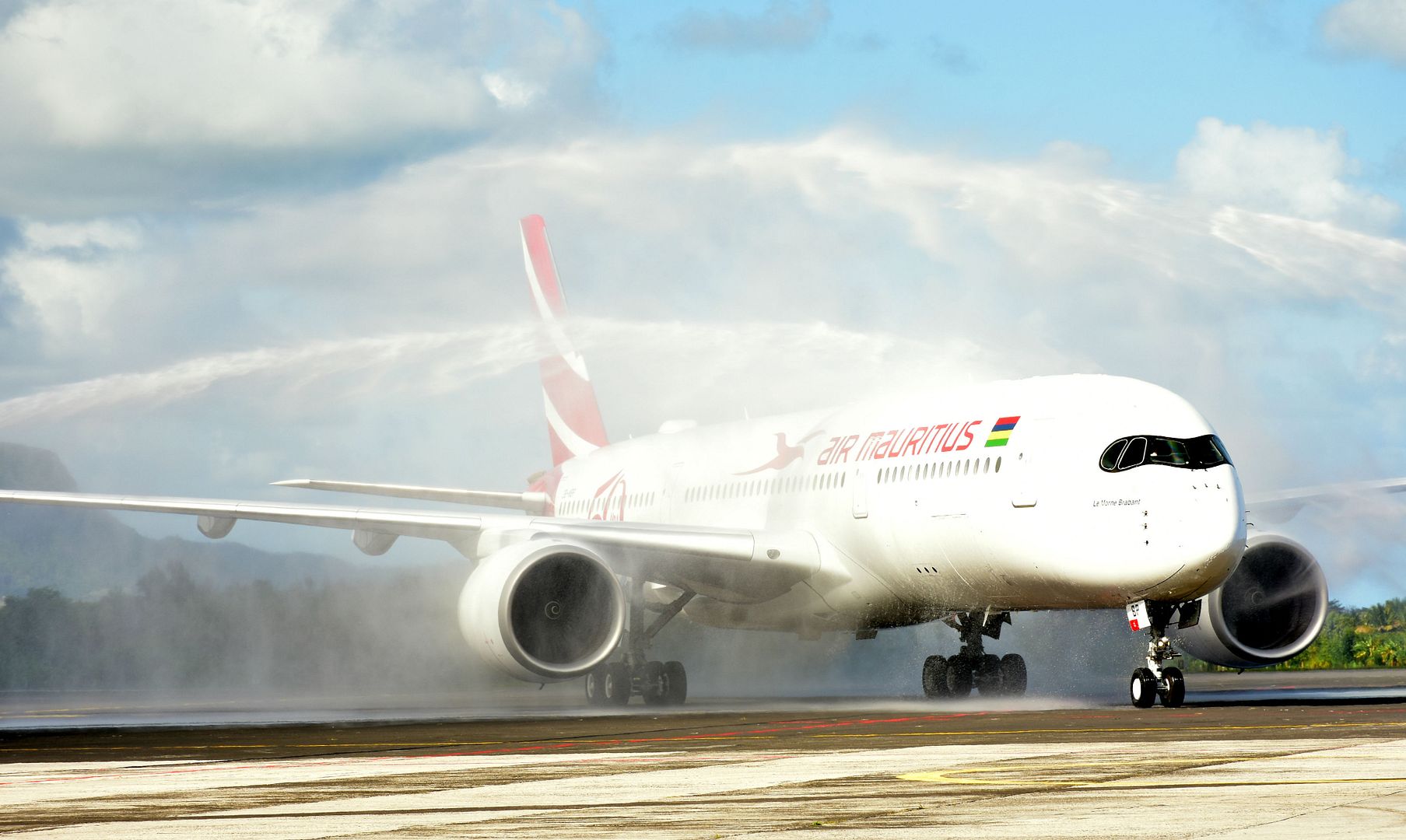
To date, Airbus has booked a total of 858 firm orders for the A350 XWB from 45 customers worldwide, making it one of the most successful widebody aircraft ever.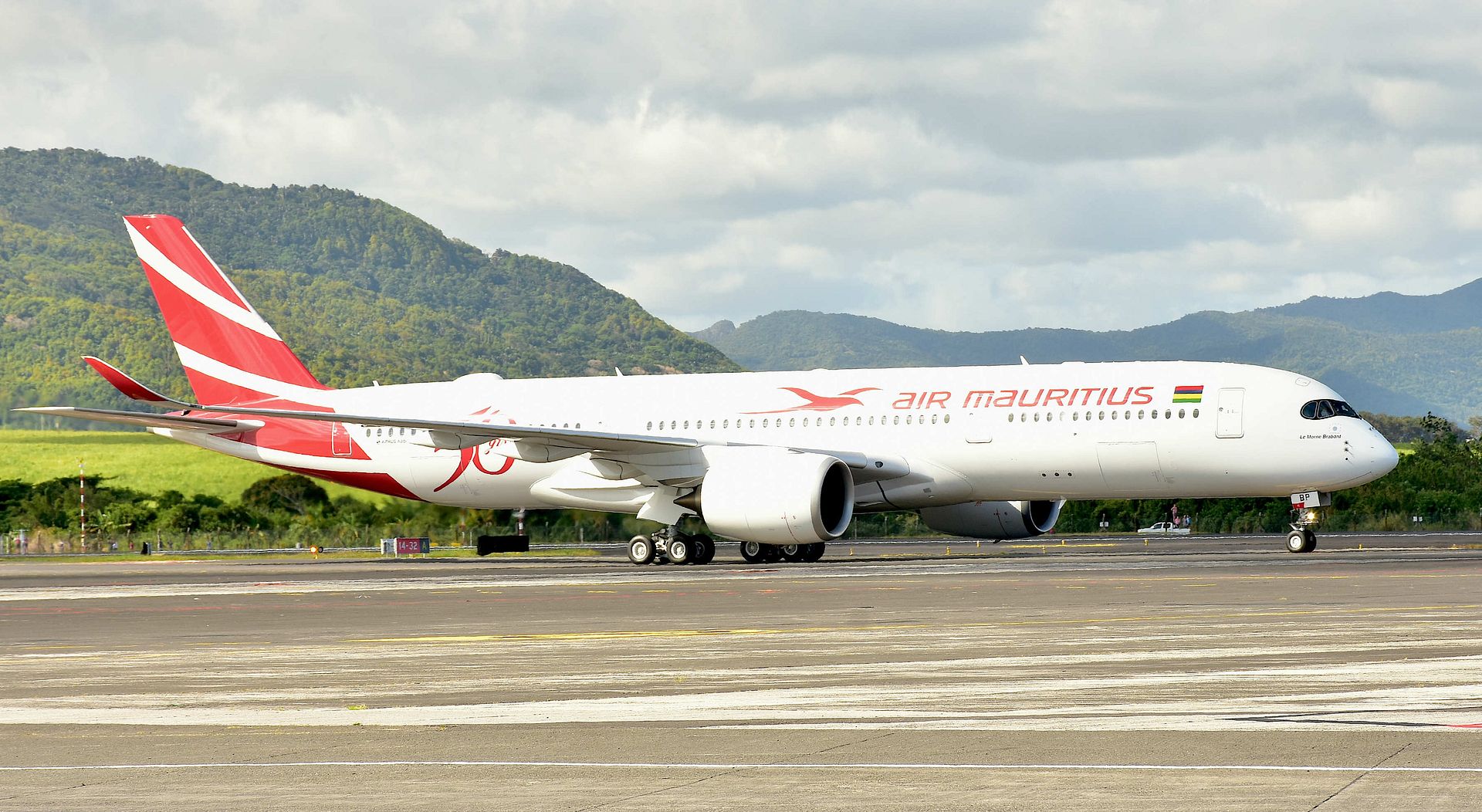
-
 Main AdminA U.S. Marine Corps F-35B Lightning II pilot assigned to Marine Fighter Attack Squadron (VMFA) 211, Marine Aircraft Group 13, 3rd Marine Aircraft Wing, stands by for take-off aboard the USS Essex (LHD-2) during Exercise Dawn Blitz, Oct. 22, 2017. Dawn Blitz is a scenario-driven amphibious exercise conducted between Expeditionary Strike Group 3 and 1st Marine Expeditionary Brigade, testing their ability to conduct amphibious operations in response to global crises and to project power ashore as part of a Navy-Marine Corps team. (U.S. Marine Corps photo's by Lance Cpl. Roderick Jacquote)
Main AdminA U.S. Marine Corps F-35B Lightning II pilot assigned to Marine Fighter Attack Squadron (VMFA) 211, Marine Aircraft Group 13, 3rd Marine Aircraft Wing, stands by for take-off aboard the USS Essex (LHD-2) during Exercise Dawn Blitz, Oct. 22, 2017. Dawn Blitz is a scenario-driven amphibious exercise conducted between Expeditionary Strike Group 3 and 1st Marine Expeditionary Brigade, testing their ability to conduct amphibious operations in response to global crises and to project power ashore as part of a Navy-Marine Corps team. (U.S. Marine Corps photo's by Lance Cpl. Roderick Jacquote)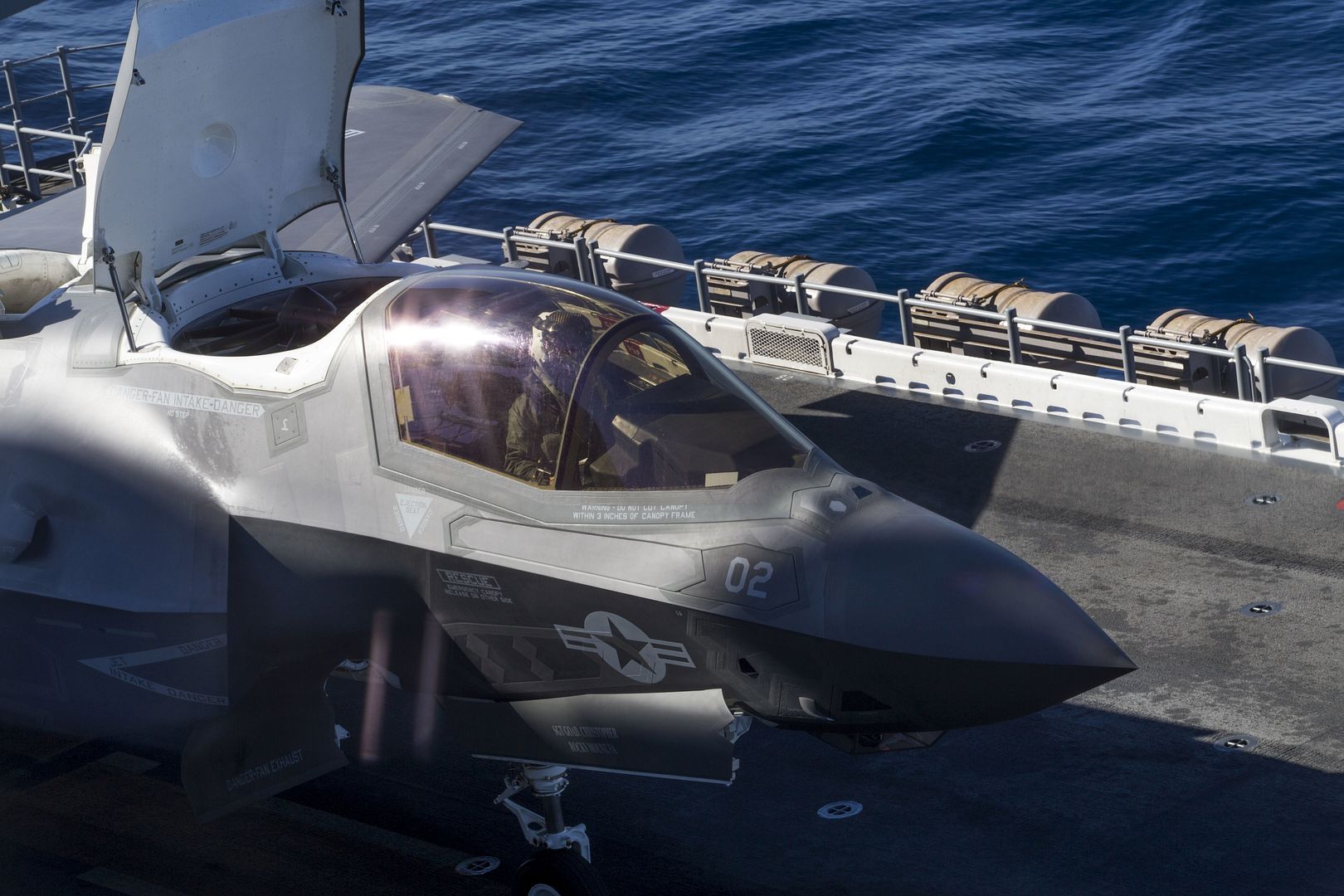
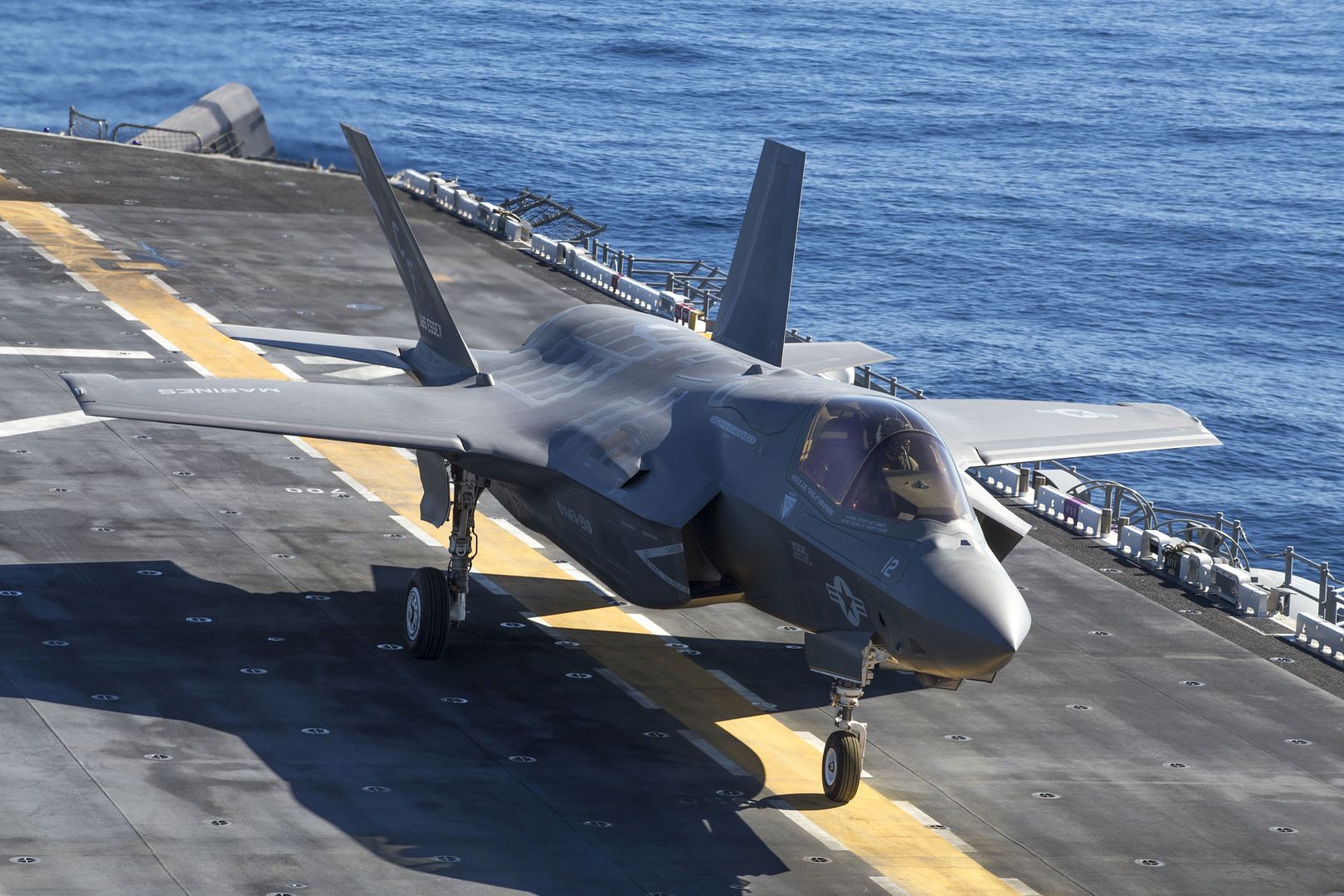
An F-16 Fighting Falcon from the Alabama Air National Guard arrives at an undisclosed location in Southwest Asia, Oct. 16, 2017. In an air-to-surface role, the F-16 can fly more than 500 miles, deliver its weapons with superior accuracy, defend itself against enemy aircraft and return to its starting point. (U.S. Air Force photo's by Staff Sgt. Sean Martin)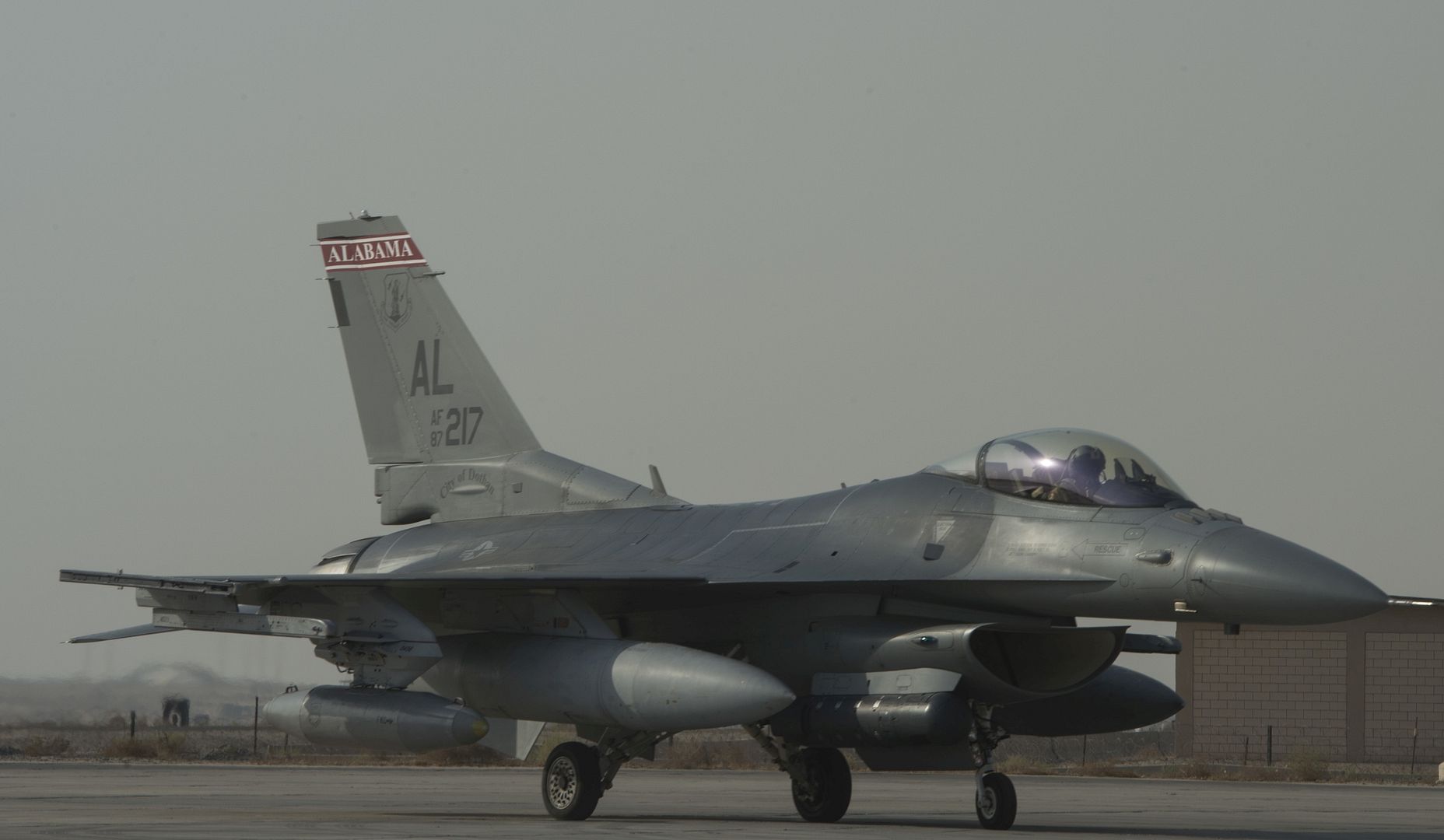

-
 Main AdminLockheed Martin has rolled the first C-130J-30 military transport plane out of the paint shop for French Air Force.
Main AdminLockheed Martin has rolled the first C-130J-30 military transport plane out of the paint shop for French Air Force.
The contracts awarded on 1 December are for USD133.4 million and USD36.6 million, and cover the procurement of two stretched C-130J-30 airlifters and for configuration changes to two C-130J-30 airlifters and two KC-130J tankers respectively.
Work on the contract will be performed at Marietta, Ga. U.S. government officials expect the work to be done by Aug. 30, 2020. The Air Force Life Cycle Management Center at Wright-Patterson Air Force Base, Ohio, is listed as the contracting activity.
According to the Janes, the French Air Force is purchasing four C/KC-130J aircraft to supplement its ageing Transall C-160s, and to compensate for delays to the Airbus Defence and Space A400M transport aircraft and the low availability of its current fleet of C-130Hs.
The first of four Lockheed Martin C-130J Hercules exits the paint shop carrying the French air force?s livery. Together with four similar C-130Js, it will be operated by a joint French-German joint unit based at Evreux, in France. (LM photo's)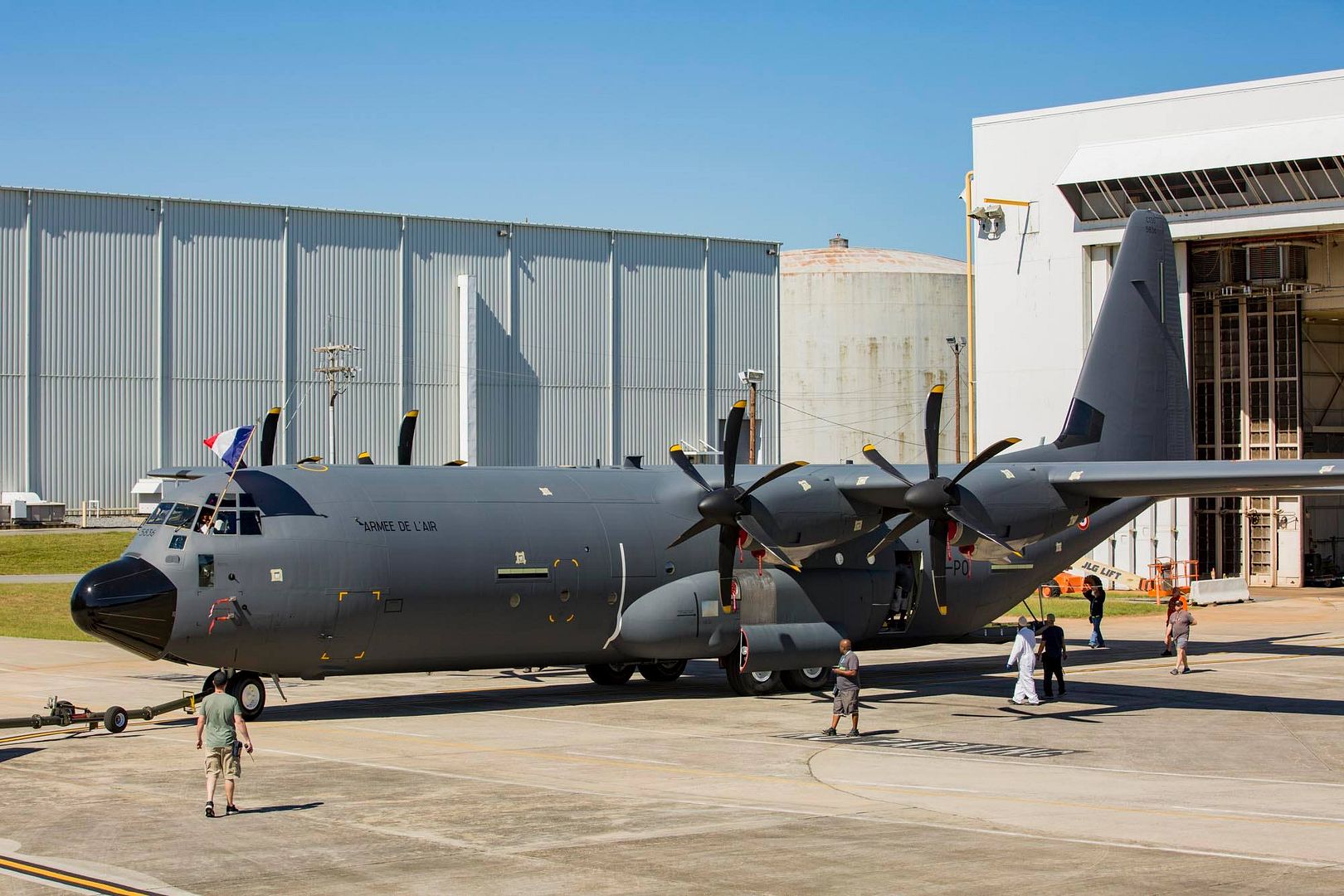

ATLANTIC OCEAN (Oct. 20, 2017) An F/A-18C Hornet attached to Strike Fighter Squadron (VFA) 37 takes off from the aircraft carrier USS George H.W. Bush (CVN 77). The George H.W. Bush Strike Group is underway completing sustainment requirements as part of exercise Bold Alligator 17. (U.S. Navy photo by Mass Communication Specialist 3rd Class Mario Coto/Released)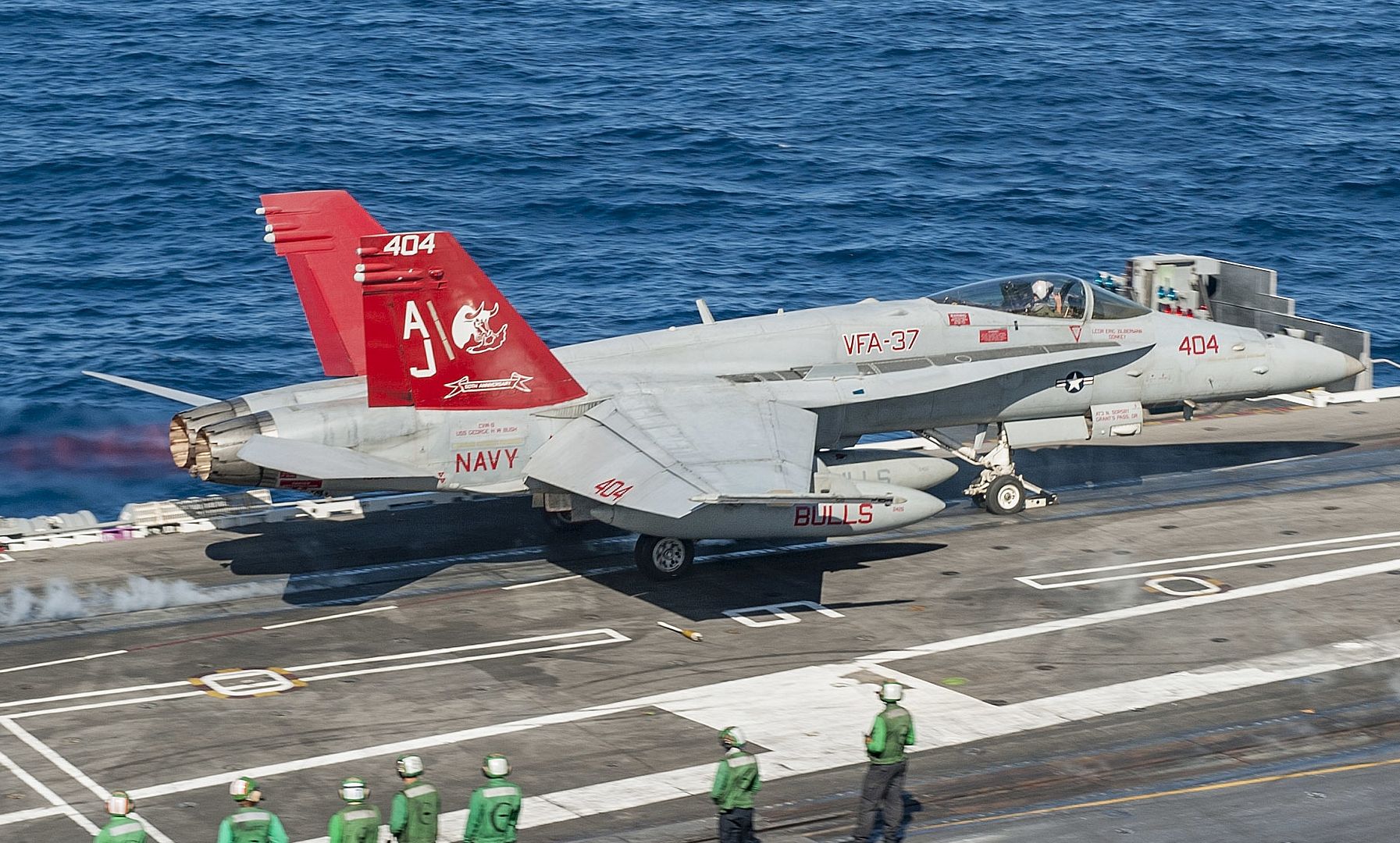
Members of the 33rd Rescue Squadron and 31st Rescue Squadron from Kadena Air Base, Japan, prepare for a combat search and rescue mission during Exercise Pacific Thunder 18-1 at Osan Air Base, Republic of Korea, Oct. 23, 2017. This year?s exercise is the largest Pacific Thunder hosted at Osan with more than 20 U.S. squadrons and nine ROK wings participating. (U.S. Air Force photo by Airman 1st Class Gwendalyn Smith)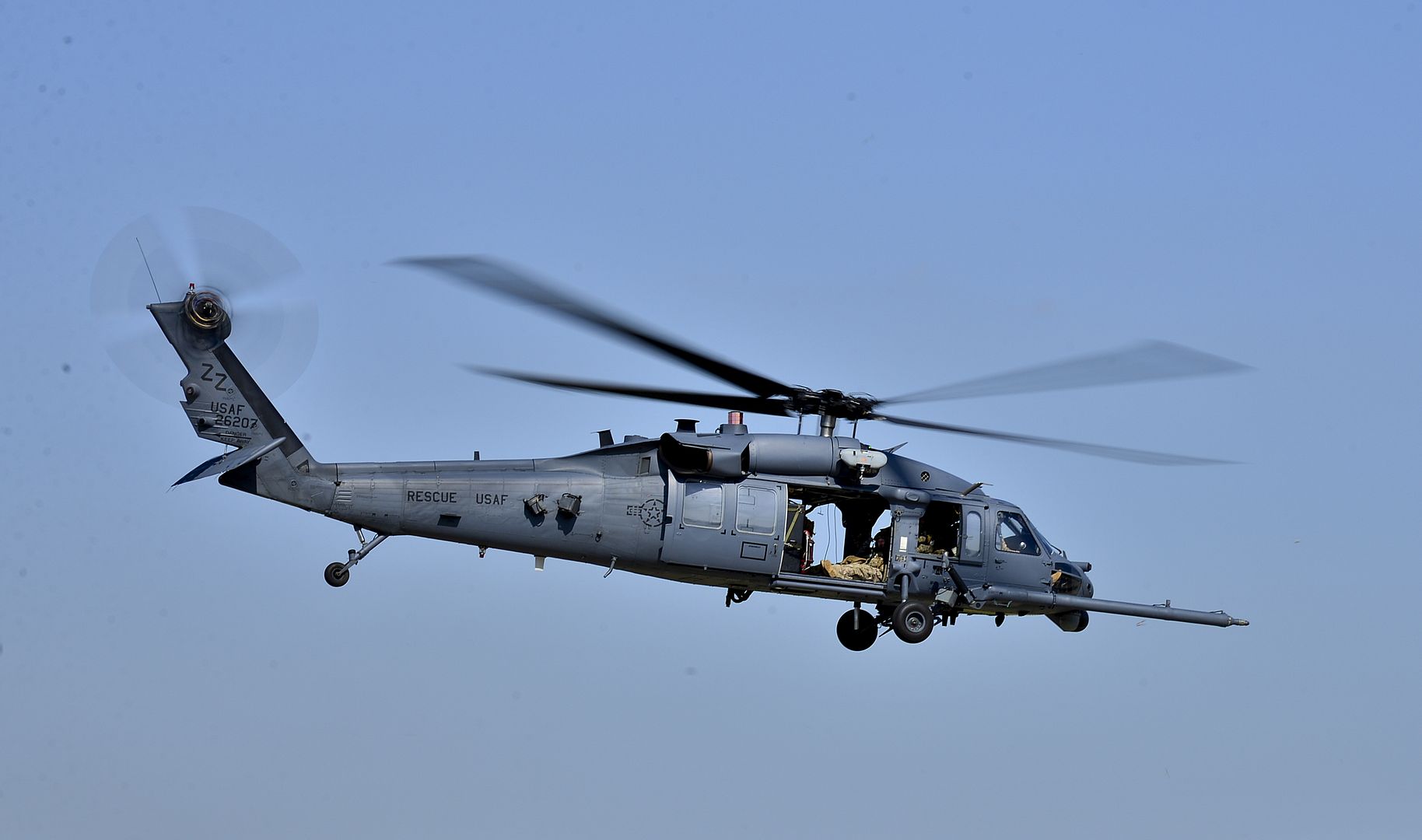
-
 Main AdminA German air force Eurofighter Typhoon flies alongside a U.S. Air Force KC-135 from RAF Mildenhall, England, after receiving fuel Oct. 24, 2017, over Germany.
Main AdminA German air force Eurofighter Typhoon flies alongside a U.S. Air Force KC-135 from RAF Mildenhall, England, after receiving fuel Oct. 24, 2017, over Germany.
(U.S. Air Force photo by Airman 1st Class Benjamin Cooper)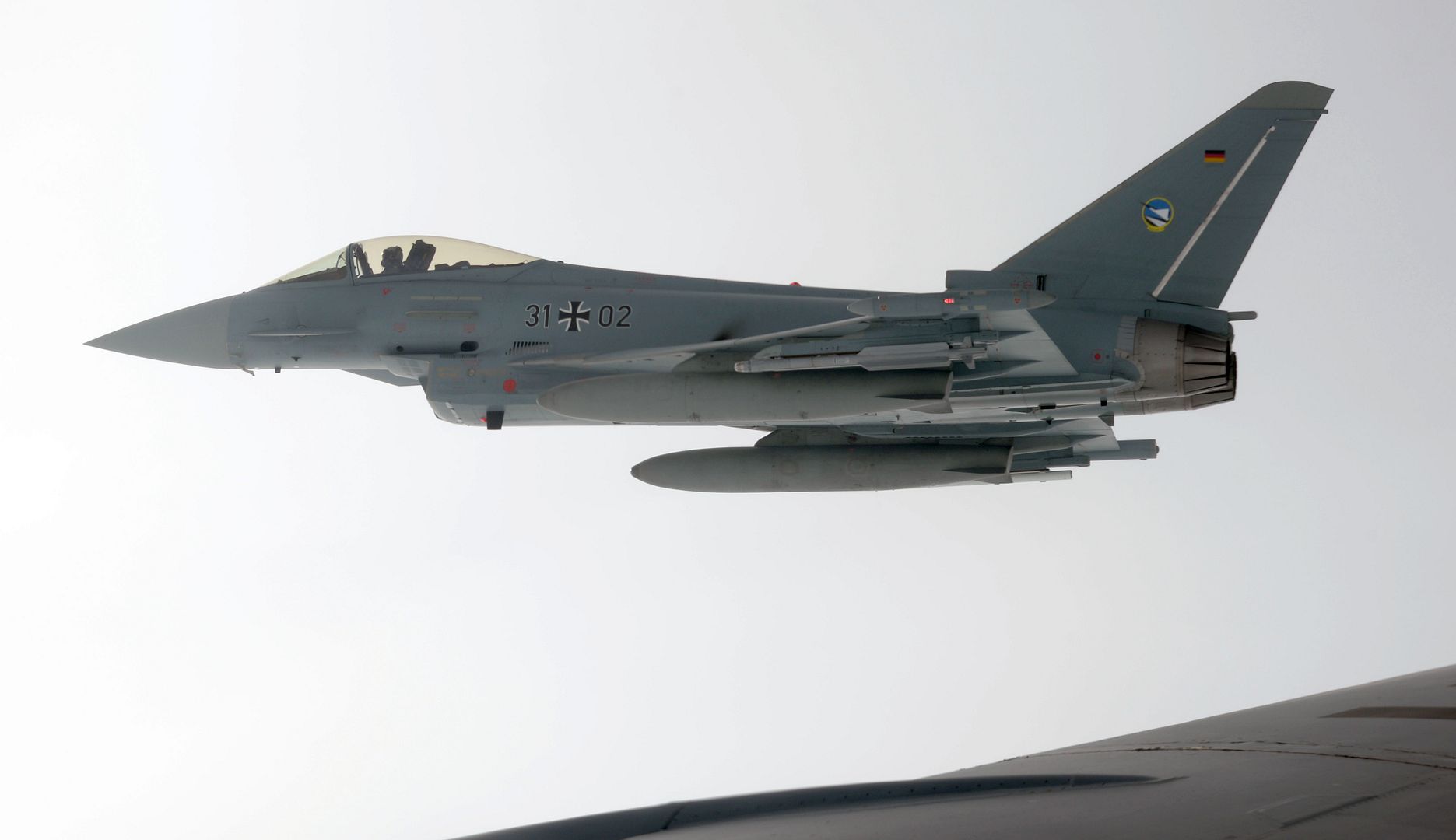
U.S. Marine Sgt. Maj. Allen Goodyear, the squadron sergeant major for Marine Fighter Attack Squadron (VMFA) 211, Marine Aircraft Group 13, 3rd Marine Aircraft Wing, signals for an F-35B Lightning II to launch from the flight deck of the USS Essex (LHD 2) during Exercise Dawn Blitz, Oct. 24, 2017. Goodyear is one of a few individuals qualified to direct aircraft without the military occupation skillset of an aviation boatswain's mate (aircraft handling). Exercises such as Dawn Blitz 2017 provide realistic, relevant training necessary for an effective global U.S. Navy and Marine Corps. (U.S. Marine Corps photo by Sgt. April L. Price)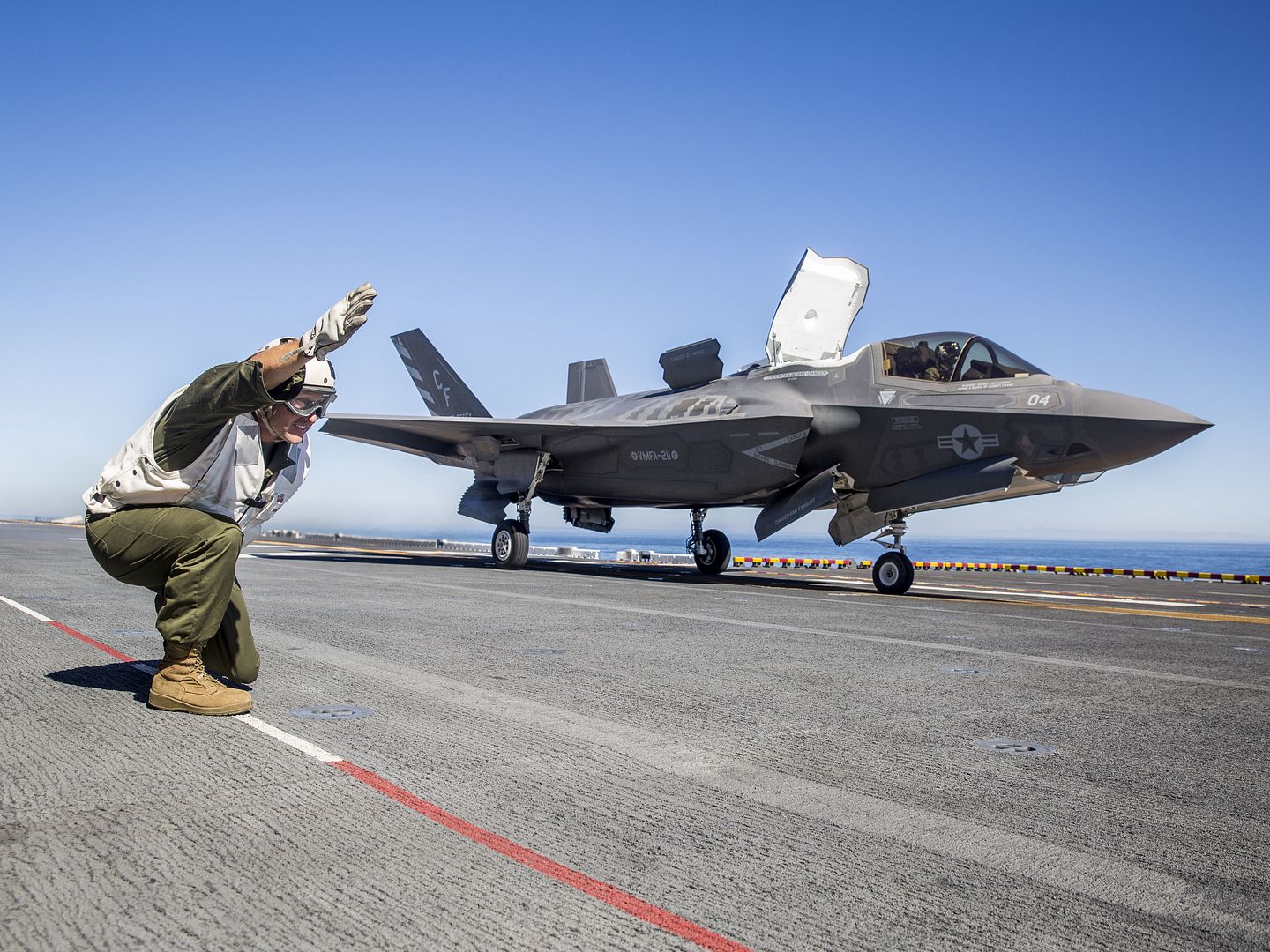
U.S. Air Force Maj. Zachary Probst, test pilot with the 40th Flight Test Squadron, Eglin Air Force Base, FL flew a rehearsal flight testing the telemetry of the AQM 37C at RAF Lossiemouth, Scotland during Formidable Shield 2017. The mission is intended as an Local Area Orientation flight in preparation for Formidable Shield 2017. (U.S. Air Force photos by Staff Sgt. Brandi Hansen)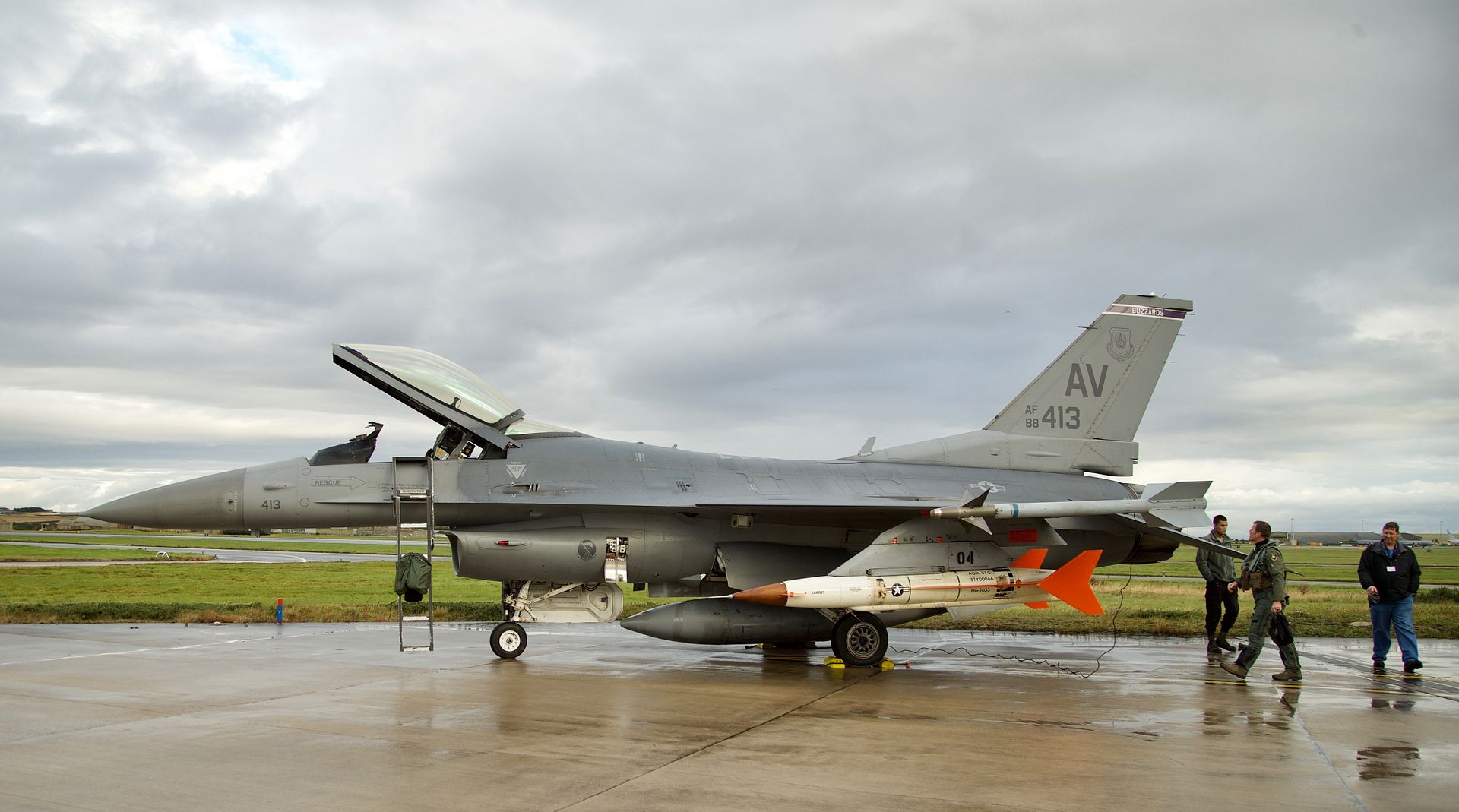
A U.S. Air Force KC-135 Stratotanker sits on the flightline at the Athens International Airport, Athens, Greece, Oct. 25, 2017. The KC-135 is scheduled to conduct air to air refueling training with the Hellenic air force in the upcoming days. (U.S. Air Force photo by Senior Airman Tenley Long)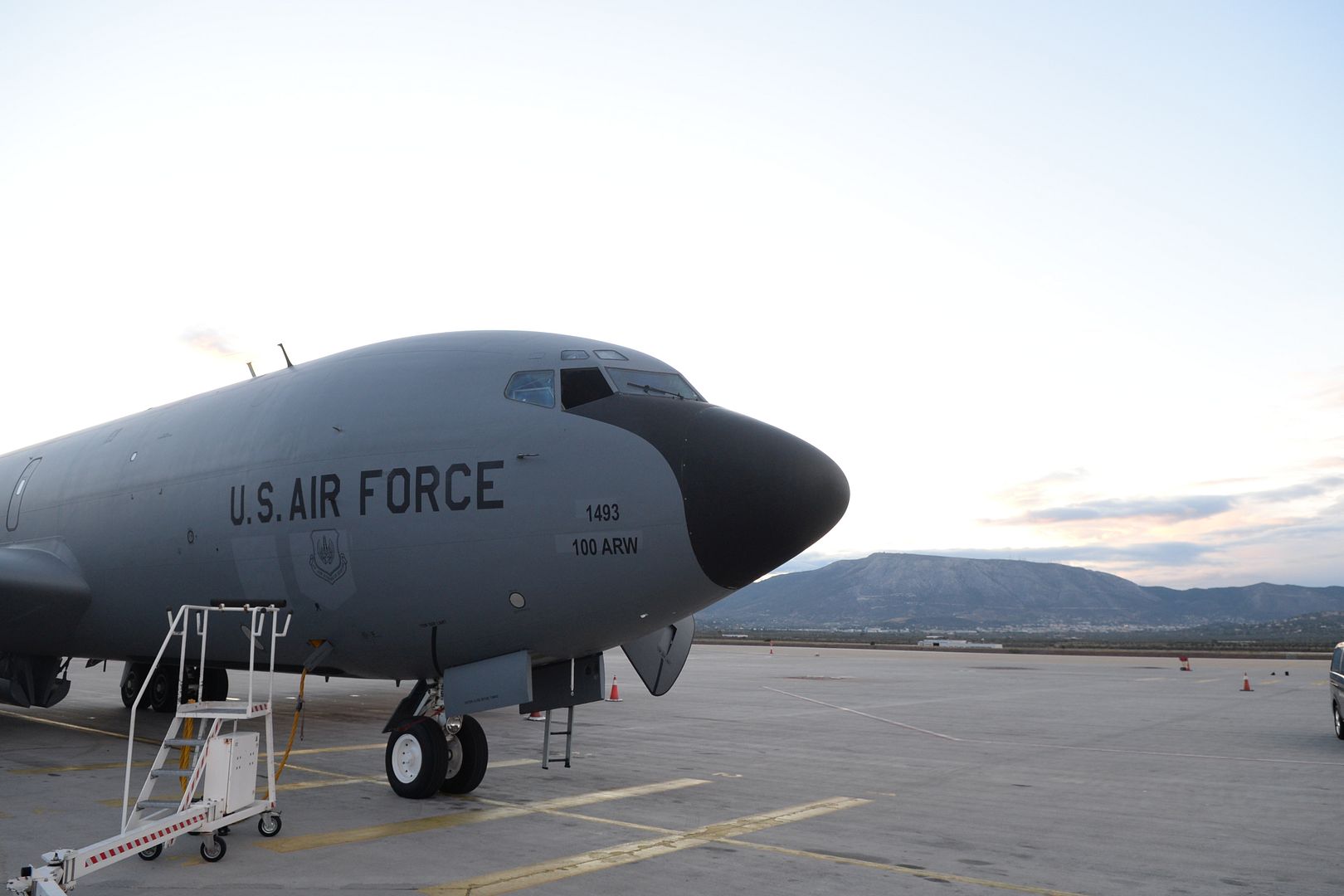
EDWARDS AIR FORCE BASE, Calif. --
A B-52 Stratofortress from the 419th Flight Test Squadron is sporting new nose art to commemorate it?s storied past.
Renowned aviation artist Mike Machat completed the artwork earlier this month on B-52 #60-0036. Machat recently completed nose art on an Edwards B-1B Lancer and was again commissioned by the 412th Test Wing for this project.
About 50 years ago, the bomber was used in a top secret test program named Tagboard. The program, which has since been declassified, involved testing the D-21, which was a ramjet-powered reconnaissance drone that could reach Mach 3 speed. The new nose art is a re-application of the original work, which has since been painted over following routine maintenance, according to Master Sgt. David Peralta, 912th Aircraft Maintenance Squadron, Bomber Aircraft Maintenance Unit superintendent.
?Lt. Col. Middleton (419th FLTS commander) brought the original artwork on the nose of aircraft 0036 to the maintenance unit?s attention,? said Peralta. ?Since we had recently went through the process of getting approval and the painting completed on the B-1 to honor Desert High School, our AMU sought approval to restore the original artwork from the 60s and 70s because of its historical significance.?
According to Air Force Test Center History Office documents, all manned flights over the Soviet Union were discontinued by President Dwight Eisenhower after Francis Gary Powers? U-2 spy plane was shot down May 1, 1960. While the U.S. government was planning on using satellites for reconnaissance, the technology was still a few years away and the Central Intelligence Agency determined unmanned drones could fill the gap until satellites became viable.
The D-21 required a mothership to launch given its ramjet engine, which needed to be air-launched at a certain speed to activate. Initially, Lockheed testers used an M-21 (essentially a modified SR-71 Blackbird) to air launch the D-21 drone. The D-21 would be launched from the back of the M-21. Ideally, after conducting its reconnaissance mission it would eject a hatch with photo equipment to be recovered either mid-air or after the hatch landed.
However, on the fourth flight test, the D-21 experienced an ?asymmetric unstart? as it passed through the bow wake of the M-21 causing the mothership to pitch up and collide with the D-21 at Mach 3.25. Crewmembers Bill Park and Ray Torick ejected from the M-21, but Torick?s flight suit became ripped and filled with water when he plunged into the ocean where he drowned.
After the accident, the M-21 launch program was cancelled but testers still believed the D-21 would make a valuable reconnaissance vehicle and decided to launch the drone from B-52Hs, one being #0036. The new code name for the D-21 project became Senior Bowl.
After several failed launch attempts, the first successful D-21 launch from a B-52 occurred June 16, 1968. The drone flew 3,000 miles at 90,000 feet. After a few more flight tests, the CIA and the Air Force decided to conduct four operational launches that all ended in failure in some way. Two flights were successful, however the imagery could not be recovered from the D-21?s hatch. The other two operational flights ended with one being lost in a heavily defended area and the other D-21 simply disappeared after launch.
The D-21 program was cancelled July 15, 1971, and both B-52s used for the program were returned to operational Air Force units.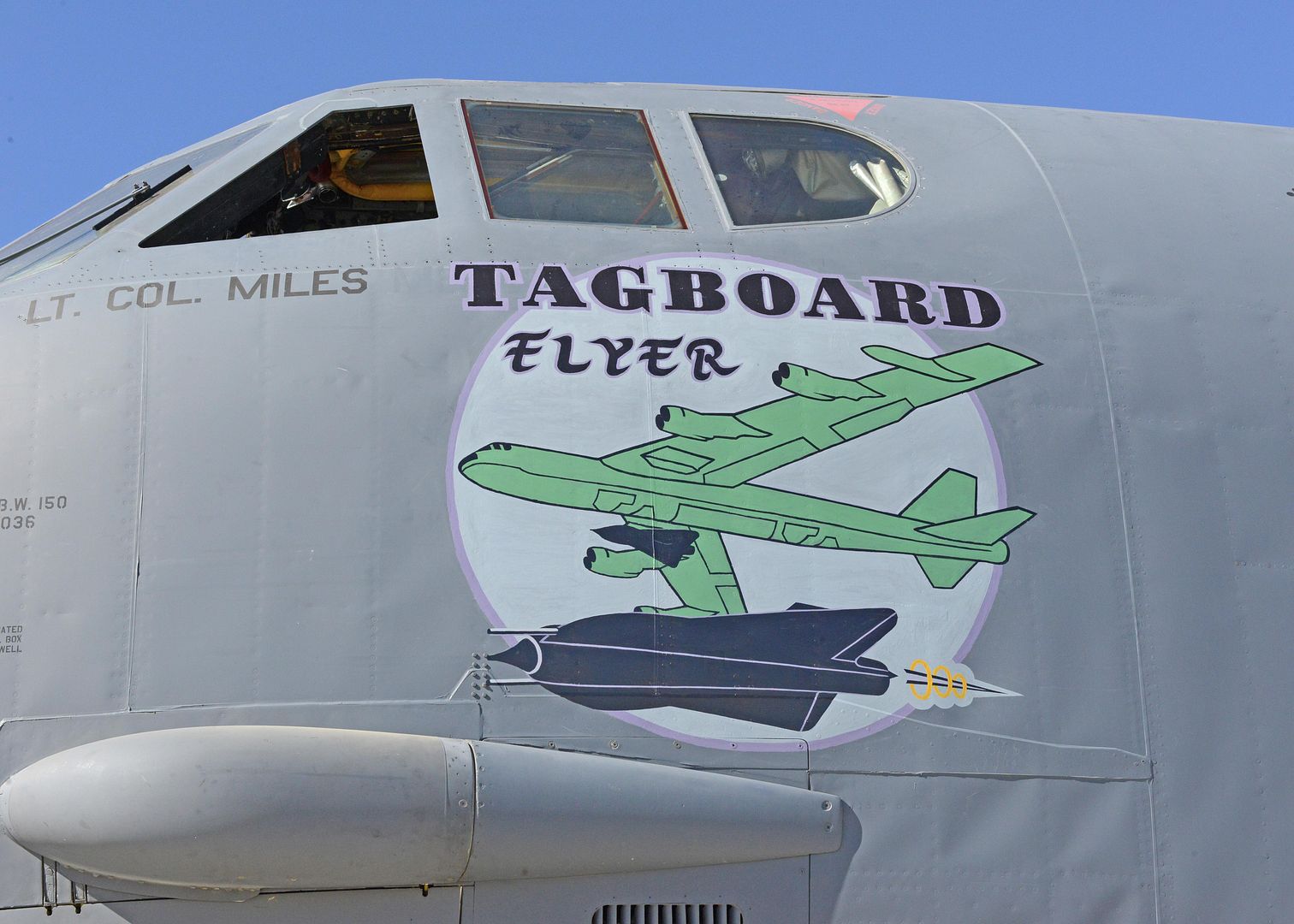
The B-52 #60-0036 currently assigned to the 419th FLTS at Edwards, arrived in 2001 where it has been used as a test bed ever since.
?Most of these maintenance and operations units, and many of these old planes, have a storied past. It is great to be able to embrace that heritage and history, while sharing it with the next generation,? Peralta said.
Peralta added that the artwork also was done in conjunction with the 419th FLTS? 75th anniversary of existence.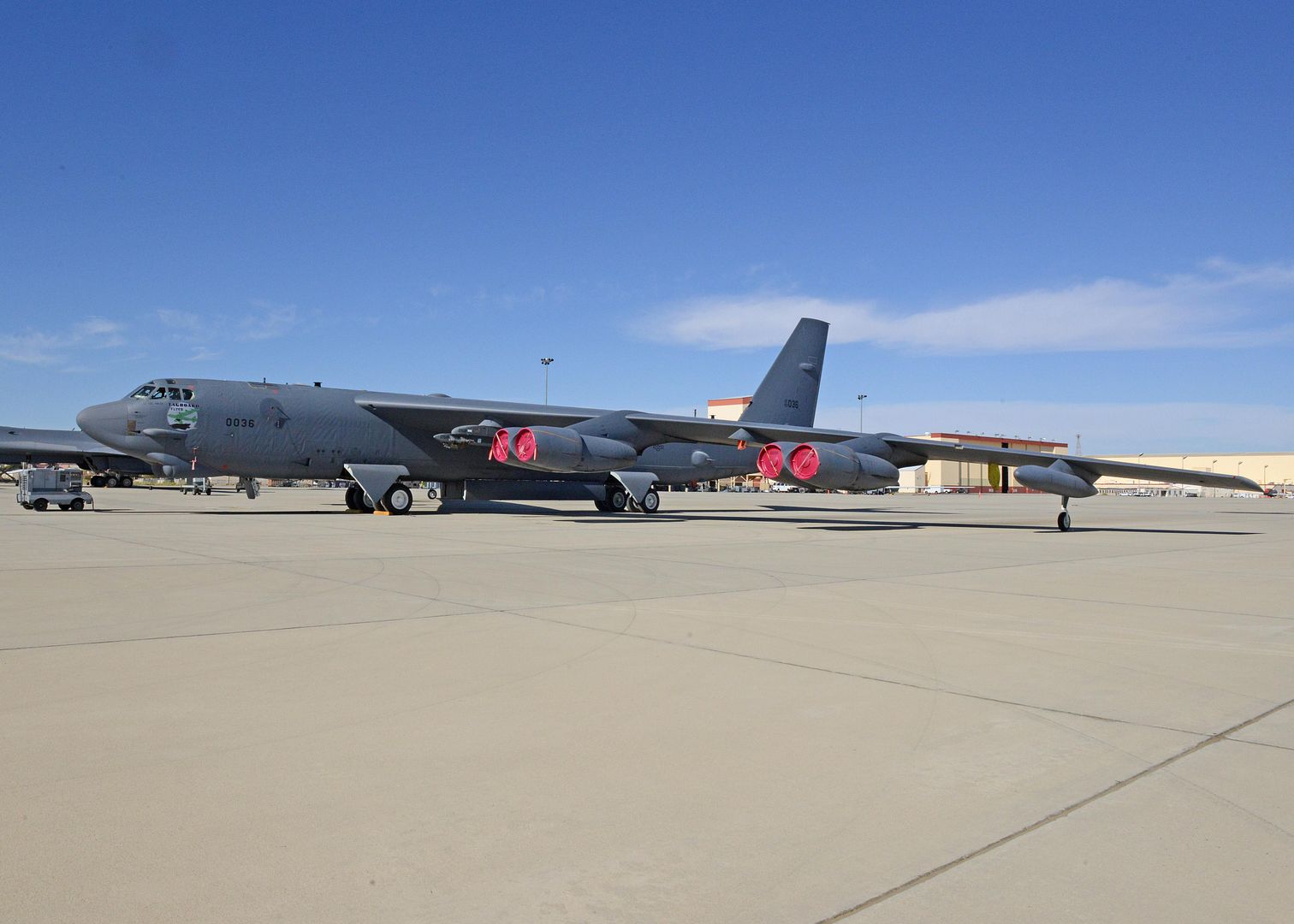
ARCHBALD, Pa., Oct. 25, 2017 /PRNewswire/ -- Lockheed Martin (NYSE: LMT) received a $131 million contract from the U.S. Air Force for follow-on production of Paveway II Plus Laser Guided Bomb (LGB) kits.
The contract represents the ninth consecutive year in which the U.S. Air Force selected Lockheed Martin to provide the majority share of LGB kits in the annual competition. The award also includes all available funding for the service's foreign military sales and replacement kits.
"The U.S. Air Force and its foreign military sales partners realize significant savings in their defense budgets with our affordable and combat-proven LGBs," said Joe Serra, Precision Guided Systems director at Lockheed Martin Missiles and Fire Control. "This innovative and cost-effective guidance package supports greater precision for warfighters."
Paveway II Plus includes an enhanced guidance package that improves accuracy over legacy LGBs. Qualified for full and unrestricted operational employment in GBU-10, -12 and -16 (1,000 pound) configurations, Paveway II Plus is cleared for use on U.S. Air Force, U.S. Navy and international aircraft authorized to carry and release LGBs. Lockheed Martin has been a qualified supplier of Paveway II LGB kits since 2001 and has delivered over 100,000 kits to customers.
Production of the guidance kits and air foil groups for GBU-10 (2,000 pound) and GBU-12 (500 pound) LGBs will begin in first quarter of 2018.
In addition to the Paveway II Plus LGB, Lockheed Martin's 350,000-square-foot production facility in Archbald, Pa., is the sole provider of the Enhanced Laser Guided Training Round and Paragon? direct attack munition. Lockheed Martin has delivered more than 160,000 training rounds and 7,000 dual-mode LGB kits to the U.S. Navy, U.S. Marine Corps, U.S. Air Force and 24 international customers.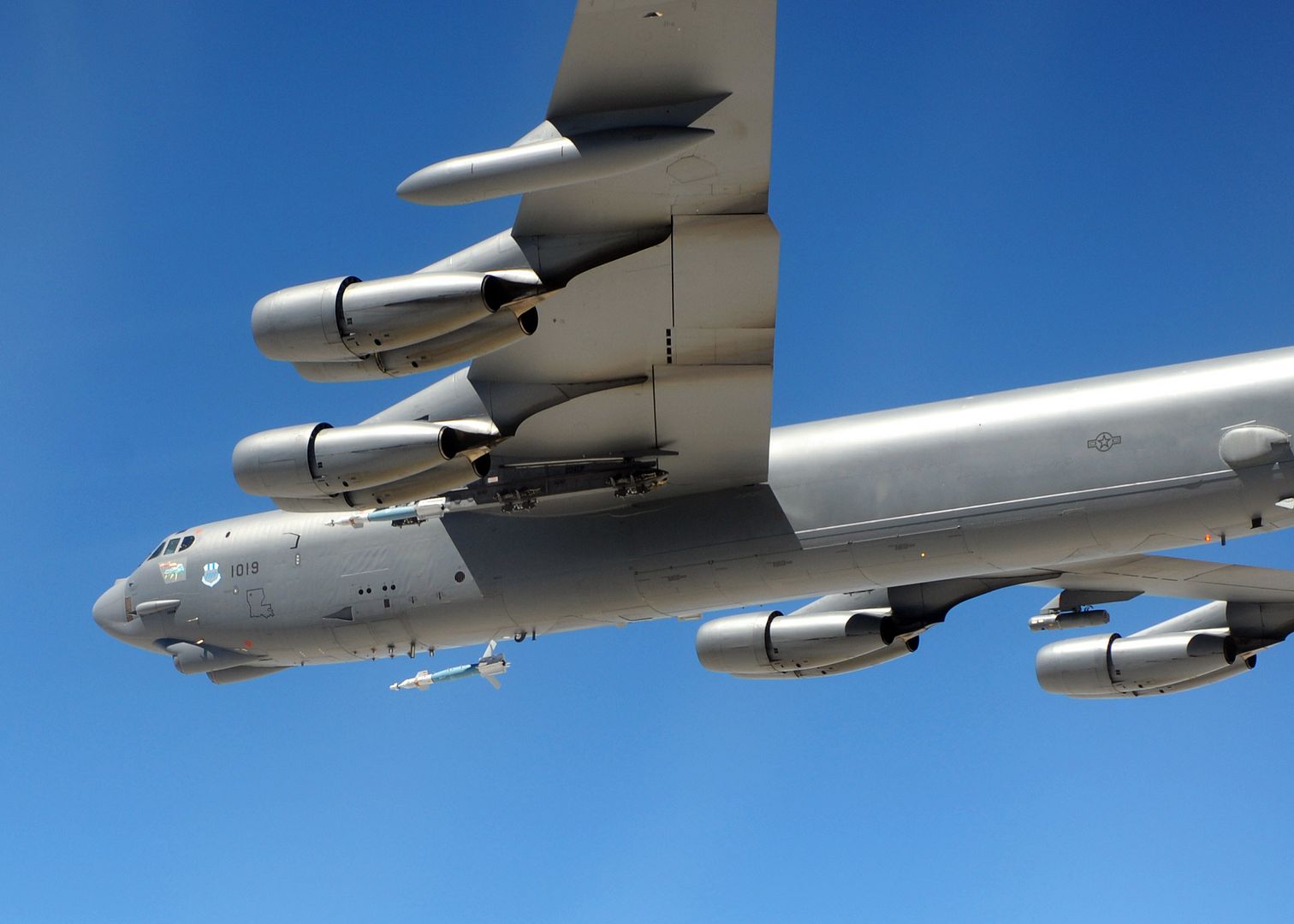
AirAsia has taken delivery of the first A320neo assembled at the Airbus Final Assembly Line Asia (FALA) at a dedicated ceremony in Tianjin, China. The aircraft, powered by CFM LEAP-1A engines, seats comfortably 186 passengers and is equipped with the innovative Space-Flex cabin.
AirAsia is the largest airline customer of the A320 Family with orders for 578 aircraft. These include 404 A320neo Family aircraft.
Aireen Omar, AirAsia Berhad Chief Executive Officer said: ?We are very proud to receive the first Airbus A320neo fully assembled in Tianjin, China and we would like to congratulate Airbus, as well as the Chinese Government for achieving yet another milestone. China is today one of the world?s most important markets for aviation, and we are honoured to be part of the development and rapid growth of China?s civil aviation. We are certainly proud to take delivery of this aircraft fully assembled in Tianjin and have this historic aircraft as part of our fleet?.
?The Airbus A320 aircraft has contributed immensely towards our business model and our operations. We received our first A320neo last year and this is our thirteenth Airbus A320neo that we are receiving for the group, which is also the 184th aircraft delivered by Airbus. As we expand our network and grow our fleet, it is important for us to stay at the forefront of our business. We are very pleased with the A320neo, which provides up to 15 percent fuel savings and an additional range of 500 nautical miles, which translates to a lower fares for our guests.? she added.
?I am very pleased to hand over the first A320neo to be assembled in Tianjin to AirAsia. AirAsia will continue to benefit from the unique commonality between all variants of the Airbus Family and enjoy efficiencies throughout its existing fleet.? said Eric Chen, President of Airbus Commercial Aircraft China. ?The delivery of the NEO is a milestone for our Asia Final Assembly Line, which will help to meet the robust demand of our customers in China and the Asia-Pacific region.?
The FALA in Tianjin, inaugurated in 2008 became the third single-aisle aircraft final assembly line location of Airbus worldwide, following Toulouse and Hamburg. It was also the first Airbus Final Assembly Line outside Europe. Today, some 340 aircraft have been assembled and delivered from Tianjin, China.
The A320neo Family incorporates the very latest technologies including new generation engines and Sharklets, which together deliver at least 15 percent fuel savings at delivery and 20 percent by 2020. With more than 5,200 orders received from 95 customers since its launch in 2010, the A320neo Family has captured some 60 percent share of the market.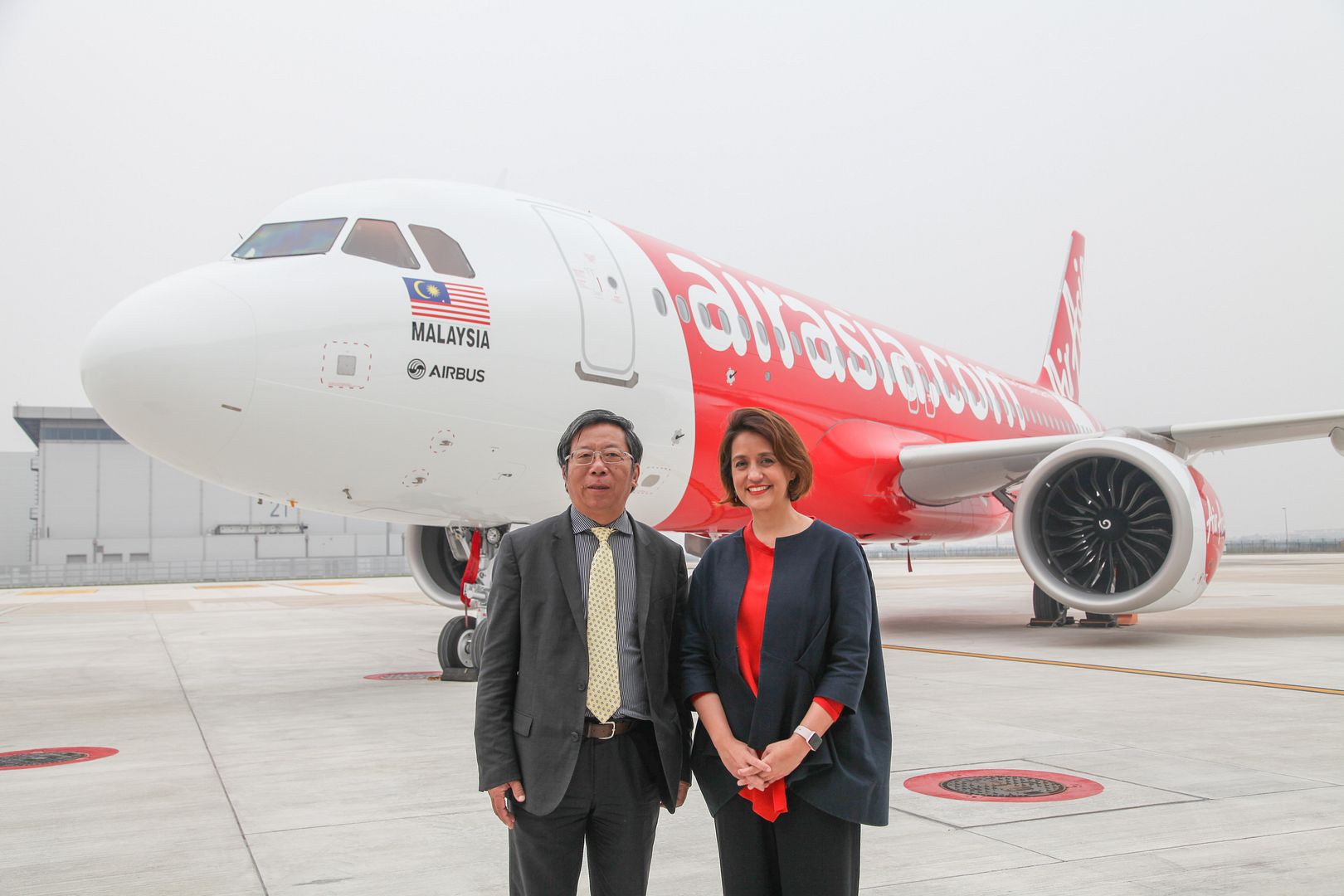
-
 Main AdminAn MI-17 aircraft with the Mexican Navy lands on Marine Corps Air Station New River, N.C., during exercise Bold Alligator, Oct. 23, 2017. Bold Alligator is a large scale multinational naval amphibious exercise conducted by U.S. Fleet Forces and Marine Corps Forces Command. (U.S. Marine Corps photo by Cpl.Jason Estevez)
Main AdminAn MI-17 aircraft with the Mexican Navy lands on Marine Corps Air Station New River, N.C., during exercise Bold Alligator, Oct. 23, 2017. Bold Alligator is a large scale multinational naval amphibious exercise conducted by U.S. Fleet Forces and Marine Corps Forces Command. (U.S. Marine Corps photo by Cpl.Jason Estevez)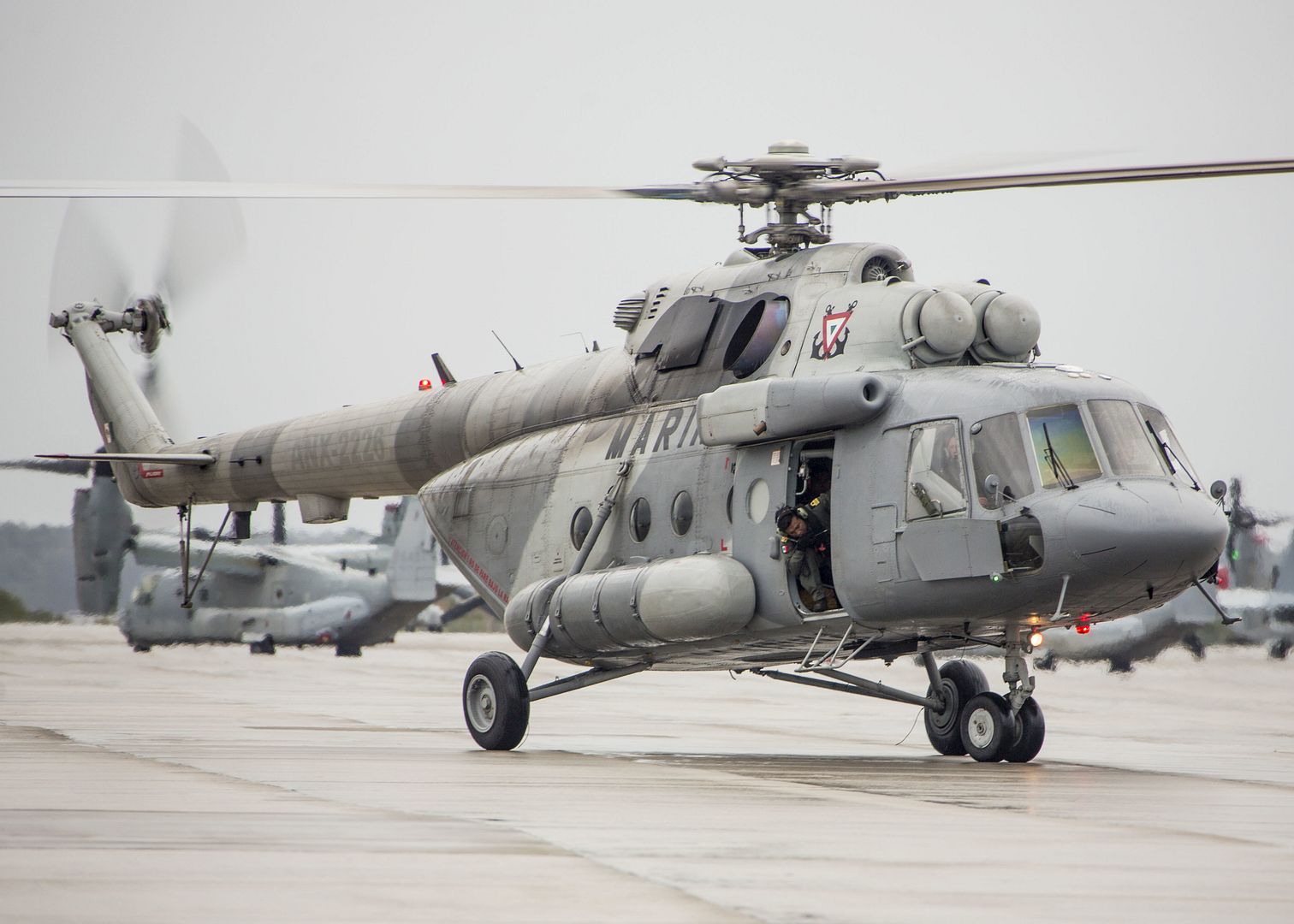
A U.S. Air Force F-22 Raptor from the 1st Fighter Wing, Joint Base Langley-Eustis, Va., sits on the flightline Oct. 17, 2017, at Powidz Air Base, Poland. The Raptors forward deployed from RAF Lakenheath in support of the training and exercises with U.S. Air Force F-15 aircraft and NATO allies. (U.S. Air Force photo by Senior Airman Tenley Long)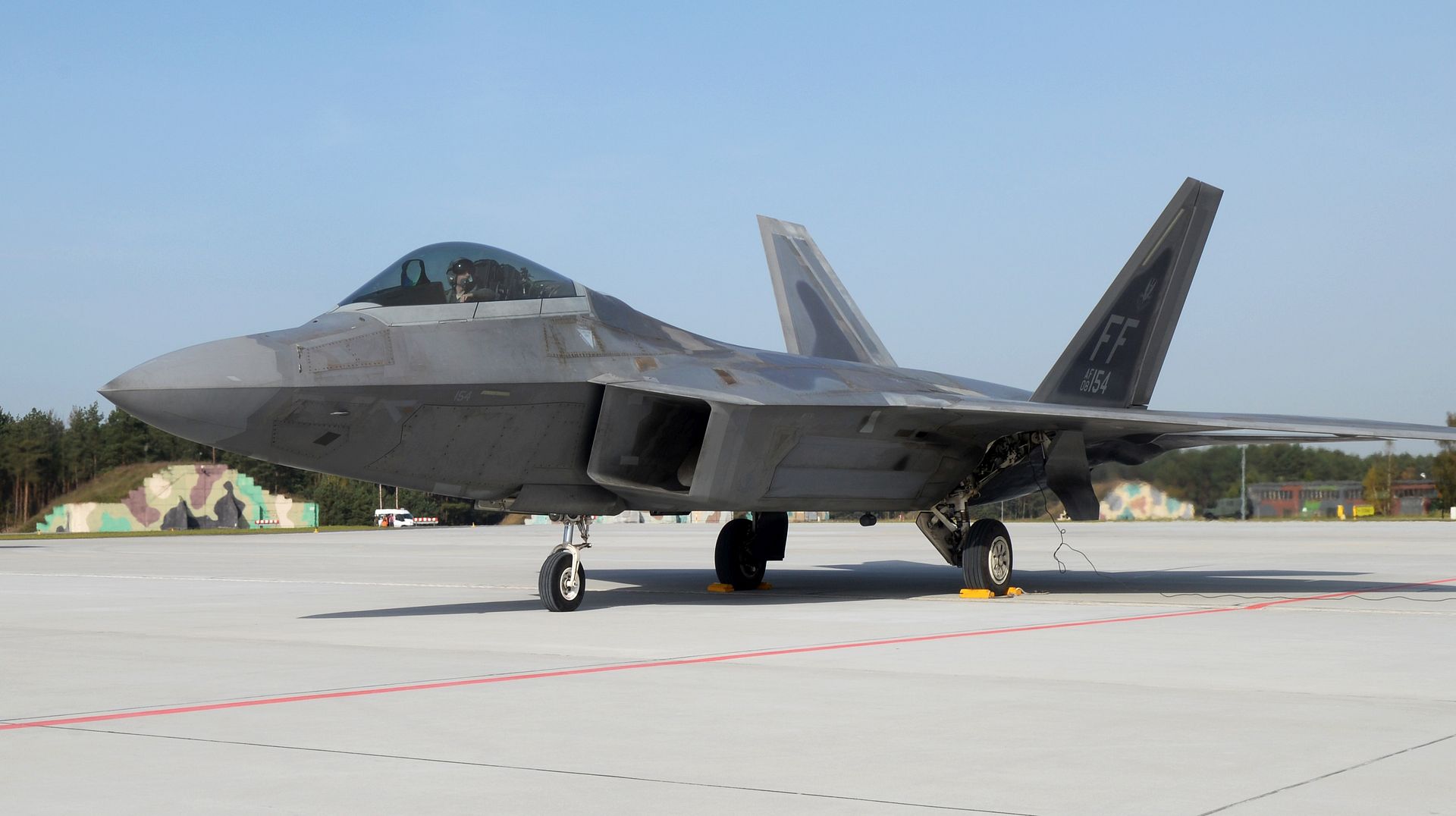
Chinook helicopters from the 2-227th Aviation Regiment, 1st Air Cavalry Brigade out of Fort Hood Texas arrive at Katterbach Army Airfield in Ansbach, Bavaria, Germany, Oct. 25, 2017. The 2-227th Aviation Regiment, 1st Air Cavalry Brigade is on a nine-month rotation in support of Atlantic Resolve. Atlantic Resolve is a demonstration of continued U.S. commitment to collective security through a series of actions designed to reassure NATO allies and partners of America's dedication to enduring peace and stability in the region. (U.S. Army photo by Training Resource Specialist Charles Rosemond)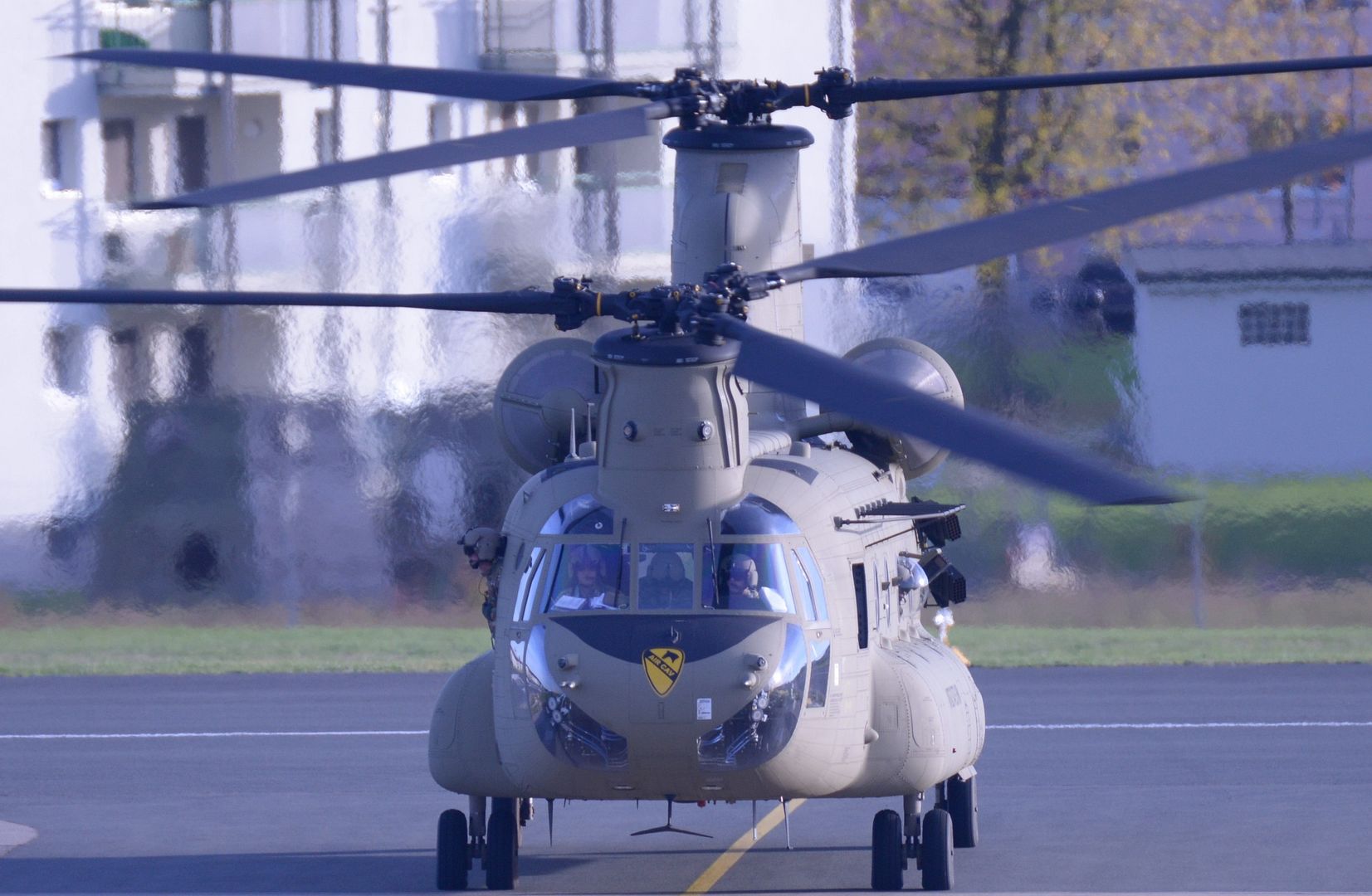
CARIBBEAN SEA (Oct. 25, 2017) A Coast Guard Dolphin HH-65C Helicopter conducts deck landing qualifications on the Military Sealift Command hospital ship USNS Comfort (T-AH 20). Comfort is underway operating in the vicinity of Ponce, Puerto Rico. The Department of Defense is supporting the Federal Emergency Management Agency, the lead federal agency, in helping those affected by Hurricane Maria to minimize suffering and is one component of the overall whole-of-government response effort. (U.S. Navy photo by Mass Communication Specialist 2nd Class Stephane Belcher/Released)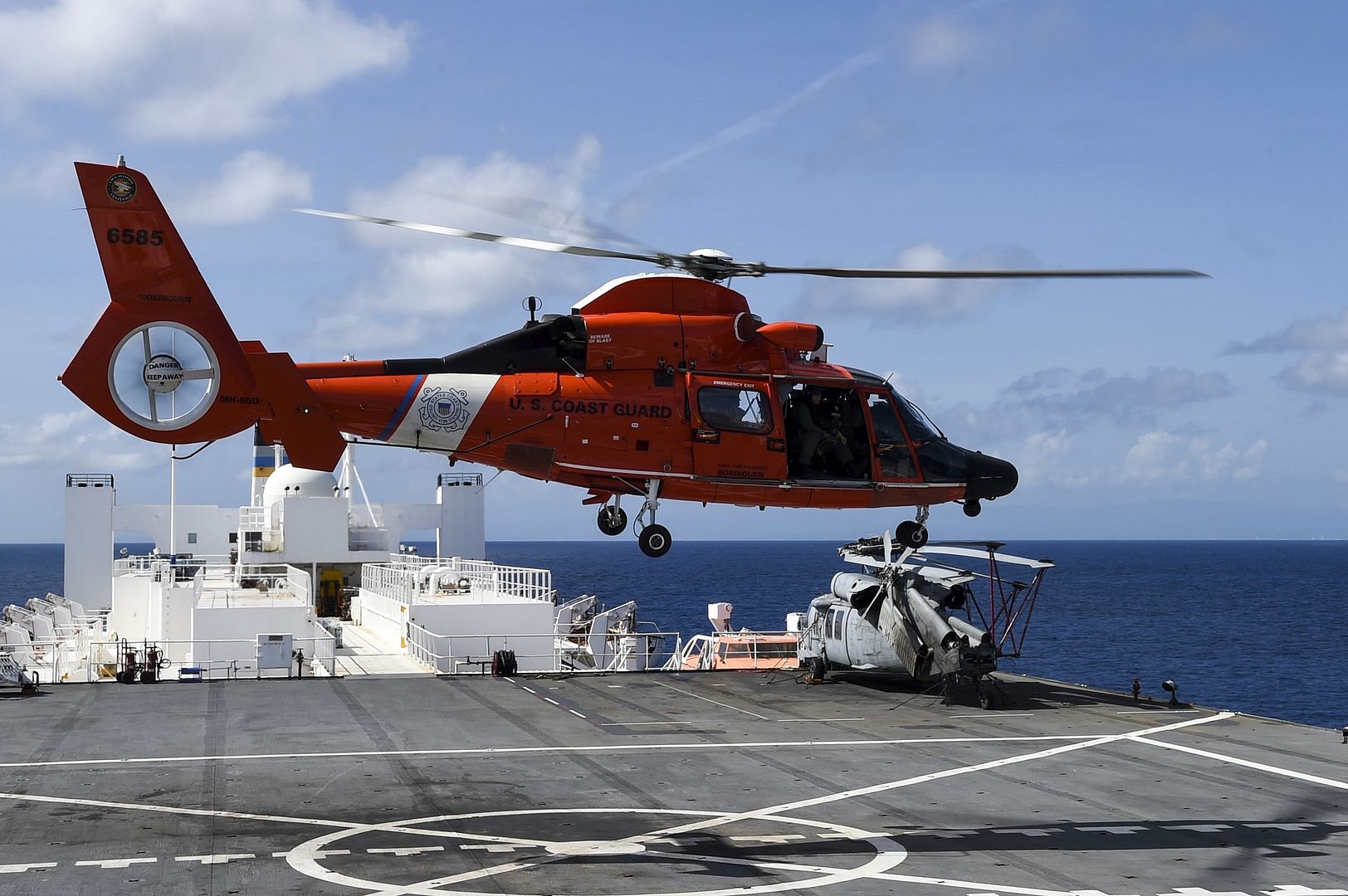
U.S. Army Soldiers from the 7th Special Forces Group and Chilean Army special forces perform a helocast over Big Lake in Gulfport, Mississippi during Southern Strike 18, Oct. 25, 2017. Southern Strike 18 is a total force, multi-service training exercise hosted by the Mississippi Air National Guard's Combat Readiness Training Center in Gulfport, Mississippi from Oct. 23 through Nov. 4, 2017. The exercise emphasizes air-to-air, air-to-ground and special operations forces training opportunities. These events are integrated into demanding hostile and asymmetric scenarios with actions from specialized ground forces and combat and mobility air forces. (U.S. Air Force photo by Airman 1st Class Kristen Heller)
LOS ANGELES (Oct. 25, 2017) F-16 Fighting Falcons from the 416th Flight Test Squadron circle Downtown Los Angeles as part of a four-ship flyover that kicked off Game 2 of the World Series at Dodger Stadium. The 416th Flight Test Squadron conducts developmental testing for the F-16 while supporting additional objectives throughout the Air Force, which recently observed it's 70th anniversary of supersonic flight. (U.S. Air Force photo by Christopher Okula)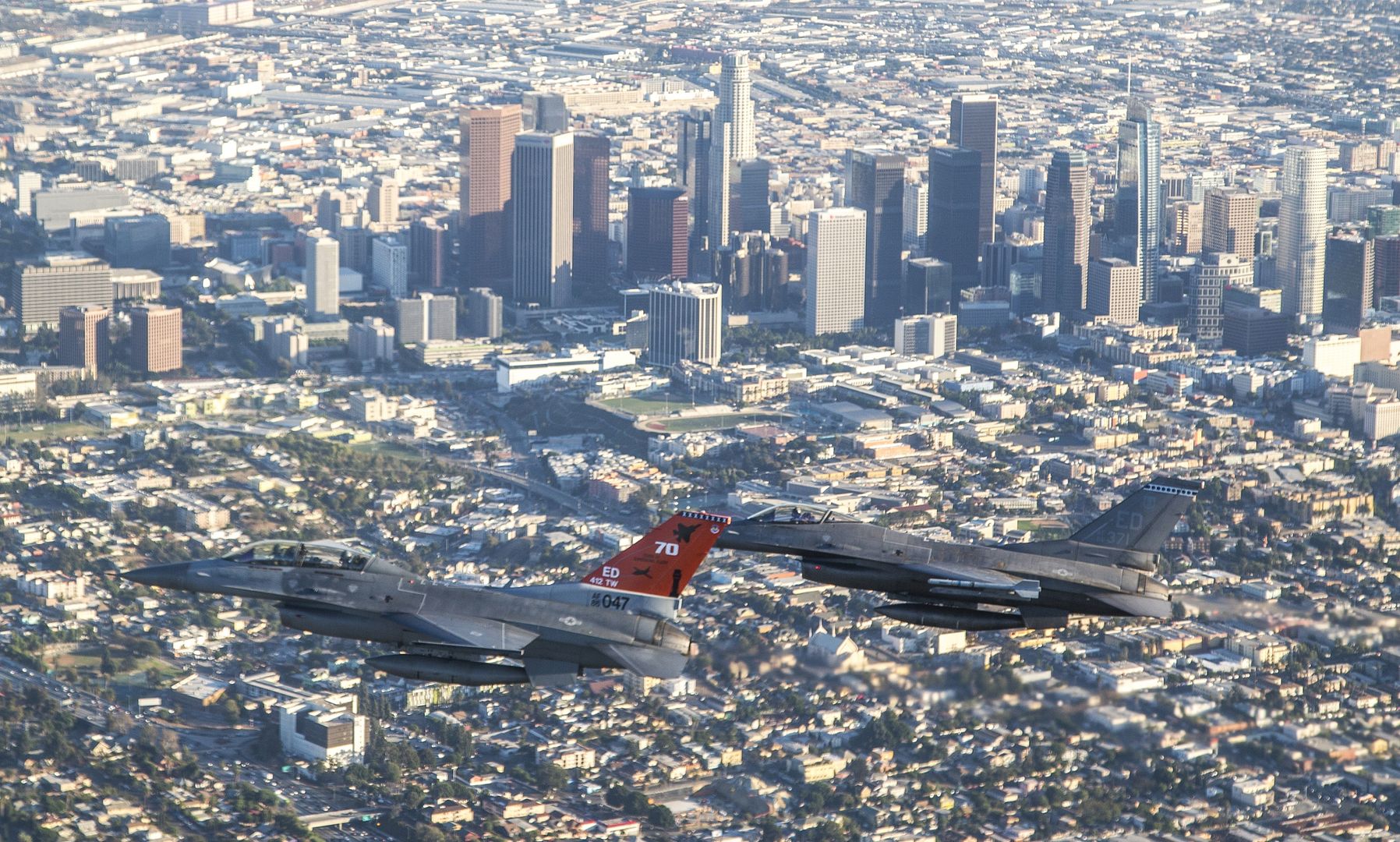
PACIFIC OCEAN (Oct. 26, 2017)
Four F/A-18C Hornets, assigned to the Checkerboards of Marine Strike Fighter Attack Squadron (VMFA) 312, fly in formation over Wake Island and the aircraft carrier USS Theodore Roosevelt (CVN 71) during a U.S. Navy Heritage event for the crew. Theodore Roosevelt is underway for a regularly scheduled deployment in the U.S. 7th Fleet area of operations in support of maritime security operations and theater security cooperation efforts. U.S. Navy photo by Mass Communication Specialist 3rd Class Anthony J. Rivera (Released)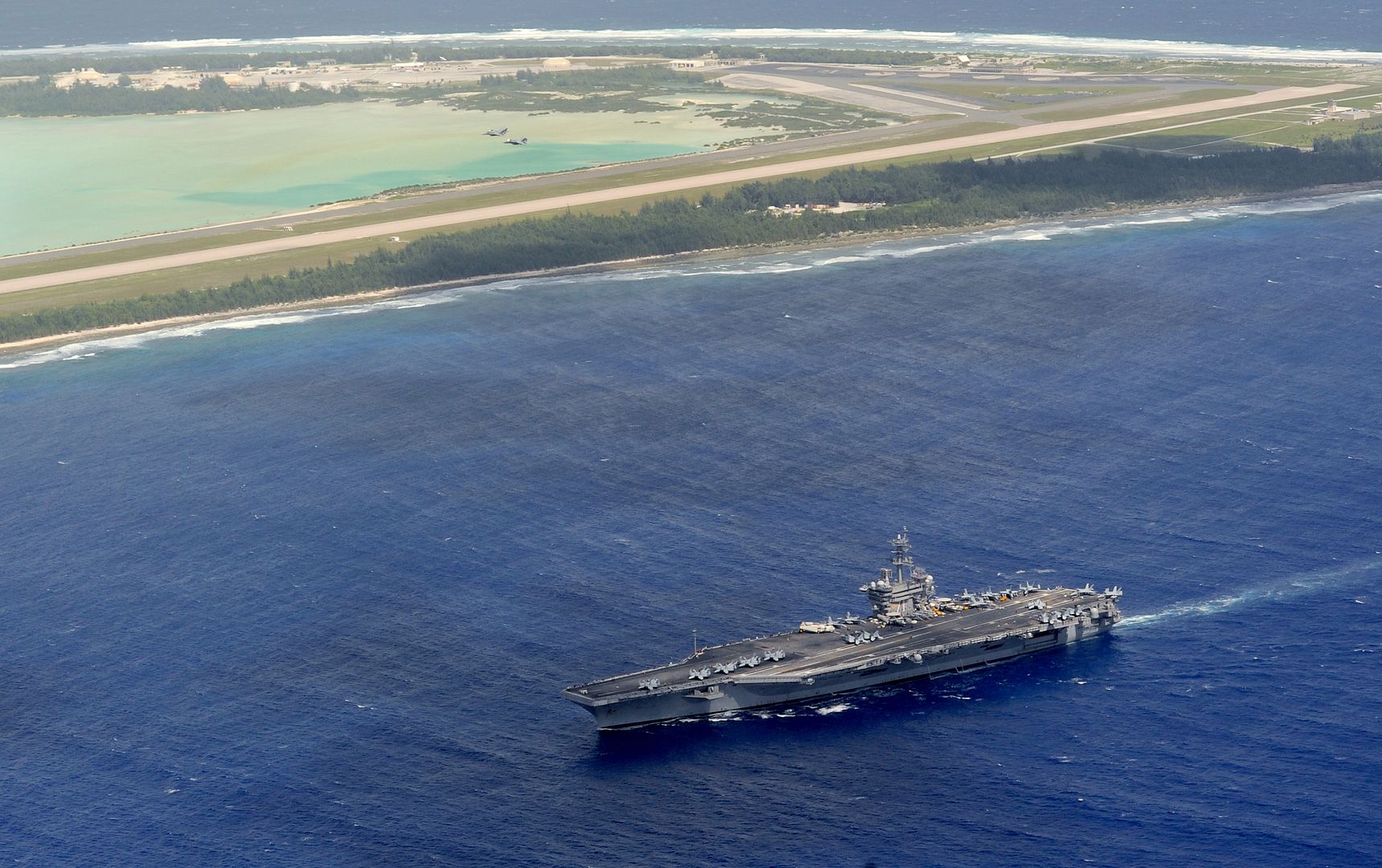
Citilink, the low-cost unit of Garuda Indonesia, has taken delivery of its 50th A320 Family aircraft at Airbus headquarters in Toulouse, France. The aircraft, an A320neo, can seat up to 180 passengers in a single class layout.
The aircraft has been delivered with a special livery to commemorate the milestone, and it joins another 45 A320ceo and four A320neo that are already in service with the airline.
Citilink has selected CFM Leap-1A engines to power its A320neo fleet, and has 30 more of the aircraft on order for future delivery. It is using its growing fleet of Airbus single-aisle aircraft to expand its domestic and regional network.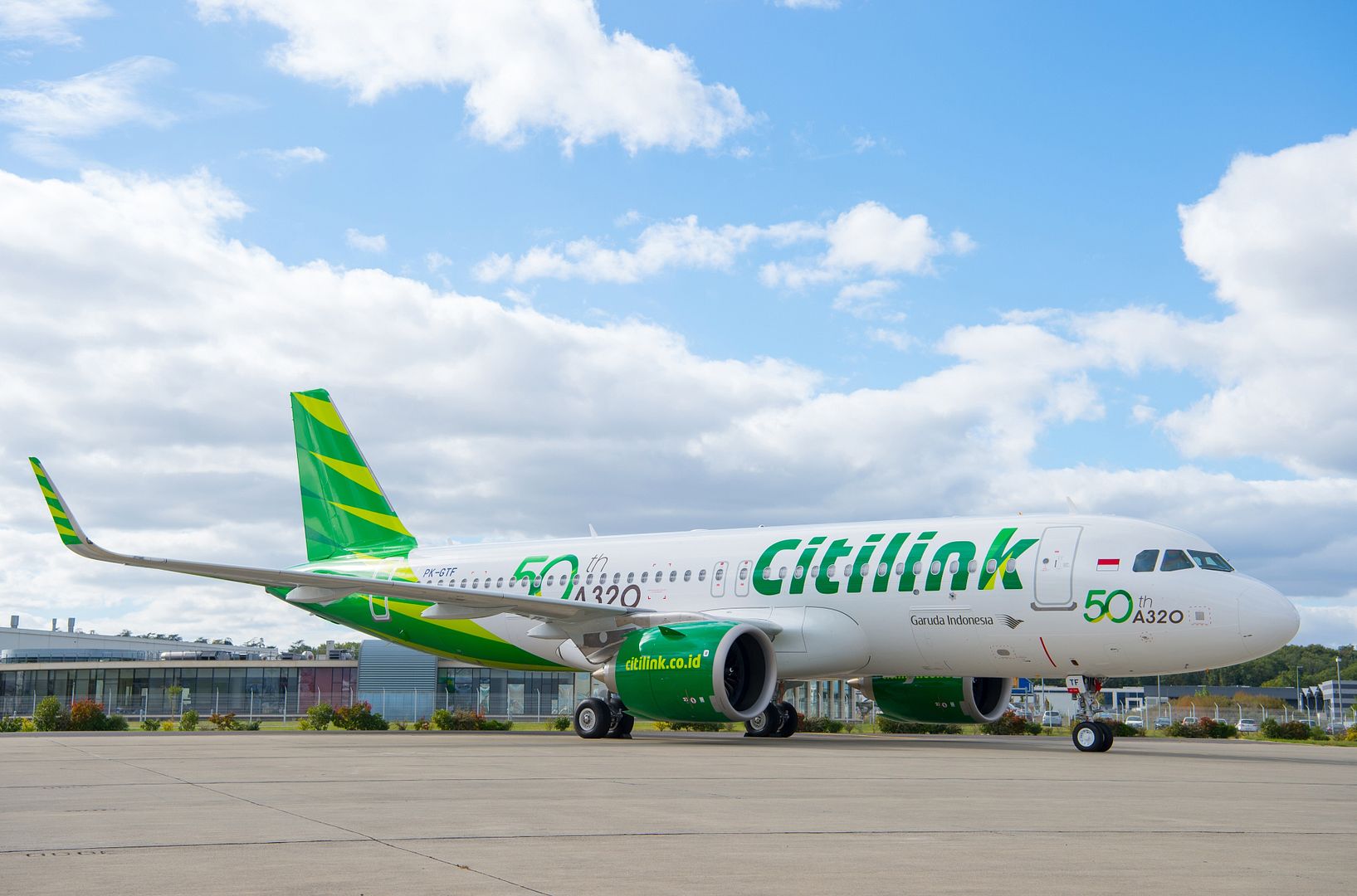
The A320neo Family incorporates the very latest technologies including new generation engines and Sharklets, which together deliver at least 15 percent fuel savings at delivery and 20 percent by 2020. With more than 5,000 orders received from over 90 customers since its launch in 2010, the A320neo Family has captured some 60 percent share of the market.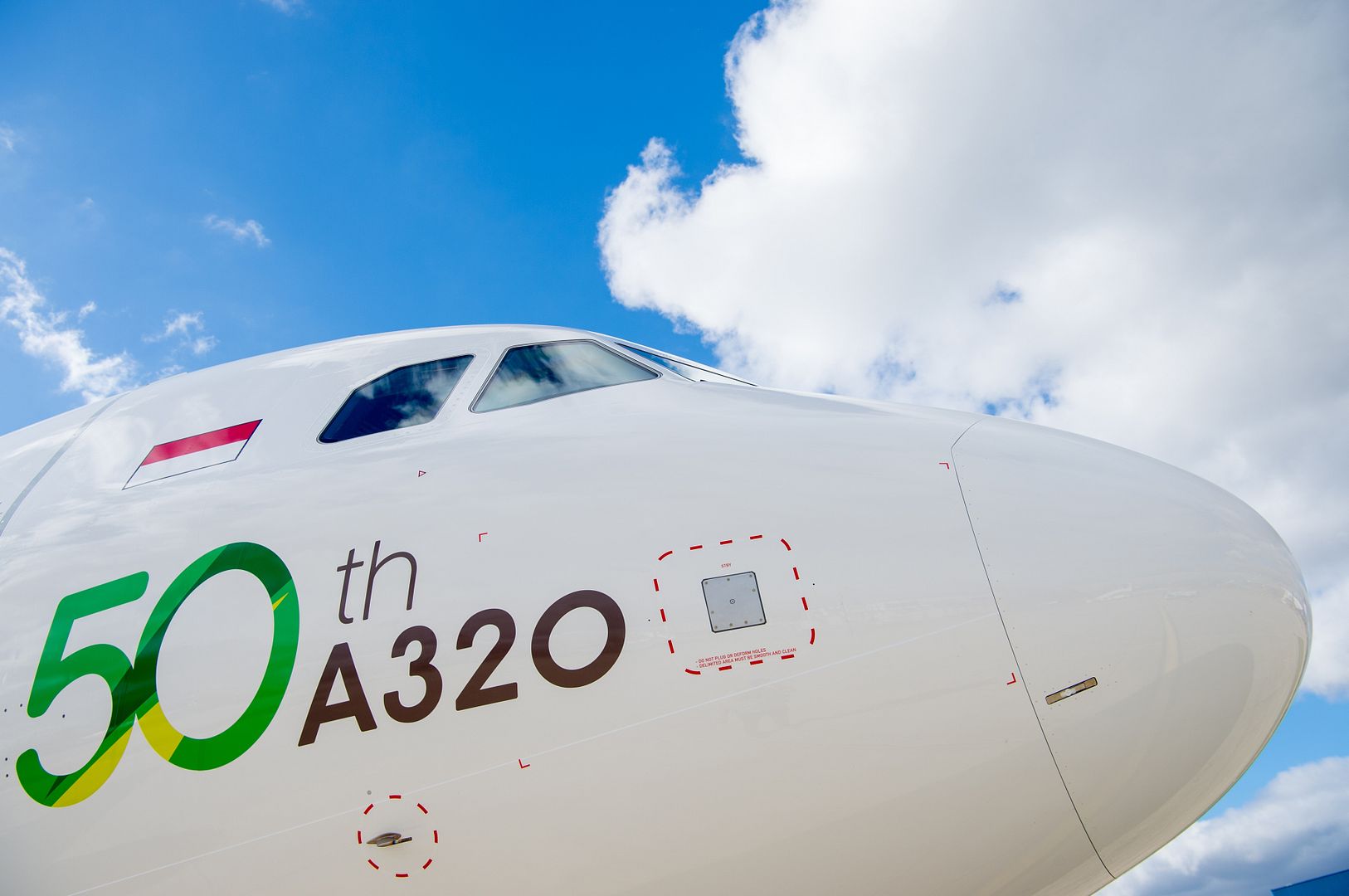
-
 Main AdminAn HH-60G Pave Hawk flies in a demonstration during the Thunder Over South Georgia Airshow, Oct. 28, 2017, at Moody Air Force Base, Ga. The open house is an opportunity for Moody to thank the local community for all its support, and exhibit air power and it included aerial performances, food, face painting and much more. (U.S. Air Force photo's by Staff Sgt. Ryan Callaghan)
Main AdminAn HH-60G Pave Hawk flies in a demonstration during the Thunder Over South Georgia Airshow, Oct. 28, 2017, at Moody Air Force Base, Ga. The open house is an opportunity for Moody to thank the local community for all its support, and exhibit air power and it included aerial performances, food, face painting and much more. (U.S. Air Force photo's by Staff Sgt. Ryan Callaghan)
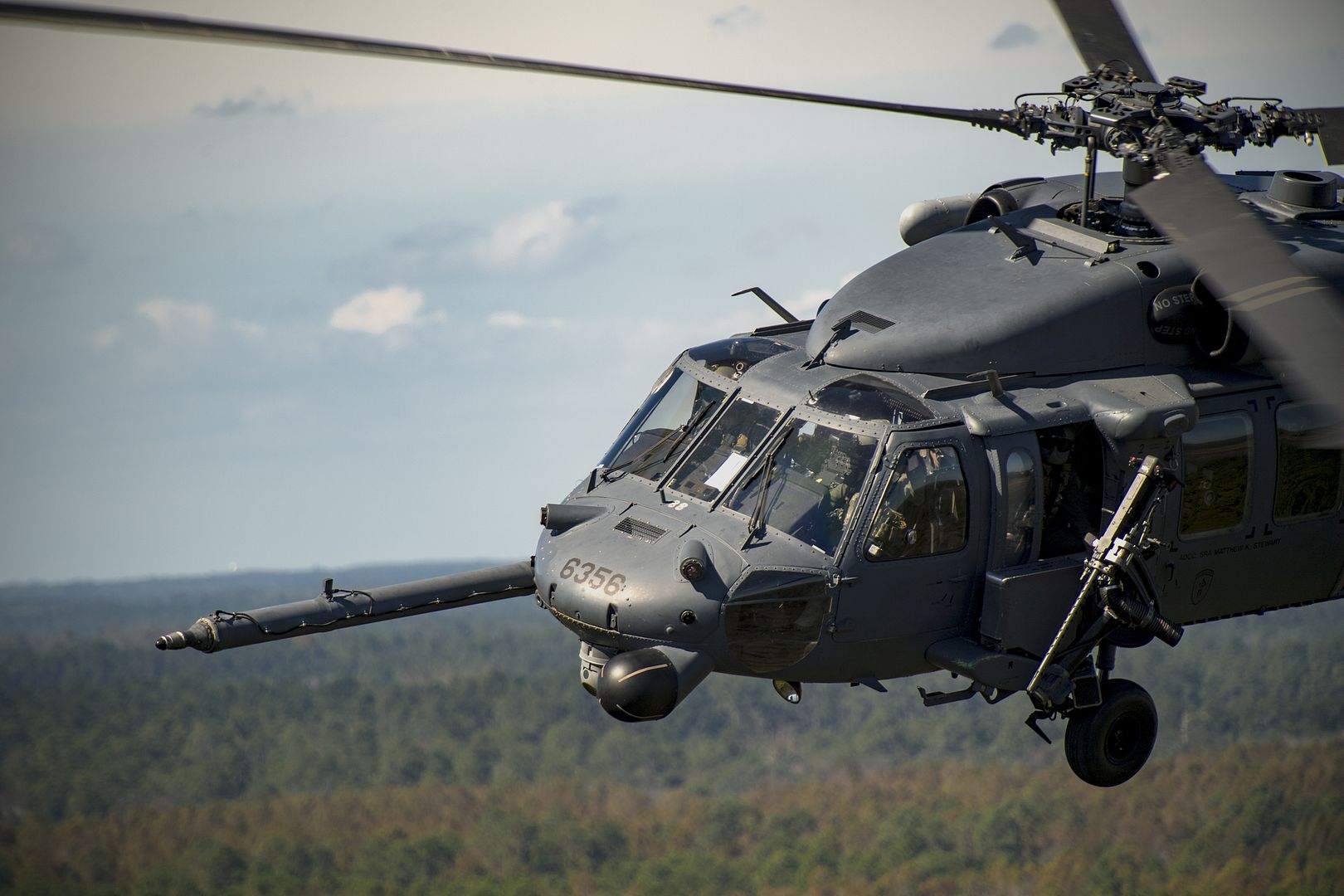
A MIG-17 aircraft soars past a crowd during Thunder Over South Georgia Airshow, Oct. 28, 2017, at Moody Air Force Base, Ga. The airshow aims to educate the public on past and present Air Force aerial capabilities, increase recruiting and show appreciation to the local community. (U.S. Air Force photo by Senior Airman Daniel Snider)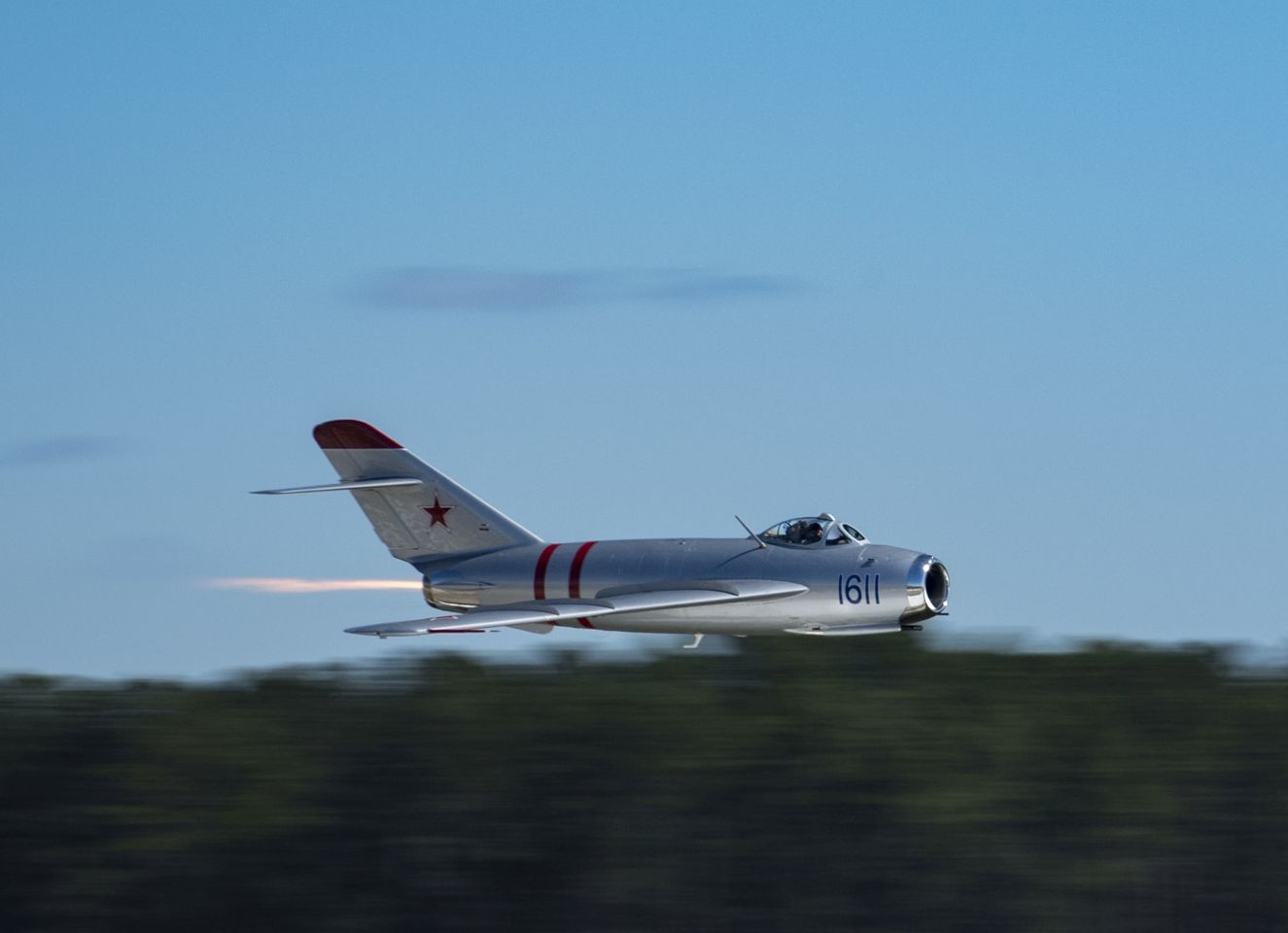
An F/A-18C Hornet assigned to Marine Fighter Attack Squadron 115 flies off after being refueled during Integrated Training Exercise (ITX) 1-18 over Marine Corps Air Ground Combat Center, Twentynine Palms, Calif., Oct. 28, 2017. ITX is a large-scale, combined-arms training exercise intended to produce combat-ready forces capable of operating as an integrated Marine Air Ground Task Force. (U.S. Marine Corps photo by Staff Sgt. Kowshon Ye)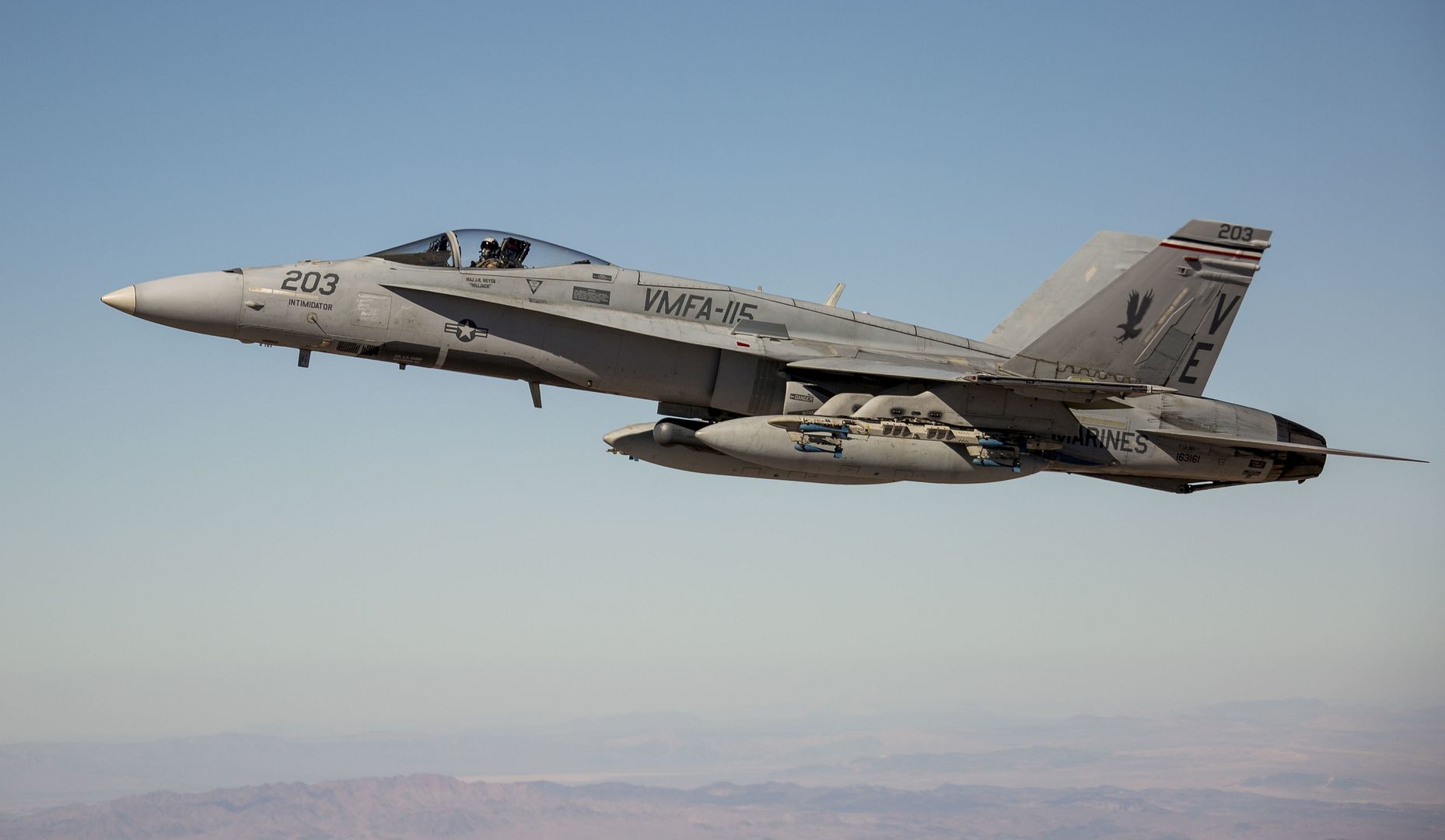
An F/A-18C Hornet assigned to Marine Fighter Attack Squadron 115 conducts aerial refueling during Integrated Training Exercise (ITX) 1-18 over Marine Corps Air Ground Combat Center, Twentynine Palms, Calif., Oct. 28, 2017. ITX is a large-scale, combined-arms training exercise intended to produce combat-ready forces capable of operating as an integrated Marine Air Ground Task Force. (U.S. Marine Corps photo by Staff Sgt. Kowshon Ye)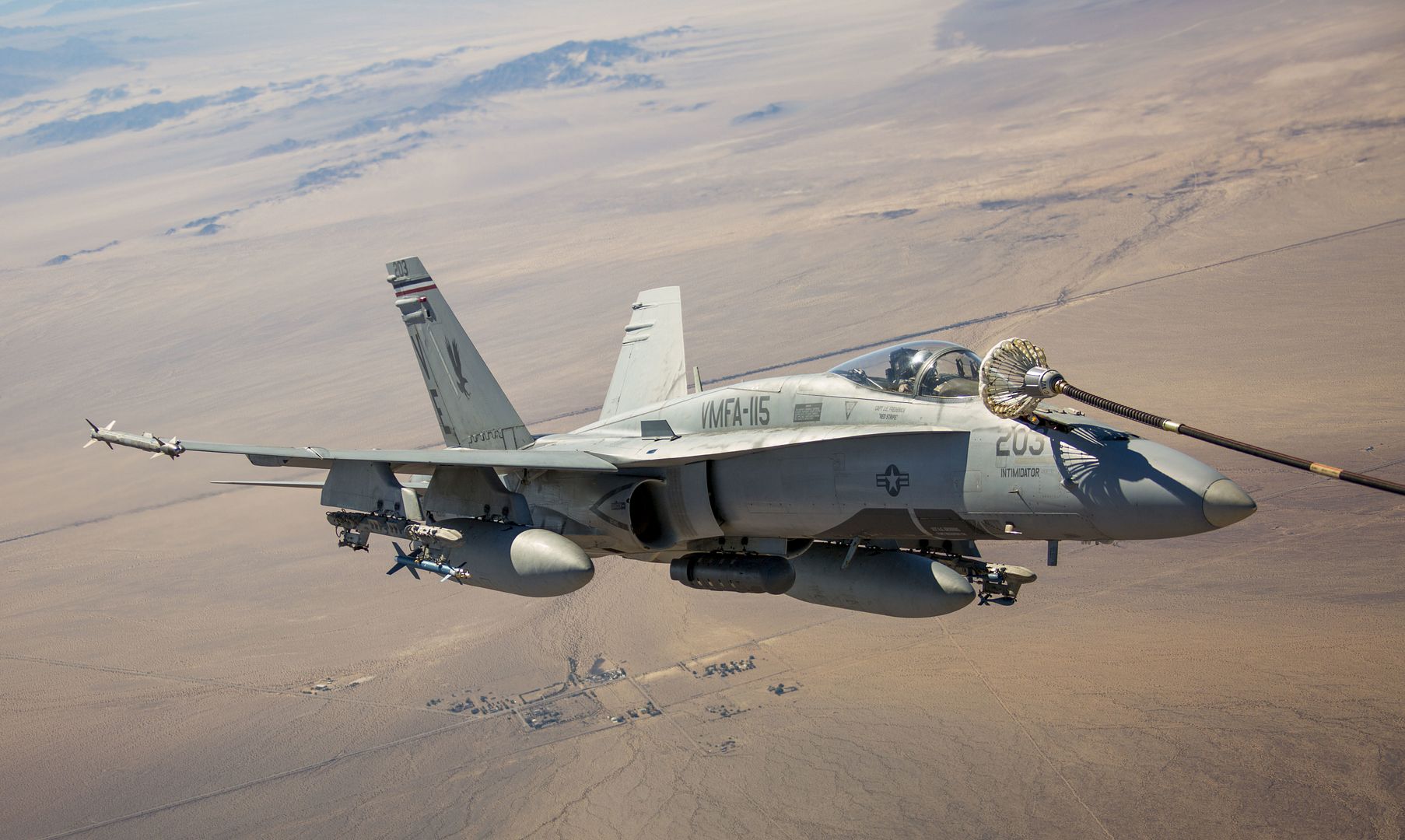
An F/A-18C Hornet assigned to Marine Fighter Attack Squadron 115 conducts aerial refueling during Integrated Training Exercise (ITX) 1-18 over Marine Corps Air Ground Combat Center, Twentynine Palms, Calif., Oct. 28, 2017. ITX is a large-scale, combined-arms training exercise intended to produce combat-ready forces capable of operating as an integrated Marine Air Ground Task Force. (U.S. Marine Corps photo by Staff Sgt. Kowshon Ye)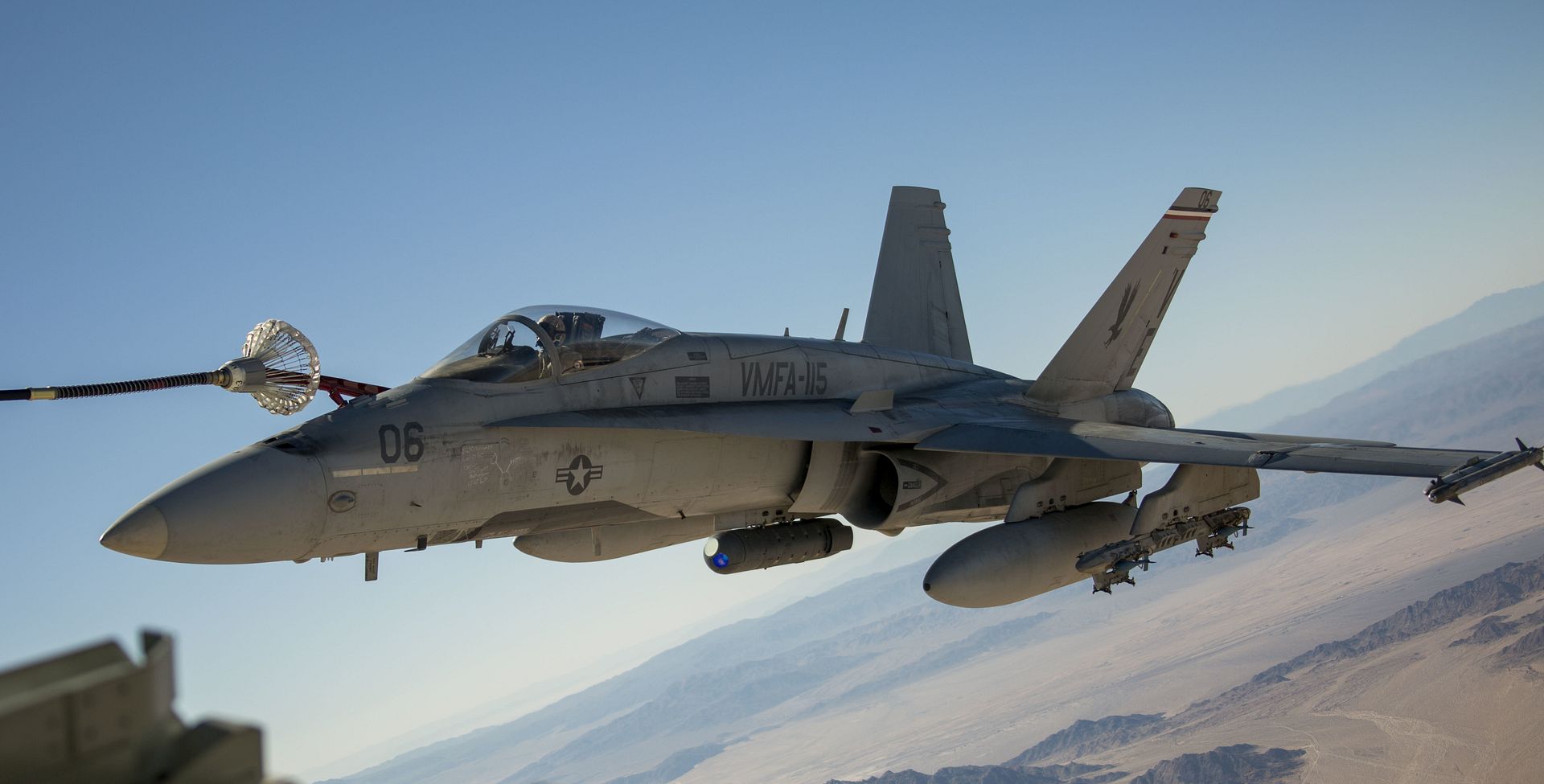
Three F-15 Strike Eagles fly beside a KC-135 Stratotanker after receiving fuel Oct. 27, 2017. KC-135s enable global reach for American and allied aircraft, ensuring swift results to any situation. (U.S. Air Force photo by Senior Airman Chris Thornbury)
ADDIS ABABA, Ethiopia, Oct. 27, 2017 /PRNewswire/ -- Boeing [NYSE: BA] and Ethiopian Airlines celebrated the delivery of the carrier's first Boeing 787-9. Ethiopian is leasing the Dreamliner through an agreement with AerCap.
Ethiopian's newest 787 touched down in Addis Ababa following a non-stop 8,354 mile (13,444 km) delivery flight from Boeing's Everett, Wash., facility. Ethiopian becomes the first carrier in Africa to operate the 787-9 and extends a tradition of setting aviation milestones. Ethiopian became Africa's first carrier to fly the 787-8 in 2012, and similarly introduced the 777-200LR (Longer Range), 777-300ER (Extended Range) and 777 Freighter.
"We are proud to celebrate yet another first with the introduction of the cutting-edge 787-9 into our young and fast growing fleet," said Mr. Tewolde GebreMariam, Group CEO of Ethiopian Airlines. "Today, the 787 is the core of our fleet with 20 aircraft in service. Our investment in the latest technology airplanes is part of our Vision 2025 strategy and our commitment to our esteemed customers to offer complete on-board comfort. We will continue to invest in the most advanced aircraft to give our customers the best possible travel experience."
The 787 Dreamliner is the most innovative and efficient airplane family flying today. Since 2011, more than 600 Dreamliners have entered commercial services, flying almost 200 million people on more than 560 unique routes around the world, saving an estimated 19 billion pounds of fuel.
"AerCap is very proud to deliver to Ethiopian Airlines their first 787-9 aircraft, as the airline continues to lead the way in African aviation," said AerCap President and Chief Commercial Officer Philip Scruggs. "The 787-9 will complement Ethiopian's existing fleet of 787-8 aircraft, bringing further operational efficiencies and scope to enhance their existing network. We thank our friends and partners at Ethiopian Airlines for their continued confidence in AerCap and wish them every success as they continue to optimize their fleet."
"We are pleased to see the 787-9 enter into Ethiopian's growing Boeing fleet," said Marty Bentrott, senior vice president sales for Middle East, Turkey, Africa, Russia & Central Asia Boeing Commercial Airplanes. "The 787-9 will further enhance the Ethiopian network with its incredible range and capacity."
Ethiopian Airlines conducted its 32nd Humanitarian Delivery Flight as part of the 787-9 delivery. In conjunction with the non-profit Seattle Alliance Outreach, Ethiopian transported goods donated by medical organizations in the U.S. to Black Lion Hospital and St. Paul Hospital in Ethiopia.
"We are very happy to continue our longstanding partnership with Boeing to deliver medical equipment and supplies to public hospitals in Ethiopia, which benefit the society at-large," said GebreMariam. "This is our 32nd humanitarian flight over the course of the last few years. No airline has provided such sustained support to the delivery of humanitarian supplies to the African continent. It is a testament to our commitment to serve the community as a responsible corporate organization."
Ethiopian Airlines operates a Boeing fleet of 737, 767, 777, and 787 airplanes in passenger service and six 777 and two 757-200 airplanes in cargo operations.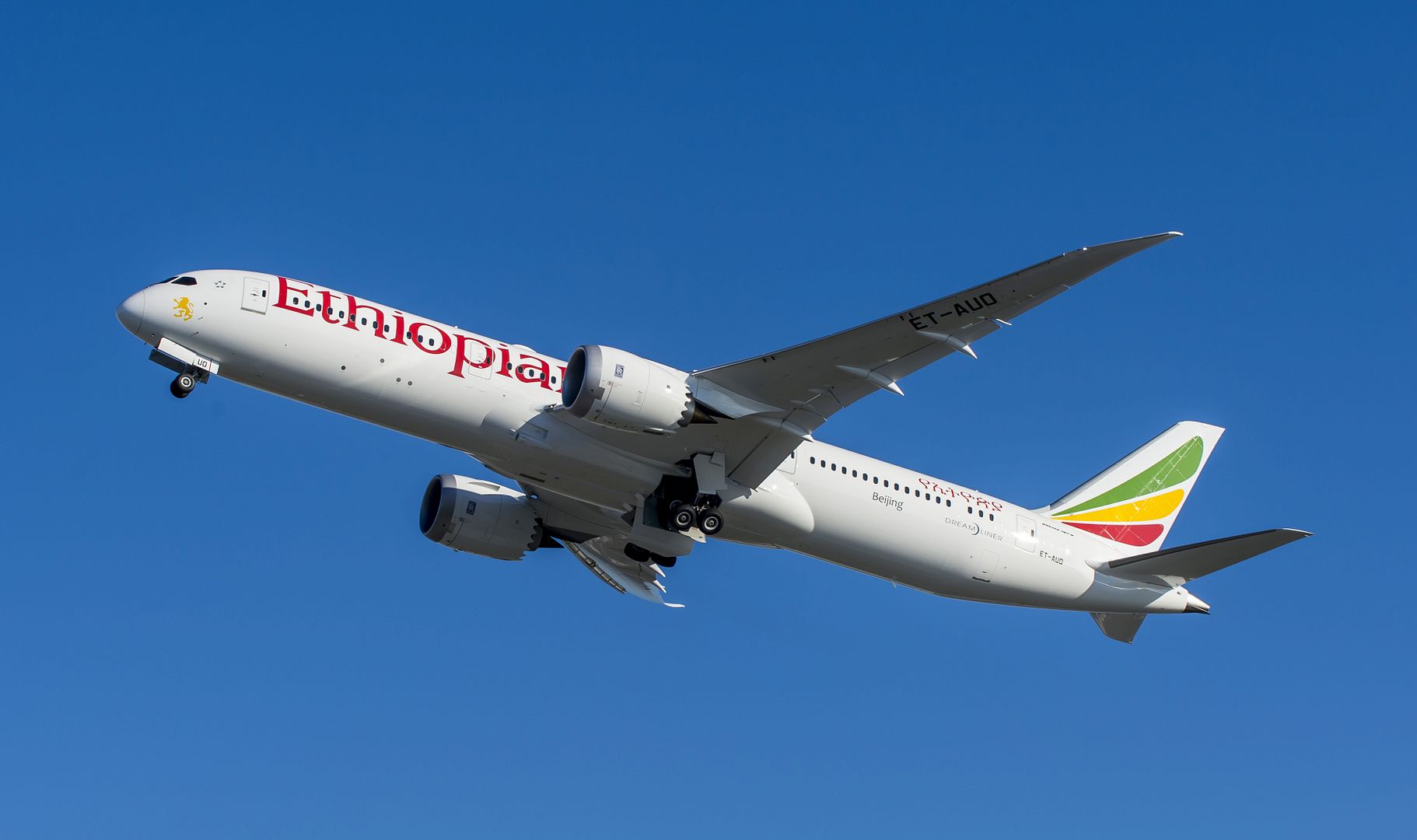
Defence and security company Saab announces that the Gripen E smart fighter flew supersonic for the first time. The aircraft broke the sound barrier over the Baltic Sea on the 18th October.
The Gripen E smart fighter flew at speeds greater than the speed of sound, at over Mach 1, as part of the ongoing flight trials programme. The purpose was to collect data from the aircraft as it achieved and sustained supersonic speed. The flight took place over the Baltic sea and the aircraft sustained supersonic speed for a number of minutes, whilst carrying out maneouvres, demonstrating the successful combination of the aicraft?s fighter design and its powerful engine.
?As Gripen pilots we are used to extreme speed but to go through the sound barrier for an aircraft?s first time is still a moment to enjoy. It is important that the aircraft handles the transition smoothly through what we call the transonic zone around the sound barrier and she certainly did, it was very smooth,? said Marcus Wandt, Test Pilot, Saab.
Welcoming the news, Jonas Hjelm, Senior Vice President and head of business area Aeronautics said, ?Individual milestones such as this supersonic flight demonstrate the thoroughness of our engineering approach and the validty of the modelling. It is further evidence that the Gripen E flight test programme is going extremely well, whilst the delivery schedule to our two customers remains our key focus.?
This milestone has been preceeded by over 20 flying hours since the first flight back on 15 June 2017.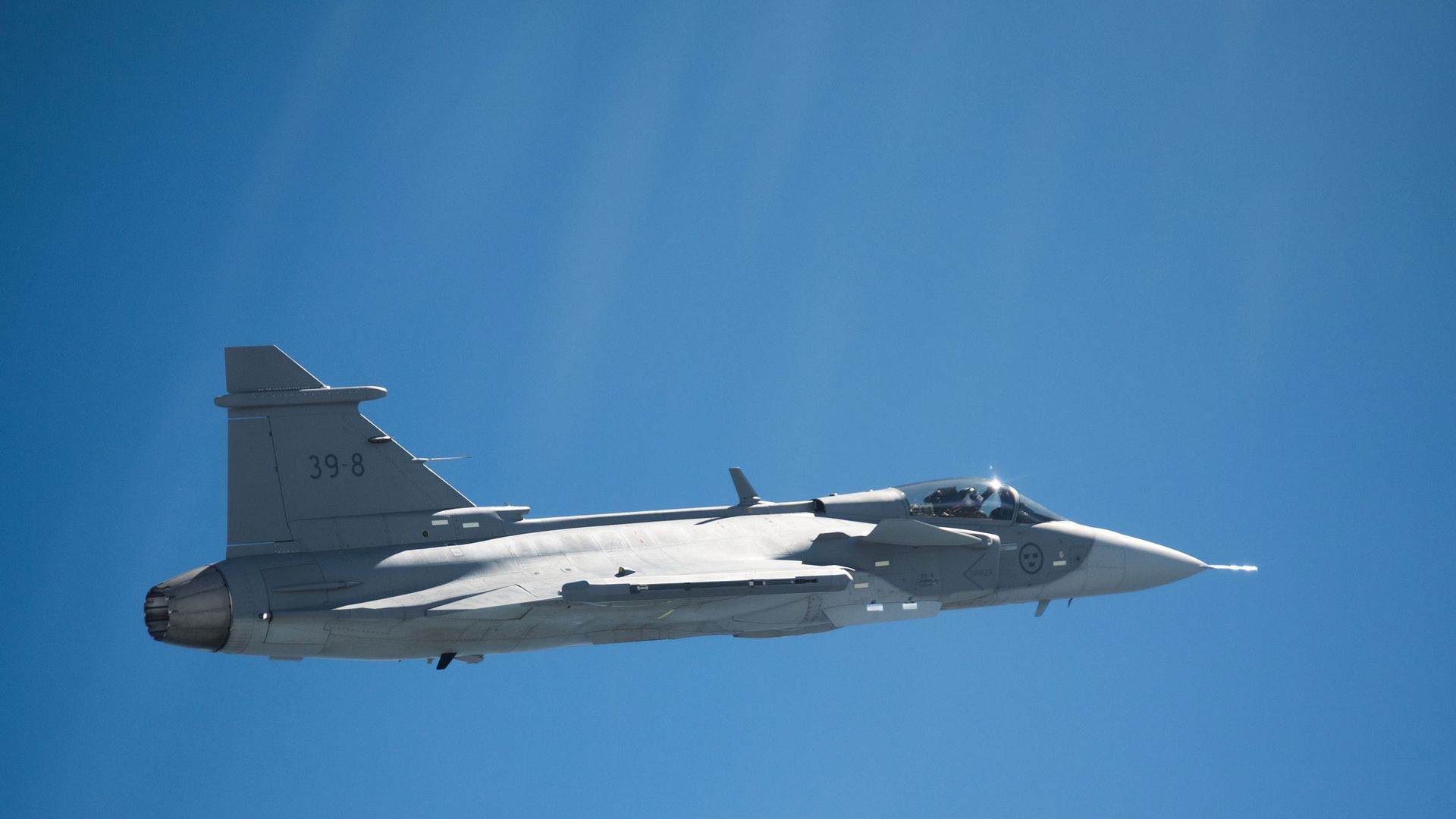
-
 Main AdminSAIPAN (Oct. 29, 2017) An MH-60S Sea Hawk, assigned to the Indians of Helicopter Sea Combat Squadron (HSC) 6, departs Saipan International Airport. HSC 6 is currently embarked on the aircraft carrier USS Theodore Roosevelt (CVN 71). Theodore Roosevelt is underway for a regularly scheduled deployment in the U.S. 7th Fleet area of operations in support of maritime security operations and theater security cooperation efforts. (U.S. Navy photo by Mass Communication Specialist 3rd Class Anthony J. Rivera/Released)
Main AdminSAIPAN (Oct. 29, 2017) An MH-60S Sea Hawk, assigned to the Indians of Helicopter Sea Combat Squadron (HSC) 6, departs Saipan International Airport. HSC 6 is currently embarked on the aircraft carrier USS Theodore Roosevelt (CVN 71). Theodore Roosevelt is underway for a regularly scheduled deployment in the U.S. 7th Fleet area of operations in support of maritime security operations and theater security cooperation efforts. (U.S. Navy photo by Mass Communication Specialist 3rd Class Anthony J. Rivera/Released)
An E-3 Sentry AWACS from the 964th Airborne Air Control Squadron (AACS), 552nd Air Control Wing (ACW), Tinker Air Force Base (AFB), Oklahoma, sits on the flightline next to an E-8C Joint STARS from Team JSTARS at Robins AFB, Ga, Oct. 26, 2017. The 964th AACS, along with aircraft maintainers from the 552nd Aircraft Maintenance Squadron and security forces Airmen from the 552nd ACW, flew out of Robins AFB while supporting Exercise Bold Quest. The exercise gave the 964th a chance to test new software and integrate with the E-8C Joint STARS. Team JSTARS, consisting the 116th ACW, Georgia Air National Guard, active duty Air Force 461st ACW, and ARMY JSTARS, provides joint airborne command and control, intelligence, surveillance, reconnaissance over land and water, and combat support forces to meet state and national objectives. (U.S. Air National Guard photo's by Senior Master Sgt. Roger Parsons)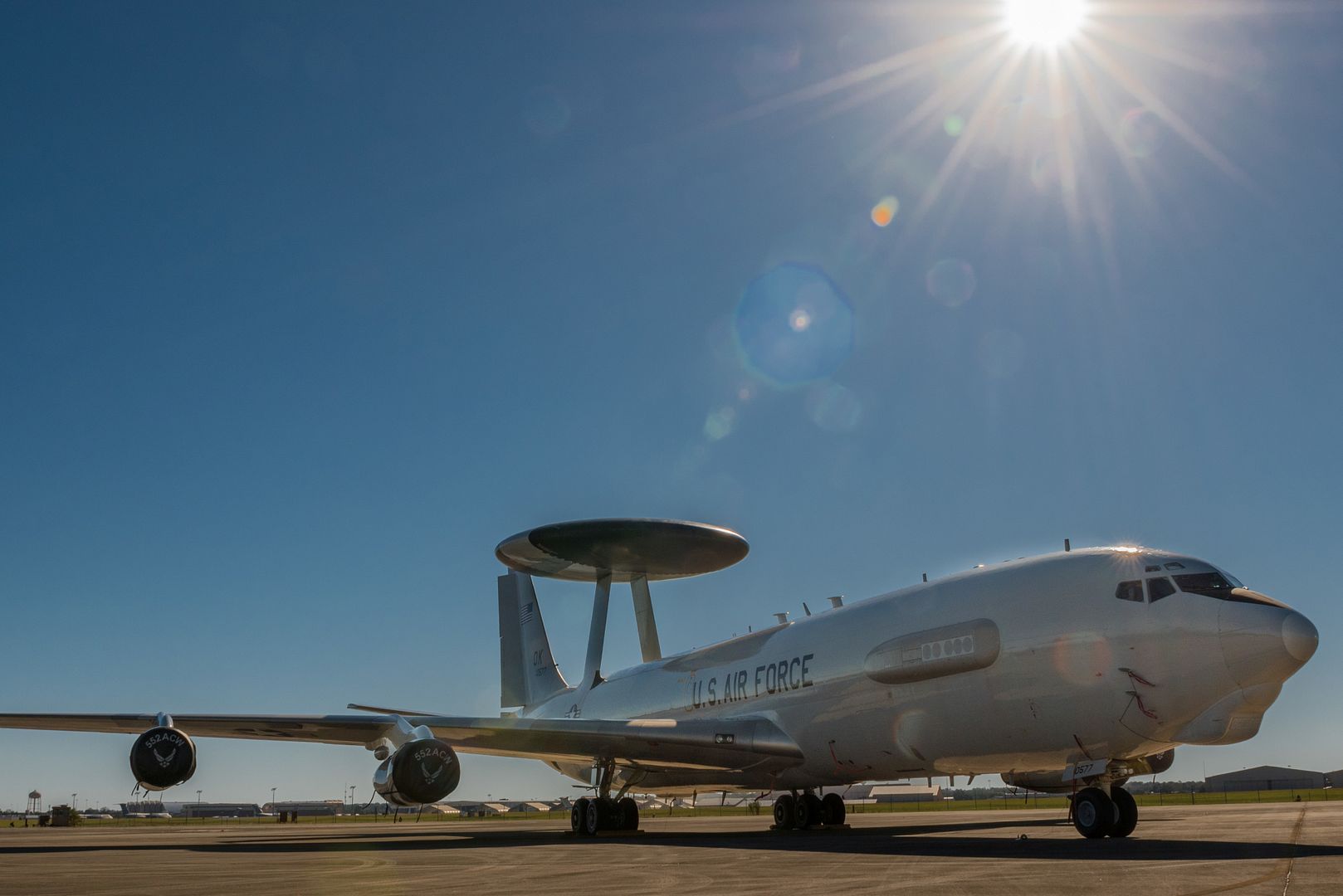
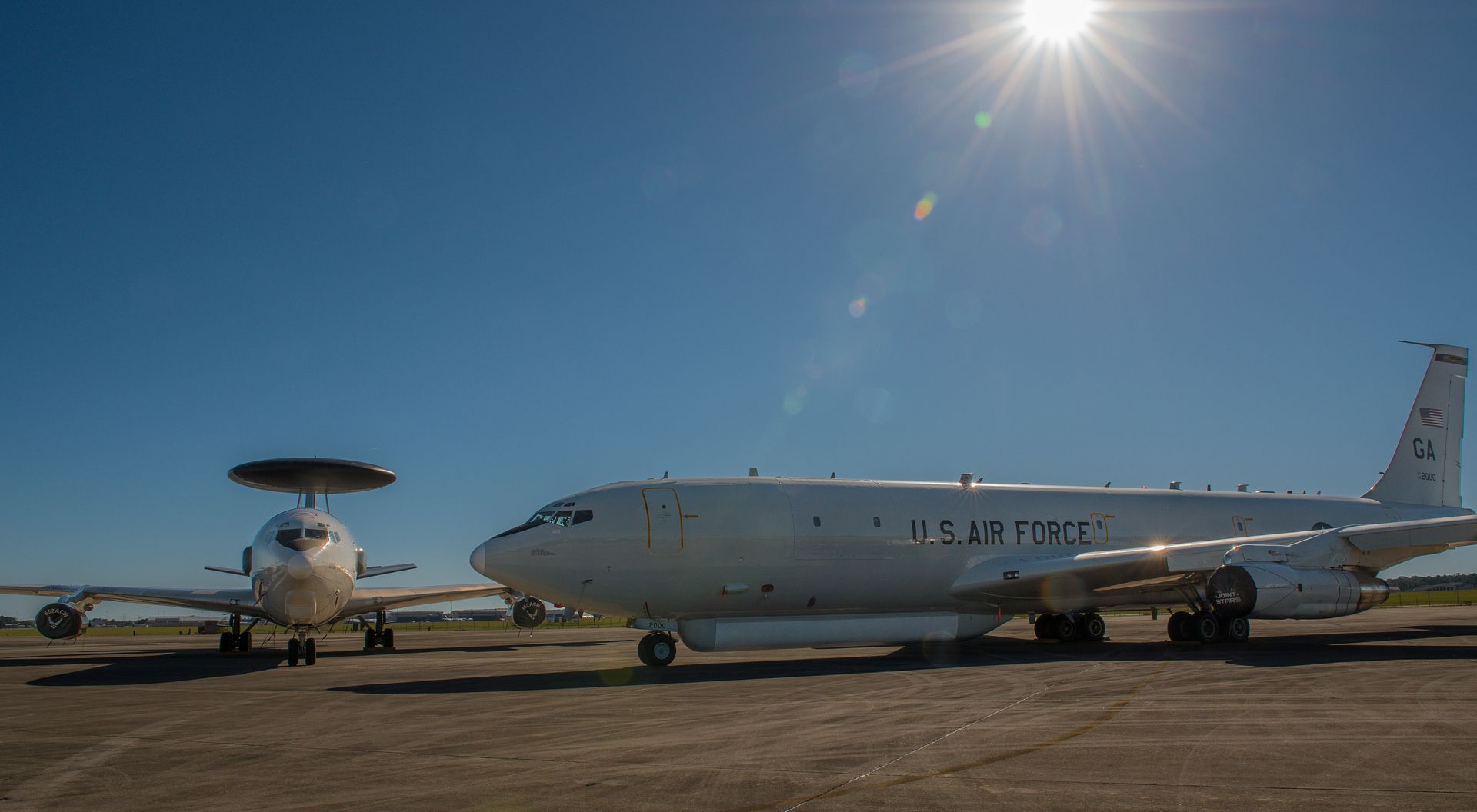
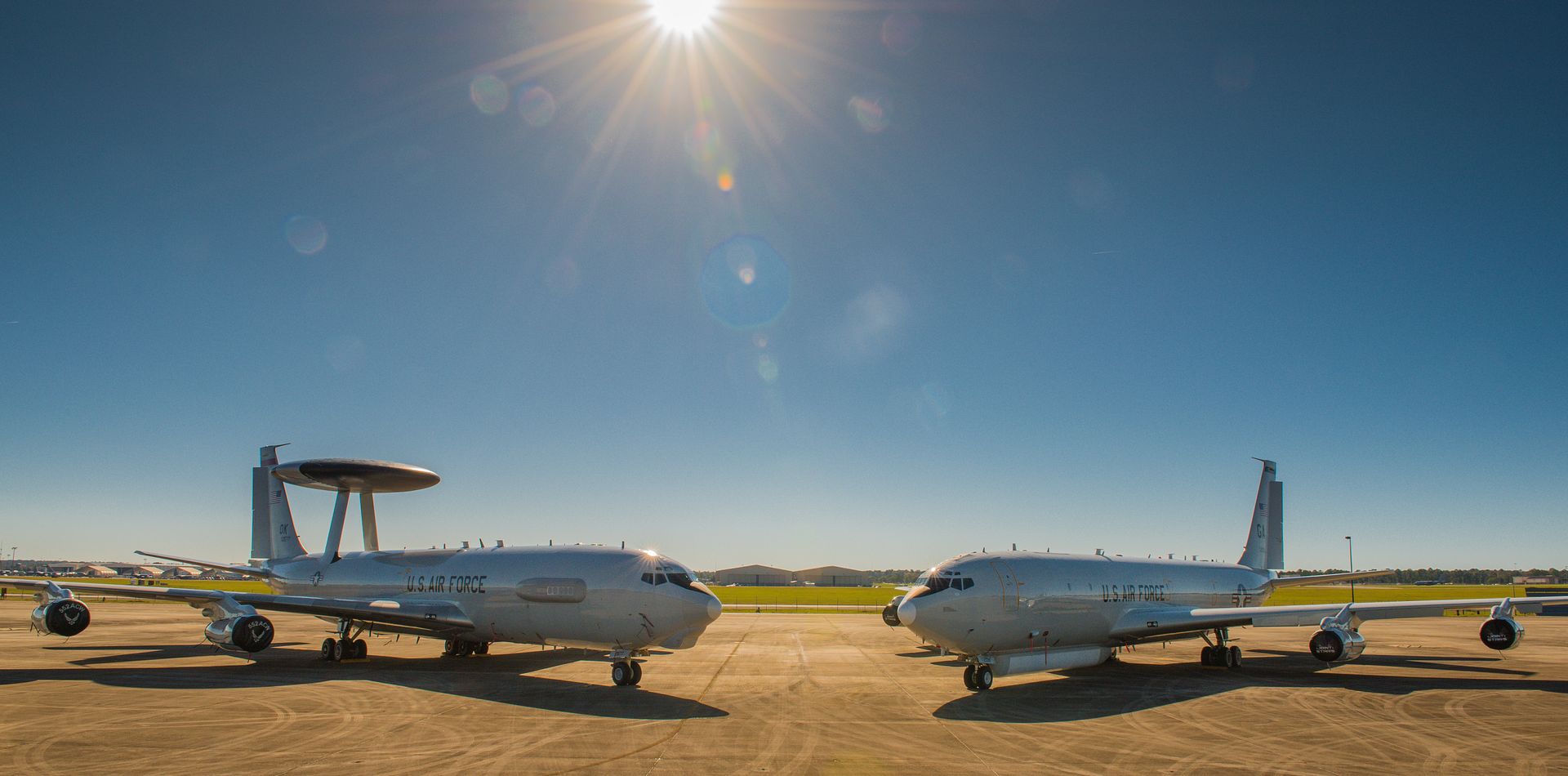
Hellenic air force F-16C Fighting Falcons fly alongside a U.S. Air Force KC-135 Stratotanker from the 100th Air Refueling Wing Oct. 26, 2017, over the Mediterranean Sea. During this flight, the KC-135 participated in aerial refueling training with 22 F-16s. (U.S. Air Force photo by Senior Airman Tenley Long)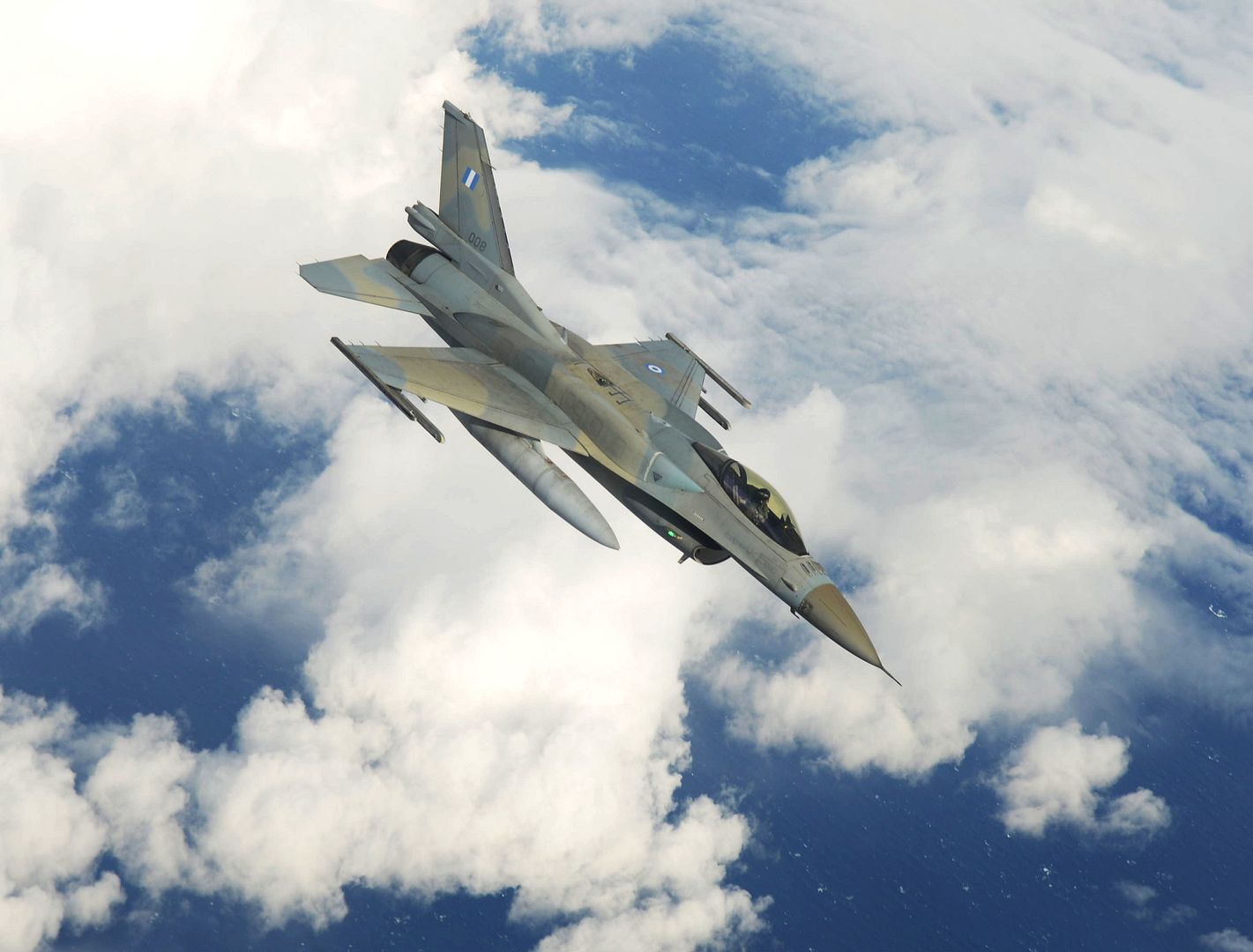
A Hellenic air force F-16D Fighting Falcon prepares to take on fuel from a U.S. Air Force KC-135 Stratotanker Oct. 26, 2017, over the Mediterranean Sea. During this flight, the KC-135 participated in aerial refueling training with 22 F-16s. (U.S. Air Force photo by Senior Airman Tenley Long)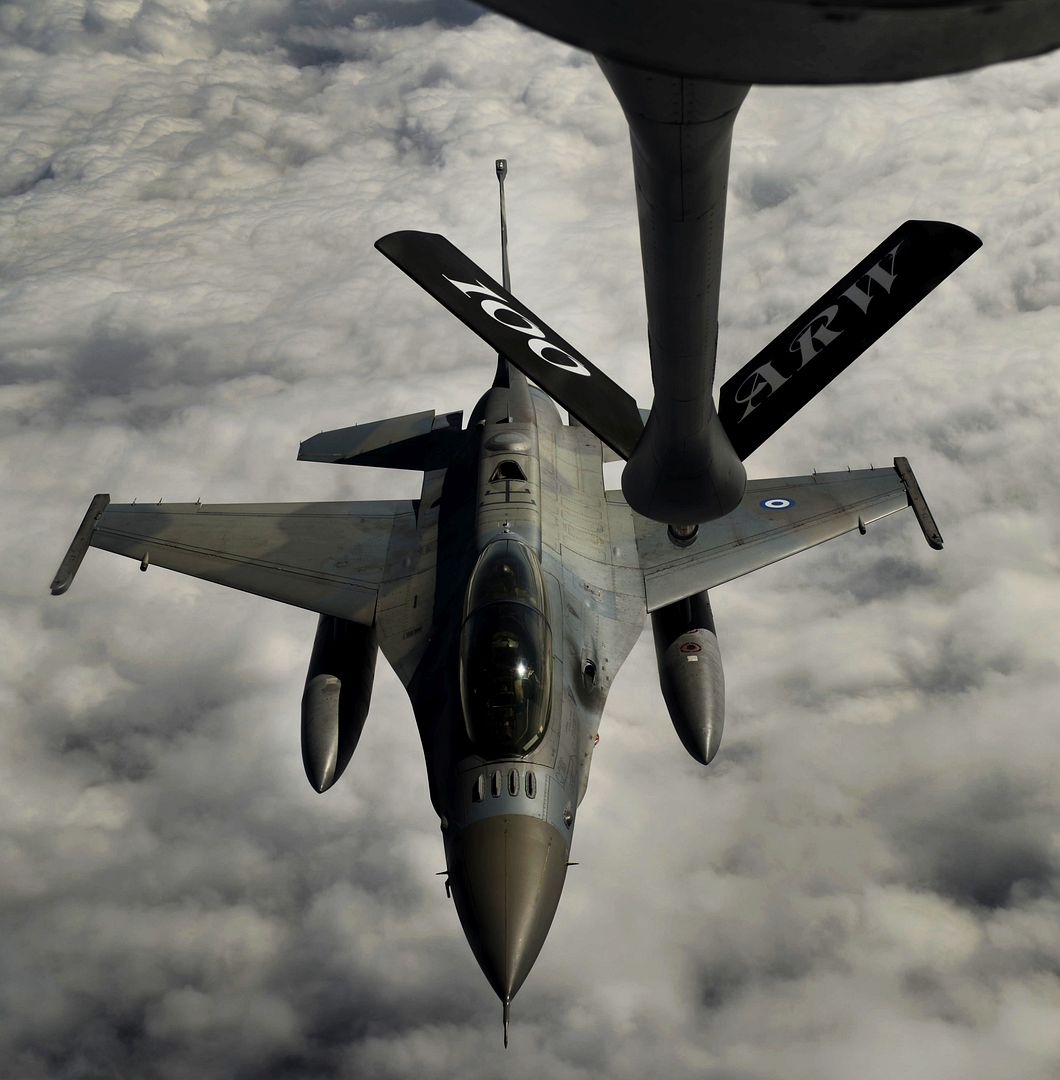
S?o Jos? dos Campos, Brazil, October 31st, 2017 ? Embraer and American Airlines Inc. signed a firm order for ten E175 jets. American Airlines is exercising its purchase rights from its original contract with Embraer signed in 2013. This new order is in addition to the one placed in April for four aircraft; is valued at USD 457 million, based on current list prices, and will be included in Embraer?s fourth-quarter backlog. Deliveries begin in 2018 and continue through mid-2019. Combined with the airline?s two previous orders for the E175, this new contract results in a total of 74 E175s for American Airlines. American Airlines selected Envoy, a wholly owned subsidiary of American Airlines Group Inc., to operate the ten aircraft, which will be configured with 12 First Class, 20 Main Cabin Extra, and 44 Main Cabin seats, for a total of 76 seats. ?Because of its excellent operational performance, the E175 has proven to be the right solution for American. This repeat order demonstrates the confidence that the airline has in Embraer and in the E175,? said Charlie Hillis, Vice President, Sales & Marketing, North America, Embraer Commercial Aviation. ?We are proud to be part of American Airlines Inc.?s overall fleet vision and are dedicated to serving their business needs.? Including this new contract, Embraer has sold more than 390 E175 jets to airlines in North America since January 2013, earning more than 80% of all orders in the 76-seat jet segment. Since entering revenue service, the E-Jets family has received more than 1,800 orders and over 1,300 aircraft have been delivered. Today, E-Jets are flying in the fleet of 70 customers in 50 countries. The versatile 70 to 150-seat family is flying with low-cost airlines as well as with regional and mainline carriers.
-
 Main AdminOWEGO, N.Y., Nov. 1, 2017 /PRNewswire/ -- Lockheed Martin (NYSE: LMT) received a $158.5 million contract for the second phase of the German Navy P-3C Mission System Refresh program. The program will upgrade the mission system processing suites on the fleet of eight P-3C Orion maritime patrol aircraft to support operations through 2035. The Mission System Refresh is part of an overall fleet upgrade that includes structural mid-life upgrades as well as an upgrade to the Instrument Flight Rules (IFR) cockpit capability.
Main AdminOWEGO, N.Y., Nov. 1, 2017 /PRNewswire/ -- Lockheed Martin (NYSE: LMT) received a $158.5 million contract for the second phase of the German Navy P-3C Mission System Refresh program. The program will upgrade the mission system processing suites on the fleet of eight P-3C Orion maritime patrol aircraft to support operations through 2035. The Mission System Refresh is part of an overall fleet upgrade that includes structural mid-life upgrades as well as an upgrade to the Instrument Flight Rules (IFR) cockpit capability.
The Germany P-3C Orion Mission System Refresh Program will include the design, development, manufacture, integration, installation and test of the Lockheed Martin Airborne Tactical Mission System. The majority of the hardware and software design, manufacture and upgrades will be performed at Lockheed Martin sites in Owego, New York, Manassas, Virginia and Marietta, Georgia.
"The P-3 Orion has been the world standard in maritime surveillance for over 50 years. Lockheed Martin is dedicated to providing solutions and critical needs that our U.S. Navy and international customers rely on to carry out these critical missions," said Mike McGuire, Lockheed Martin Rotary and Mission Systems Germany P-3 program manager. "The Mission System Refresh provides critical surveillance capabilities, reduces hardware footprint and supports continued future system sustainment."
The Airborne Tactical Mission System is an Open Architecture JAVA-based system that provides state-of-the-art software programs as well as core mission system processing, display and control components. By leveraging Commercial-Off-The-Shelf (COTS) components, future obsolescence costs are reduced thereby supporting the long-term system sustainability for the customer. In addition to the Airborne Tactical Mission System, the Mission System Refresh will include a new acoustic processing system called the Airborne Rack-Mounted Commercial Portable Processor (AR-C2P) that will provide long-term sustainability in the P-3 aircraft.
The Germany P-3 Orion Mission System Refresh Program began in 2016 when the U.S. Navy awarded Lockheed Martin an initial Foreign Military Sales (FMS) contract for $54.9 million for design and development work through Preliminary Design. This current contract award of $158.5 million takes the program from Preliminary Design Review through program completion in 2022. The eight aircraft operated by the German Navy were procured in early 2006 from the Royal Netherlands Navy. The P-3 boasts a number of international customers; a number of whom envision operating their aircraft though 2040.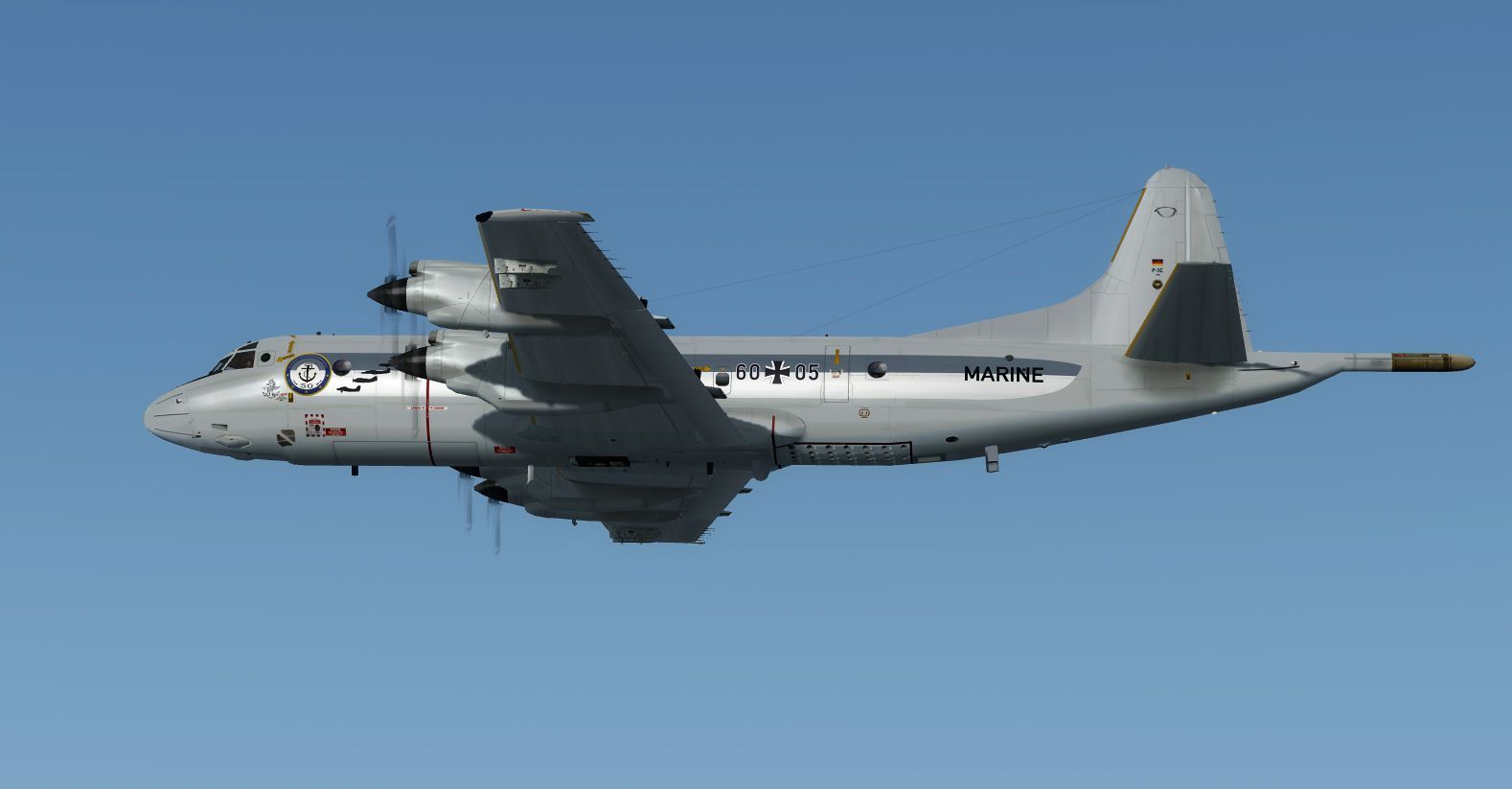
BAE Systems has begun production of its sensor technology for the Long Range Anti-Ship Missile (LRASM) following a $40 million order from prime contractor Lockheed Martin. The sensor enables the missile to seek and attack specific high-threat maritime targets within groups of ships, including those protected by sophisticated anti-aircraft systems. The missile?s range, survivability, and lethality capabilities are designed to help warfighters more effectively conduct missions in denied environments from beyond the reach of return fire ? meeting a pressing need for both the U.S. Navy and U.S. Air Force.
LRASM is a next-generation, precision-guided stealth missile capable of semi-autonomously detecting and identifying targeted enemy ships. The precision routing and guidance technology of the sensor ? which doesn?t rely exclusively on intelligence, surveillance, and reconnaissance systems, networking links, or GPS navigation ? enables the missile to operate effectively in contested domains and all weather conditions, day or night.
?The production of our advanced sensor for LRASM is a testament to the strength of our technology and our ability to transition the capability from airframes to missiles,? said Joseph Mancini, LRASM program manager at BAE Systems. ?Precision guidance and advanced electronics are areas where we have leading capabilities, and where we can provide warfighters with an advantage on the battlefield.?
BAE Systems? advanced mid-course sensor technology incorporates the company?s software and hardware capabilities designed for the world?s leading electronic warfare aircraft platforms. The sensor system also represents the company?s approach to bringing precision guidance to small platforms and builds on the company?s expertise in signal processing and target detection and location.
As part of BAE Systems? close work with LRASM prime contractor Lockheed Martin, the company provided the sensor technology that supported a recent successful demonstration of the anti-ship missile. The launch demonstrates LRASM?s ability to address the Navy's need for versatile, multi-platform precision munitions that enable distributed operations.
Work on the sensor technology will be conducted at BAE Systems? facilities in Nashua, New Hampshire and Wayne, New Jersey.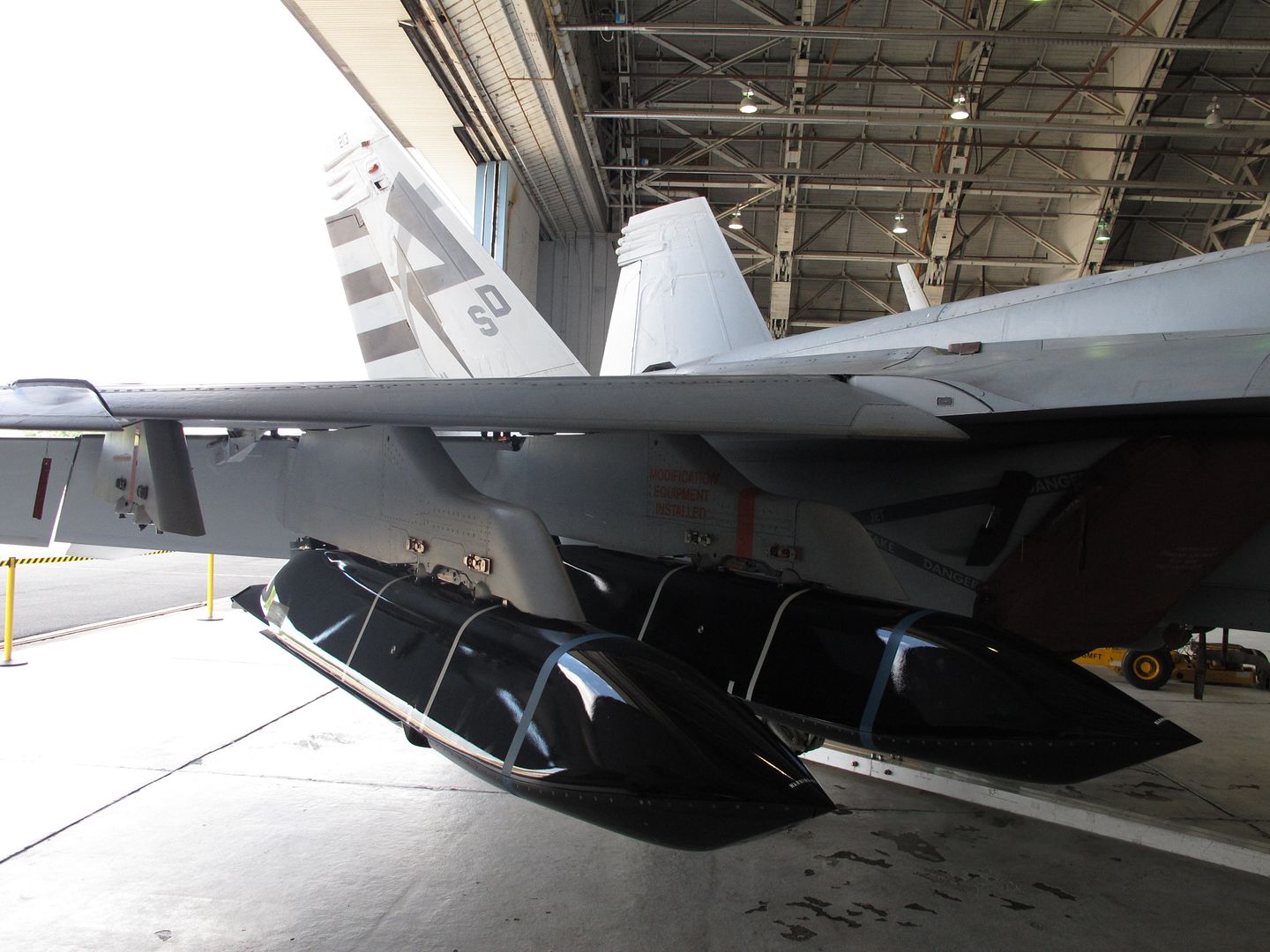
-
 Main AdminATLANTIC OCEAN (Oct. 30, 2017) An EA-18G Growler assigned to the "Rooks" of Electronic Attack Squadron (VAQ) 137 prepares to land aboard the aircraft carrier USS Harry S. Truman (CVN 75). Harry S. Truman has successfully completed tailored shipboard test availability and final evaluation problem and is underway preparing for future operations. (U.S. Navy photo by Mass Communication Specialist 2nd Class Anthony Flynn/Released)
Main AdminATLANTIC OCEAN (Oct. 30, 2017) An EA-18G Growler assigned to the "Rooks" of Electronic Attack Squadron (VAQ) 137 prepares to land aboard the aircraft carrier USS Harry S. Truman (CVN 75). Harry S. Truman has successfully completed tailored shipboard test availability and final evaluation problem and is underway preparing for future operations. (U.S. Navy photo by Mass Communication Specialist 2nd Class Anthony Flynn/Released)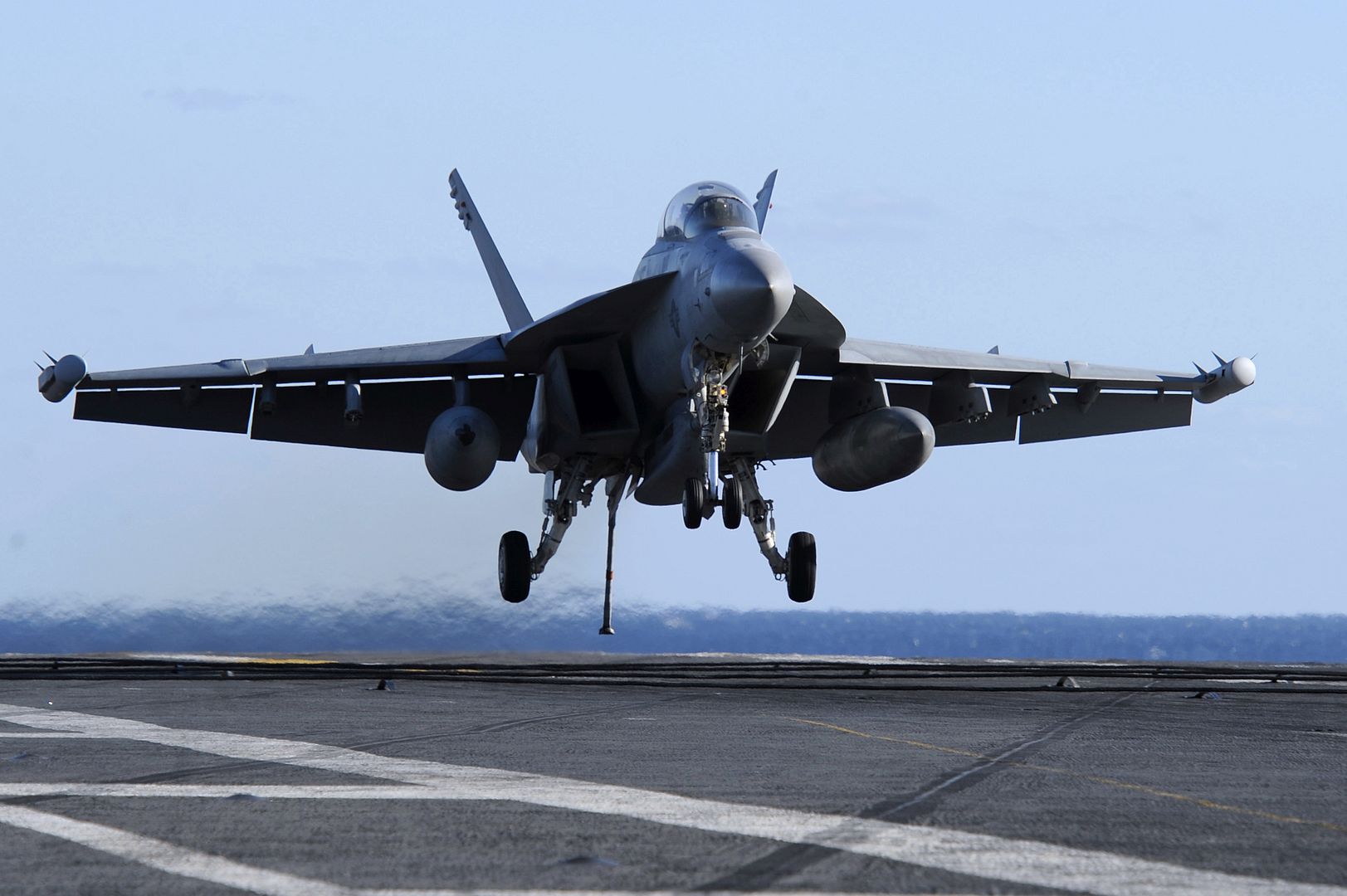
ATLANTIC OCEAN (Oct. 26, 2017) A T-45C ?Goshawk? from Commander, Naval Air Training Detachment performs a touch-and-go on the flight deck of the Nimitz-class aircraft carrier USS Abraham Lincoln (CVN 72). The ship is underway conducting carrier qualifications and training. (U.S. Navy photo by Mass Communication Specialist Seaman Shane C. Bryan/Released)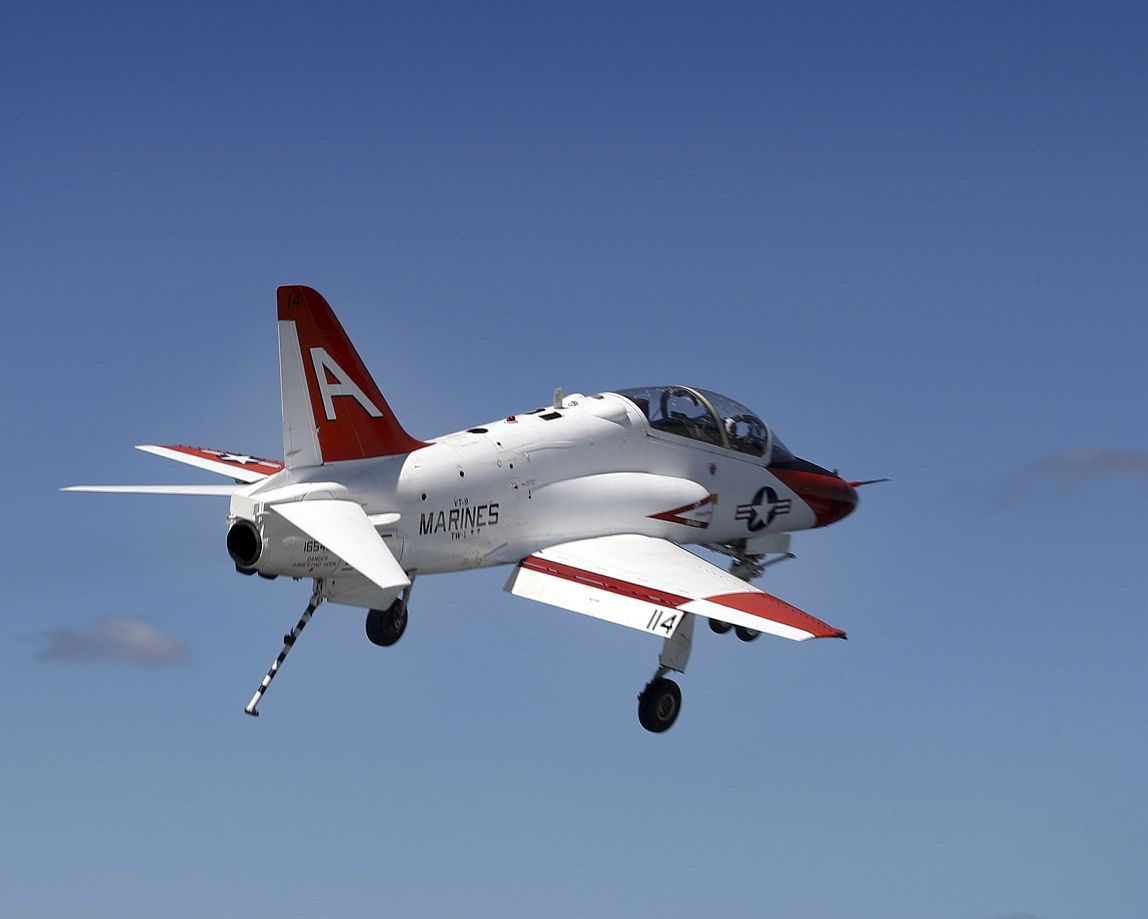
An F-16 Fighting Falcon, from the 77th Expeditionary Fighter Squadron, Shaw Air Force Base, South Carolina, taxis on the runway at Bagram Airfield, Afghanistan. The 77th EFS provides counterterrorism operations in the Afghanistan and enables a successful train, advise and assist campaign. (U.S. Air Force photo by Staff Sgt. Benjamin Gonsier)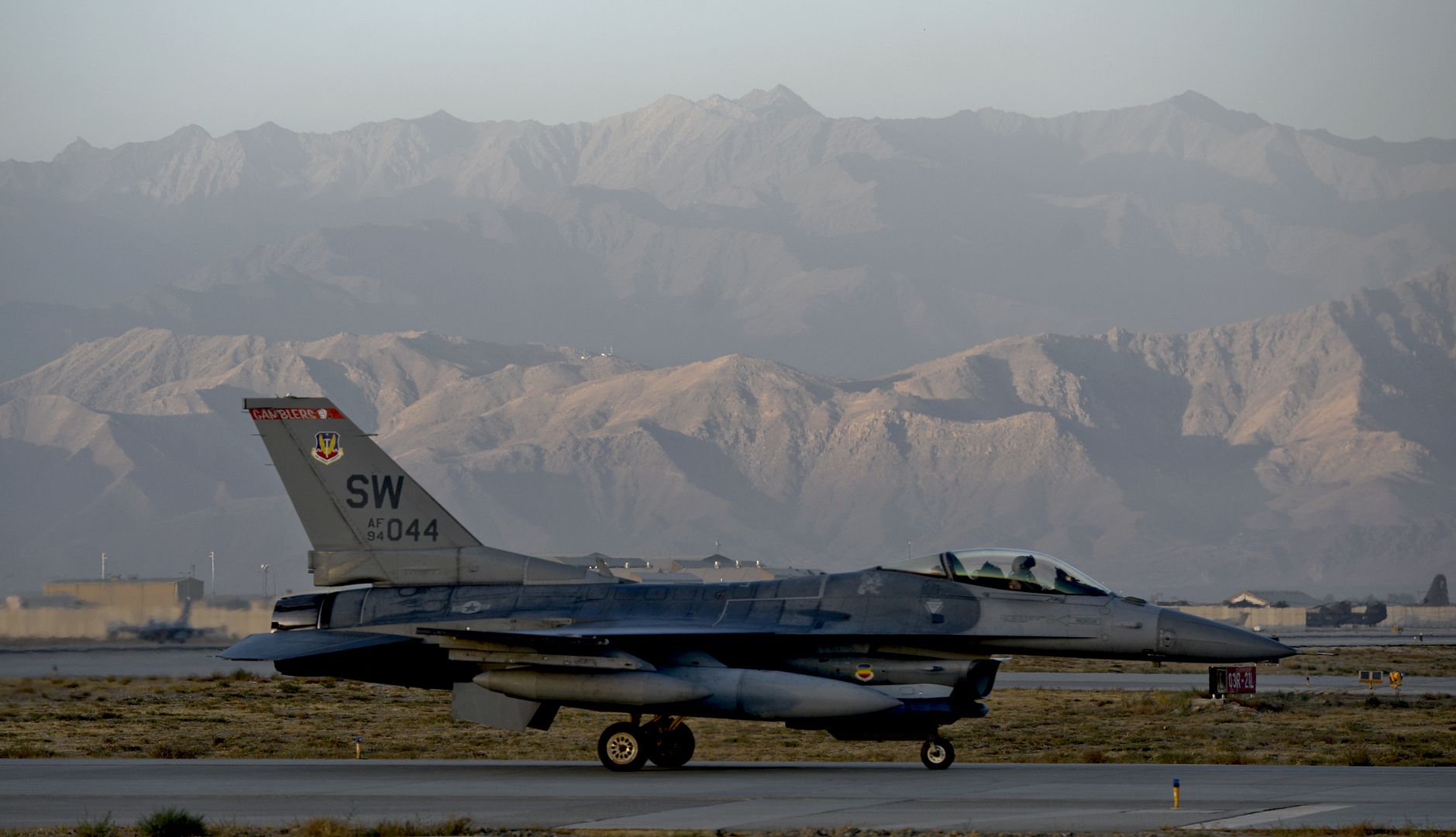
An EA-18G Growler waits to be fueled by a KC-10 Extender over Syria, Oct. 27, 2017. The Growler provides tactical jamming and electronic protection to U.S. military forces and allies around the world. (U.S. Air Force photo by Tech. Sgt. Anthony Nelson Jr.)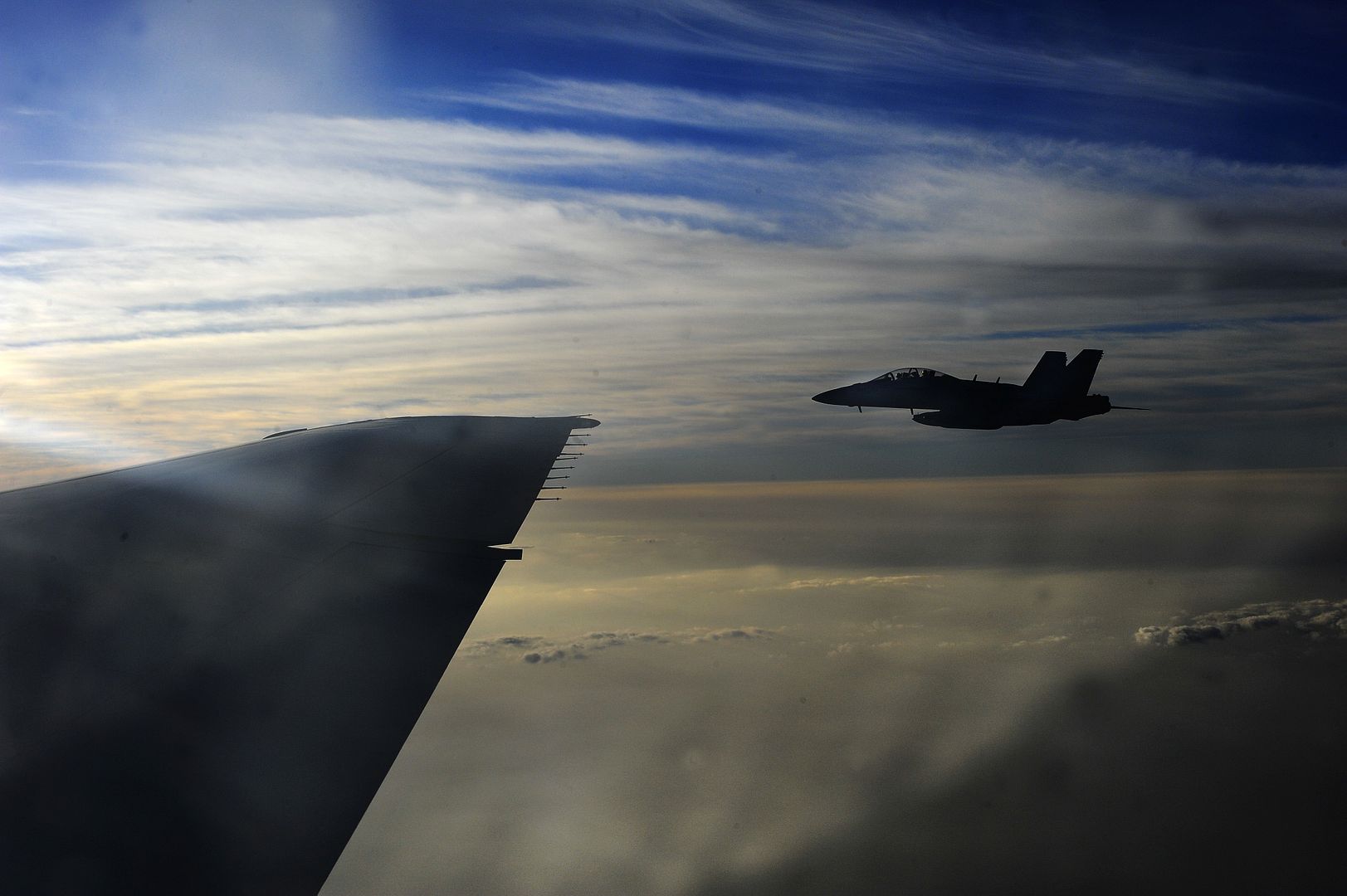
A U.S. Air Force F-35A Lightning II, deployed from Hill Air Force Base, Utah, prepares to park at Joint Base Pearl Harbor-Hickam, Hawaii, Oct. 30, 2017. A dozen F-35As and approximately 300 Airmen are on their way to Kadena Air Base, Japan, deployed under U.S. Pacific Command's (PACOM) Theater Security Package program, which has been in operation since 2004. This marks PACOM?s first operational tasking for the F-35A and builds upon the successful debut of the fifth-generation stealth fighter in the Indo-Asia-Pacific region at the Seoul International Aerospace & Defense Exhibition earlier this month. (U.S. Air Force photo by Staff Sgt. Jack Sanders)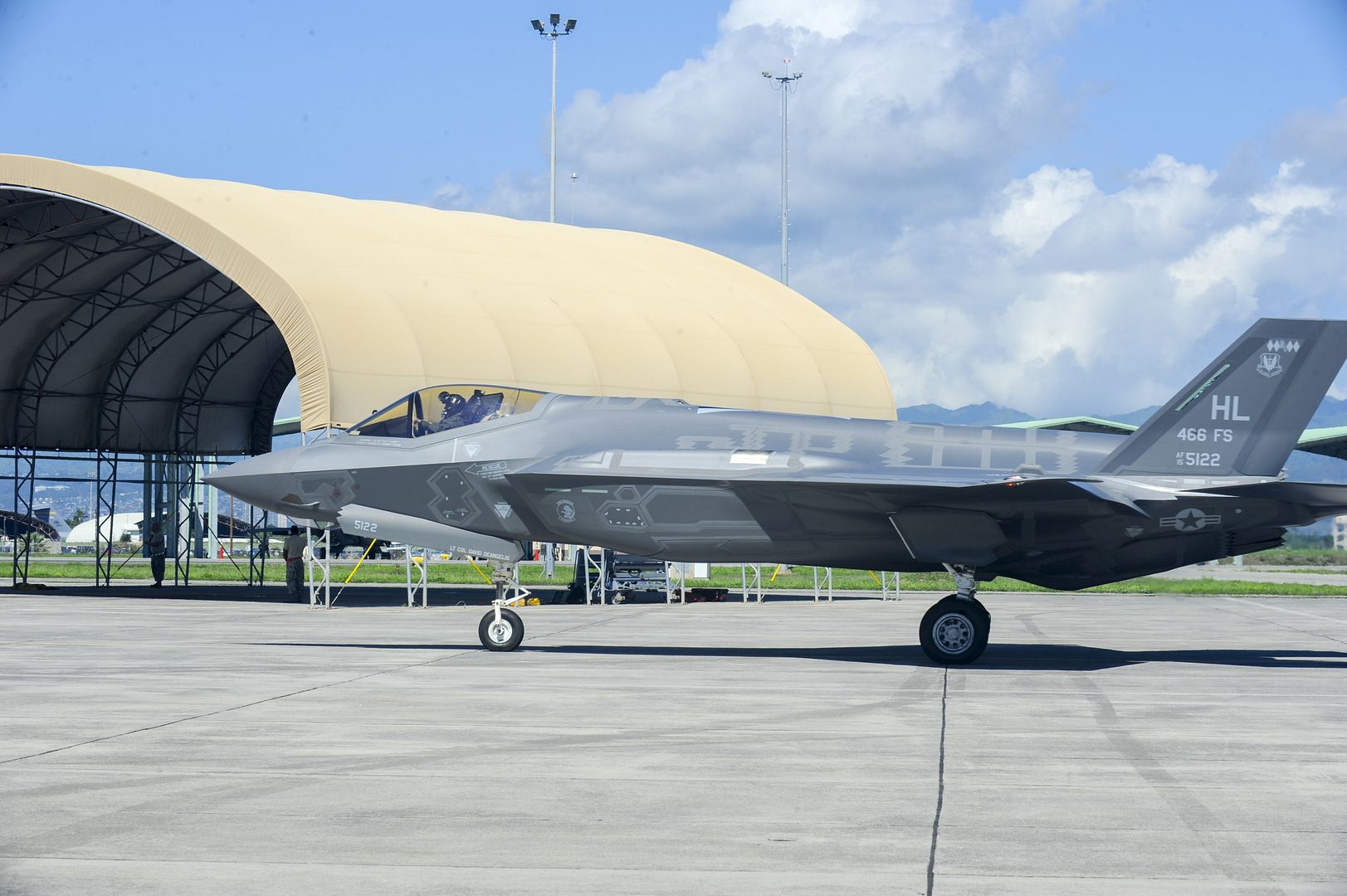
An Air Force C-130J Super Hercules touches down at Yokota Air Base, Japan, Nov. 1, 2017. This is the seventh C-130J delivered to Yokota and the first from Little Rock Air Force Base, Ark., as part of fleet-wide redistribution of assets set in motion by Air Mobility Command. (U.S. Air Force photo by Yasuo Osakabe)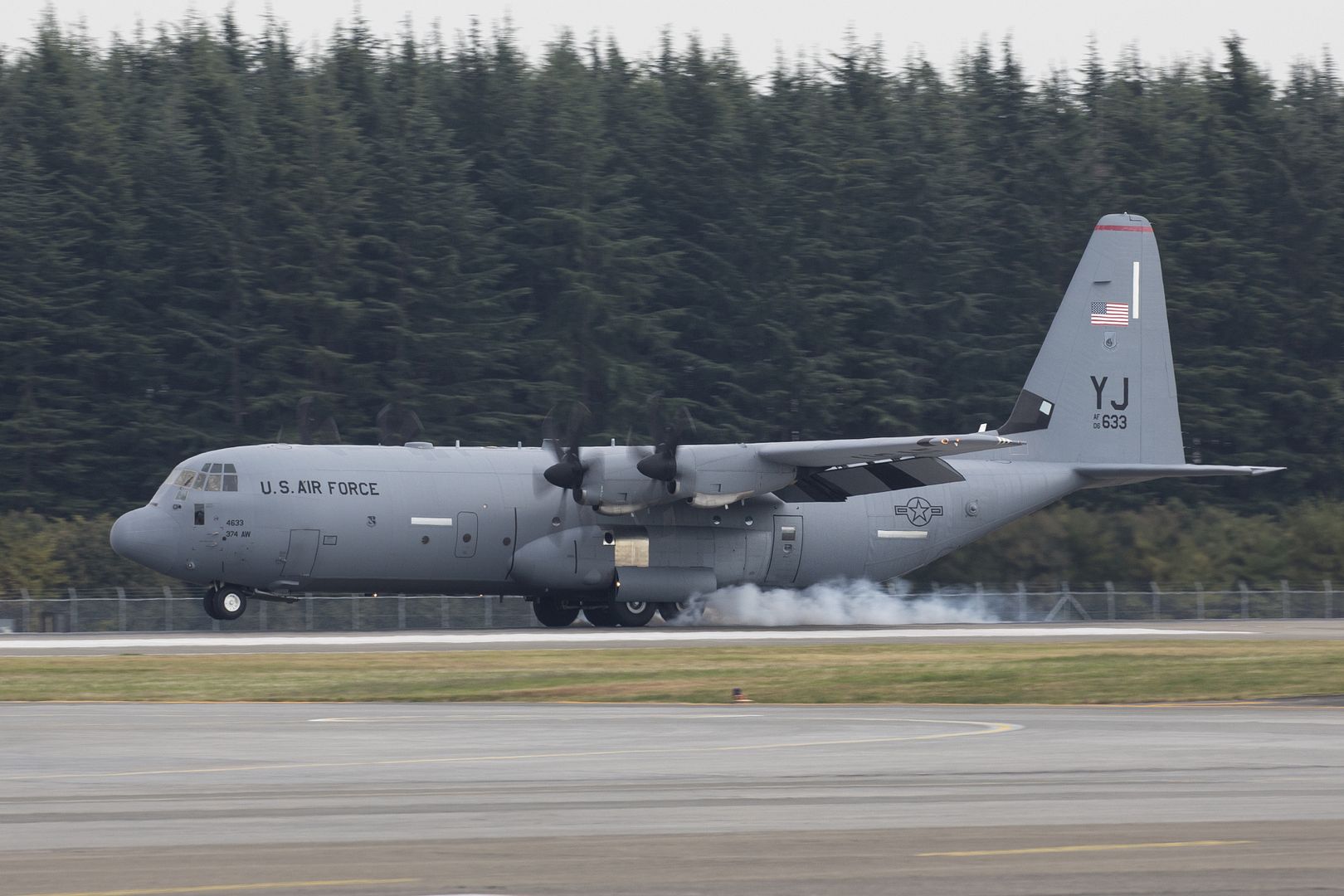
The A350-1000, the newest member of Airbus? leading Widebody family, has successfully completed its Functional & Reliability testing, bringing the aircraft a step closer to Type Certification in November 2017. The first customer delivery to Qatar Airways will follow in the coming weeks.
The Functional and Reliability Testing took the flight test aircraft, MSN065, across Europe and South America. The A350-1000 completed its exercise after landing in Toulouse, France on November 1st (07:00 UTC) coming from Barranquilla, Colombia. In less than two weeks the aircraft flew approximately 35,200 nm / 65,200 km representing 150 flight hours, as per certification requirements.
These latest tests were part of an intensive Flight Test campaign which started less than one year ago designed to demonstrate readiness for airline operations. These included: high airfield performance, auto-landing trials, airport turnaround and handling services, cabin systems, navigation and connectivity function performance.
The A350-1000 test flight was operated by Airbus flight test crews with the participation of Airworthiness Authority pilots from the European Aviation Safety Agency (EASA).
The A350-1000 is the latest member of Airbus? leading widebody family, showing high level of commonality with the A350-900 with 95% common systems part numbers and Same Type Rating. As well as having a longer fuselage to accommodate 40 more passengers than the A350-900 (in a typical 3-class configuration), the A350-1000 also features a modified wing trailing-edge, new six-wheel main landing gears and more powerful Rolls-Royce Trent XWB-97 engines. Along with the A350-900, the A350-1000 is shaping the future of air travel by offering unprecedented levels of efficiency and unrivalled comfort in its ?Airspace? cabin. With its additional capacity the A350-1000 is perfectly tailored for some of the busiest long-haul routes. To date 11 customers from five continents have placed orders for a total of 169 A350-1000s.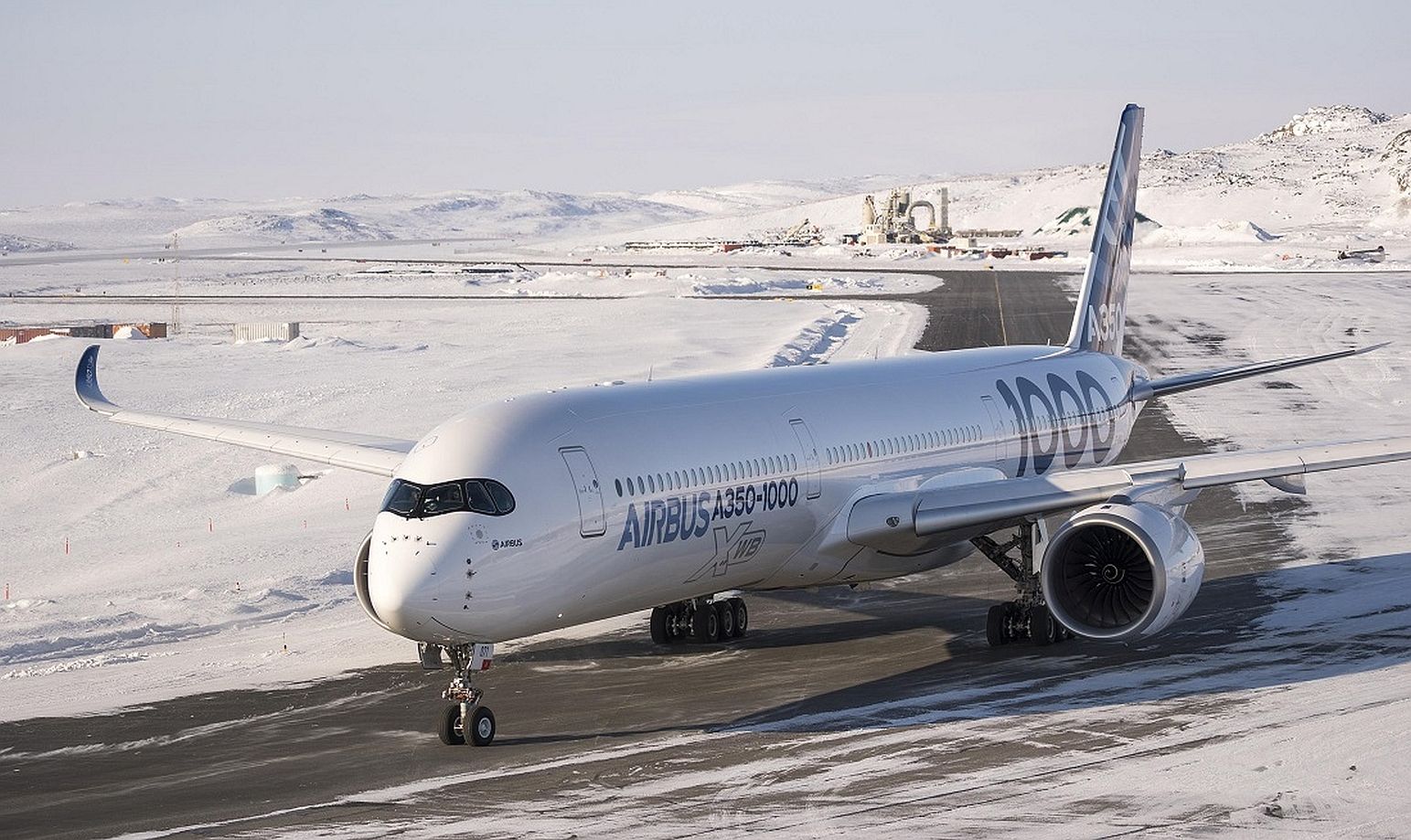
A series of live firings of the MBDA Brimstone precision strike missile from a Eurofighter Typhoon have been completed successfully, adding enhanced capability to the aircraft.
The trials, conducted from BAE Systems? Military Air & Information at Warton, Lancashire, UK, form part of a programme of new enhancements which will be rolled out across the Royal Air Force (RAF), ensuring Typhoon remains at the cutting edge of combat capability.
Brimstone will provide Typhoon with a low collateral, pin-point accurate air-to-surface weapon, further enhancing the aircraft?s already combat-proven swing-role performance. Planning for the next stages of work on Brimstone - including evaluation by the RAF in mid-2018 - is now underway ahead of its entry into service.
Andy Flynn, Eurofighter Capability Delivery Director, BAE Systems, said: ?To complete this milestone is testament to the expertise and dedication of our people and the value of working closely with our partners. Brimstone will add a low-collateral, high precision strike capability and ensure Typhoon remains fit to meet the threats of the future for decades to come.?
Brimstone is part of the Phase 3 Enhancement (P3E) package which also includes mission system and sensor upgrades. P3E is the final part of Project Centurion ? the programme to ensure a smooth transition of Tornado GR4 capabilities on to Typhoon for the RAF.
In total nine firings and nine jettison trials, which began in July, have been completed, with support from the UK Ministry of Defence, MBDA, QinetiQ, Eurofighter GmbH and the Eurofighter Partner Companies ? Airbus and Leonardo.
The aim of the trials was to provide weapons integration clearance for operational use. They covered a range of specific release scenarios, testing at various heights, speeds, levels of G-force and in different positions on the aircraft wing and in the launcher. The nine firings have also been used to perform data analysis and models of the weapon?s performance. Further flight trials will take place in early 2018, followed by operational evaluation by the RAF.
Operational evaluation of the Phase 2 Enhancement (P2E) package with the with RAF?s 41(R) Squadron ? the Test and Evaluation Squadron ? at RAF Coningsby, Lincolnshire, UK, is continuing and will include live firings ahead of roll out to the UK fleet. The P2E package includes MBDA?s Meteor Beyond Visual Range air-to-air missile and the Storm Shadow deep strike stand-off air-to-surface missile.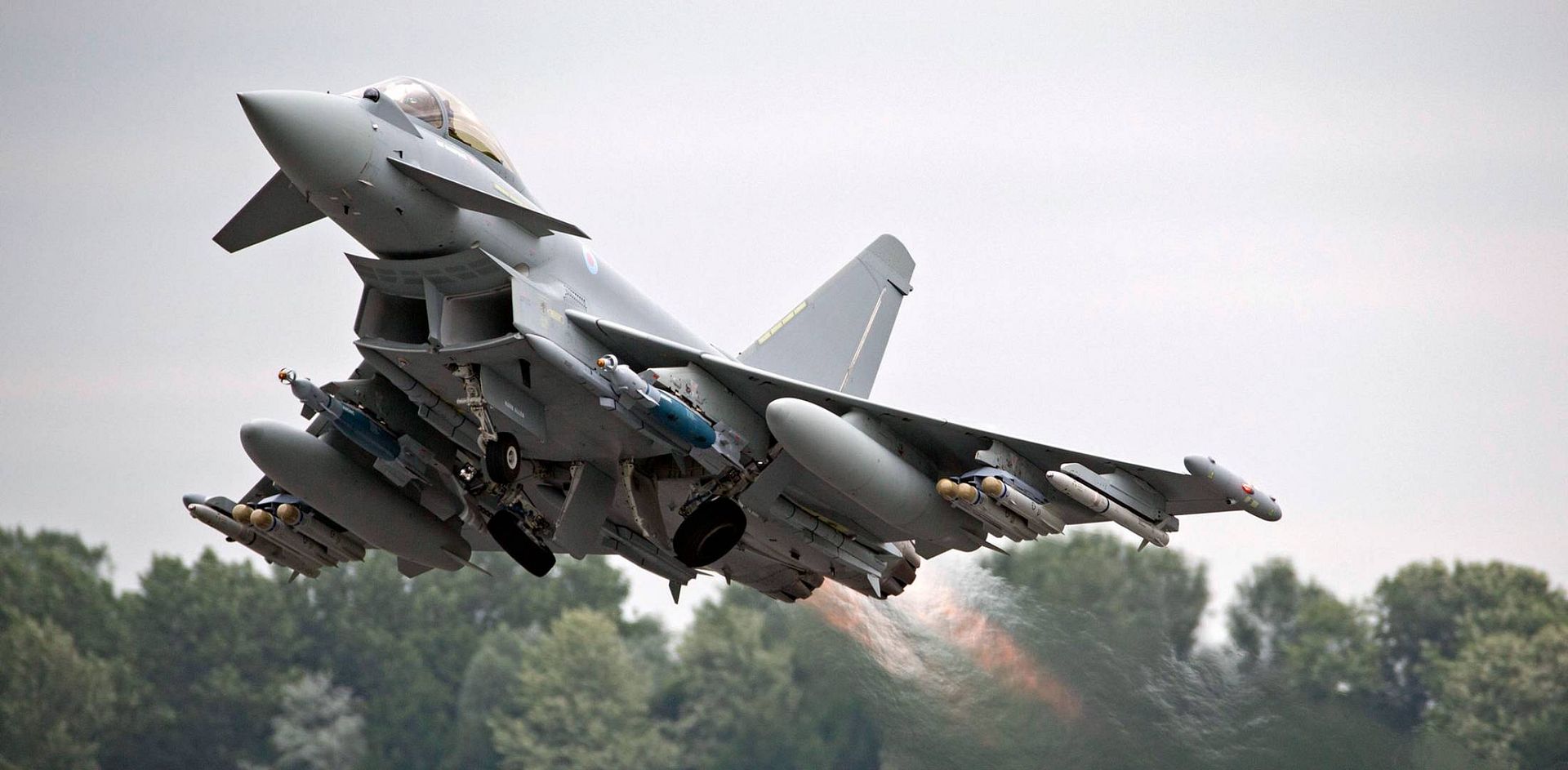
Post a reply
- Go to Previous topic
- Go to Next topic
- Go to Welcome
- Go to Introduce Yourself
- Go to General Discussion
- Go to Screenshots, Images and Videos
- Go to Off topic
- Go to Works in Progress
- Go to Skinning Tips / Tutorials
- Go to Skin Requests
- Go to IJAAF Library
- Go to Luftwaffe Library
- Go to RAF Library
- Go to USAAF / USN Library
- Go to Misc Library
- Go to The Ops Room
- Go to Made in Germany
- Go to Campaigns and Missions
- Go to Works in Progress
- Go to Juri's Air-Raid Shelter
- Go to Campaigns and Missions
- Go to Works in Progress
- Go to Skinpacks
- Go to External Projects Discussion
- Go to Books & Resources
